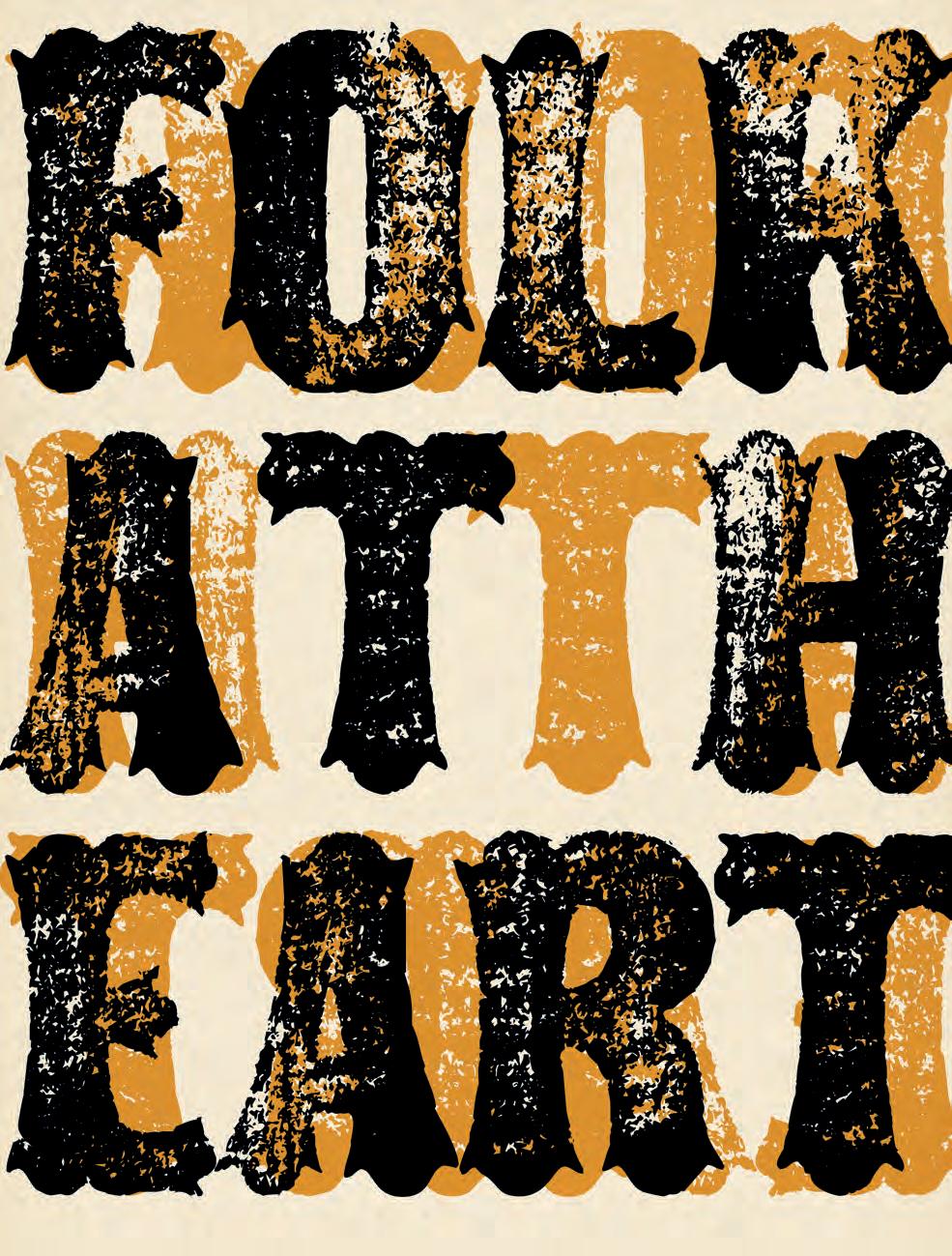

THE SCOTTISH GALLERY
 Tracey Johnston, Burns and his Mary, cat 70 (detail)
Tracey Johnston, Burns and his Mary, cat 70 (detail)



 Tracey Johnston, Burns and his Mary, cat 70 (detail)
Tracey Johnston, Burns and his Mary, cat 70 (detail)
Folk at Heart is an invitation to enter a world of discovery and creativity. We have curated an uplifting, theatrical and imaginative exhibition combining fine, popular and applied artists to sit alongside selftaught and anonymous folk artists. Folk at Heart embraces the artist, the amateur, the naïve and unpretentious – each artist leads the narrative from social history, decorative and useful to the subversive and grotesque. There is painting, printmaking, collage, ceramics, jewellery, basket weaving, quilting and embroidery alongside many curious and rare vintage finds. Folk at Heart explores the iconography of personal memory, pop-culture, myths and folk tales, practical design and the continuation of local traditions in all forms.
We have included artists from Scotland, from all of the British isles and further afield, drawing on different timelines to offer a dynamic and eclectic mix of contemporary and historical. Folk art has often coalesced in group activity and sharing resources. Today the tradition of artist collaboration continues. Artist and curator Mark Hearld has joined forces with Martin Clark from Tilley Printing to collaborate on our Folk at Heart letterpress invitation which in turn forms the design for this publication by artist, musician, and graphic designer Jonathan Christie. Other leading popular artists include Angie Lewin and Jonny Hannah.
The Tim Stead Trust has made available a very rare, magnificent four poster bed by the late sculptor and furniture maker Tim Stead (19522000). It is an extravagant, fantastical essay in burr elm, the last in a series of beds made between 1975 and 1995. The bed will be dressed in a beautiful textile landscape quilt by Pauline Burbidge from the Scottish Borders, who is a direct contemporary of Stead, exemplifying one of the many artist links within the exhibition.
Folk at Heart brings affordable vintage finds into the curatorial mix to sit alongside rare fine art examples such as an outstanding repoussé metalwork of The Garden of Eden by Asiru Olatunde (1918-1993) and paintings by artists who are ripe for rediscovery including Grégoire Michonze (1902-1982), George Manchester (1922-1996) and Carel Weight (1908-1997). Finally, we present a beautiful still life painting by one of the lesser-known Bloomsbury Group, Margaret Kemplay Snowdon (1878-1965).
If the whole of human culture was explored in Neil Macgregor’s History of the World in 100 Objects, then Folk at Heart is an unapologetic assembly of stuff celebrating the variety of human creativity.
Christina Jansen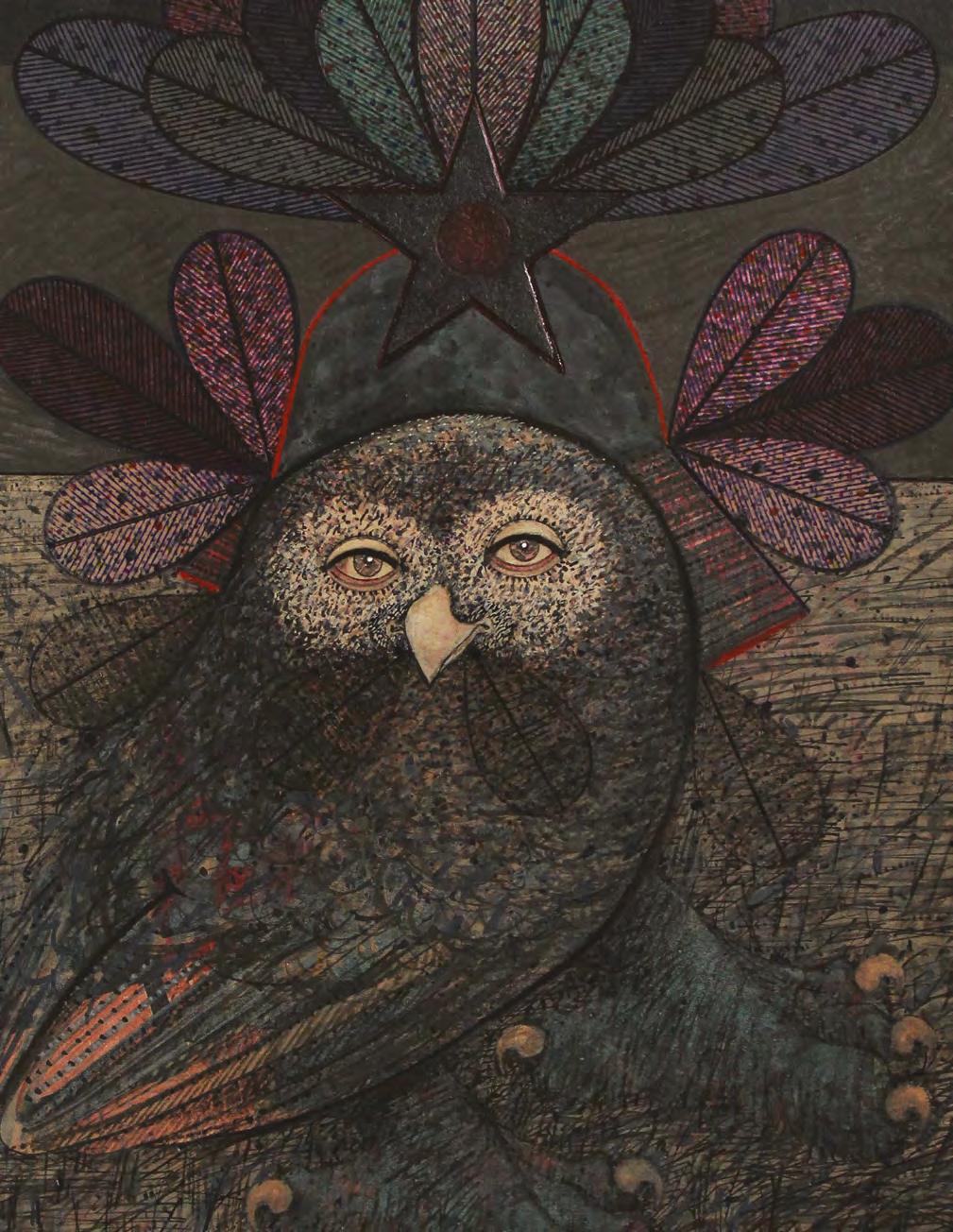 Michael Agnew, Glover
Samurai Owl, cat 1 (detail)
Michael Agnew, Glover
Samurai Owl, cat 1 (detail)
Born in 1968, Michael Agnew is an artist and art educator and is currently Course Leader in Painting at Gray’s School of Art, Aberdeen, having previously been Head of Contemporary Art Practice and of Printmaking. Michael gained his first degree in Fine Art Printmaking at Gray’s and followed this in 1992 with a Masters in Printmaking from the Royal College of Art, London. Michael was elected a Royal Scottish Academician in 2008.


g
3. MacDairmid Owl Chook, Stravaiging Before the Storm, 2019 acrylic on canvas 95 x 95 cm
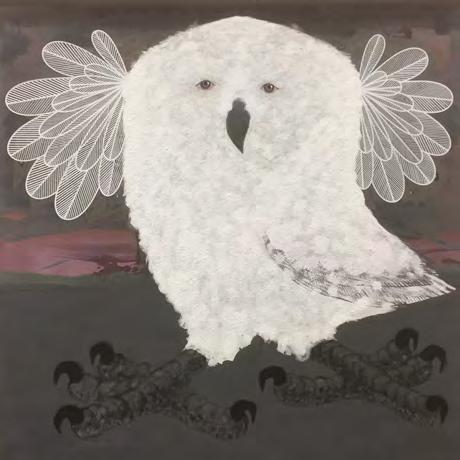

d
4. Scottish Owls for Megan Boyd with Painted Locust, 2019 mixed media on paper 38 x 28 cm
I am fascinated by Primitivism, Outsider Art and Folk Art as catalysts for my creative visual language. I become fixated with making the same idea over and over again, obsessively looking for different and new iterations or interpretations.
For me it’s all about the decoration and I use the clay as my canvas. I’m a big fan of old English slipware and of course the fun of Staffordshire figures. The Czech folk art influence is clearly there and as for the rest of it, I never really plan. I just sit down and it comes out of my head: birds, beasts, myths and fairy stories - who knows what goes on in there.
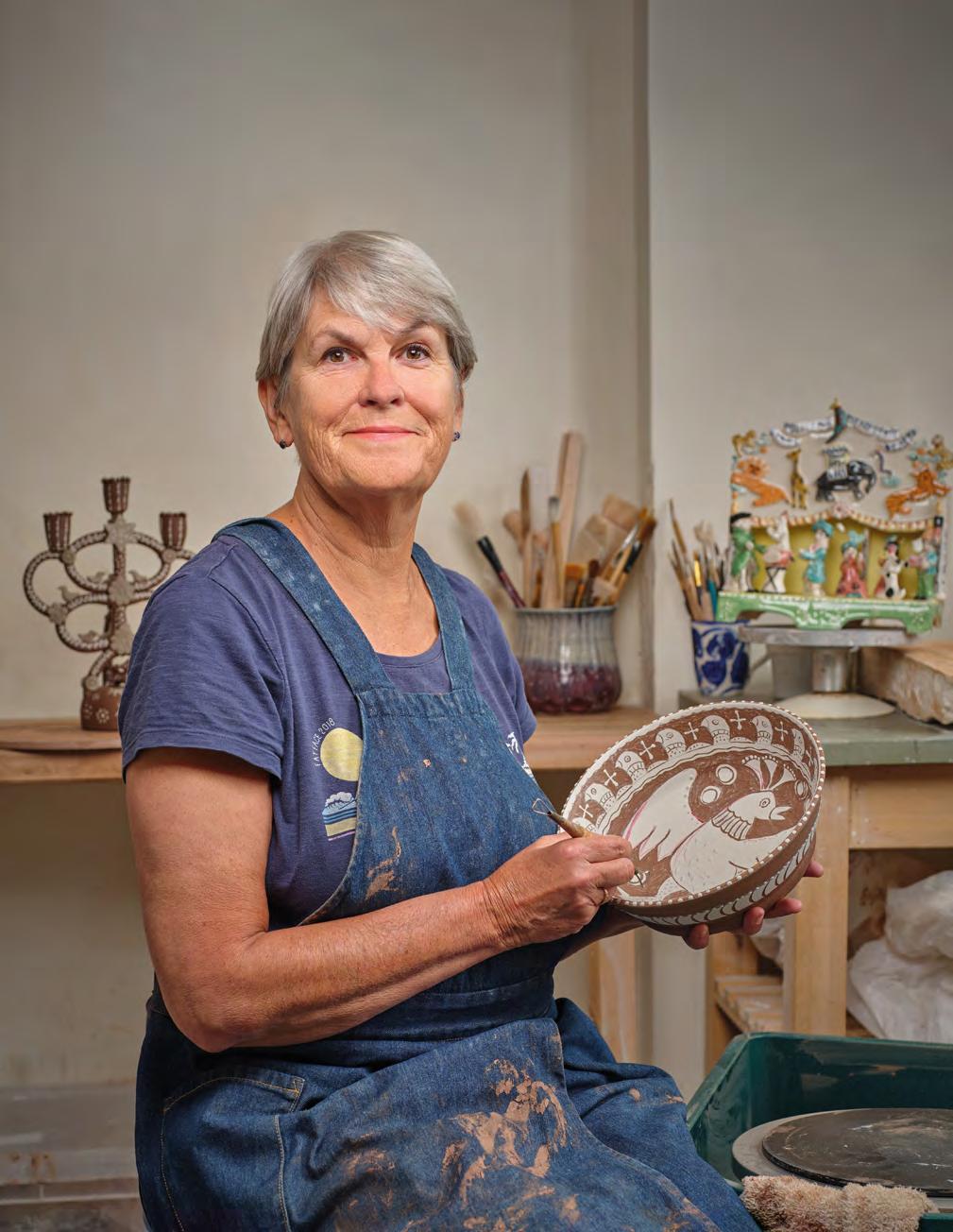
Julia Albert-Recht specialises in wheelthrown and hand built earthenware pottery. She works from her small coastal studio in Scotland.
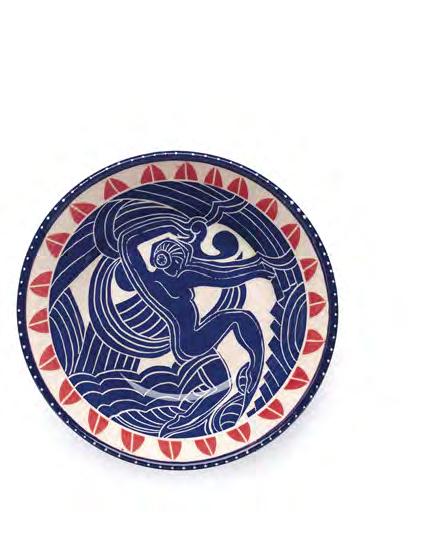

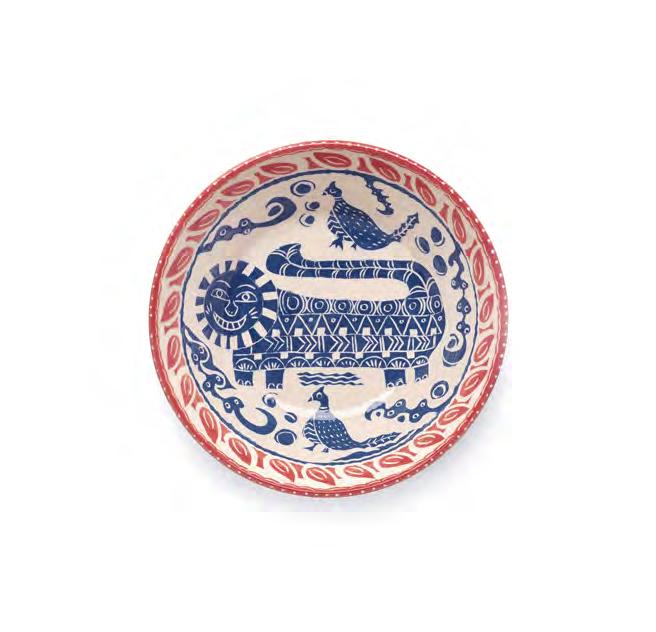
And bought another round for the tipsy sailor.
With glass in hand, he continued. “Those strange bottles were fashioned in iron, copper or stone. Each one of them contains, holds there magically within it – for it must be some form of faerie magic – the last, the final song of a mermaid. But listen, now if you were to smash and to break open one of those flasks, that song held inside from the long lost past can be heard once more drifting out into the aether from the bottle’s broken shards and splinters. The sound of it as clear and pure as any ship’s bell.”
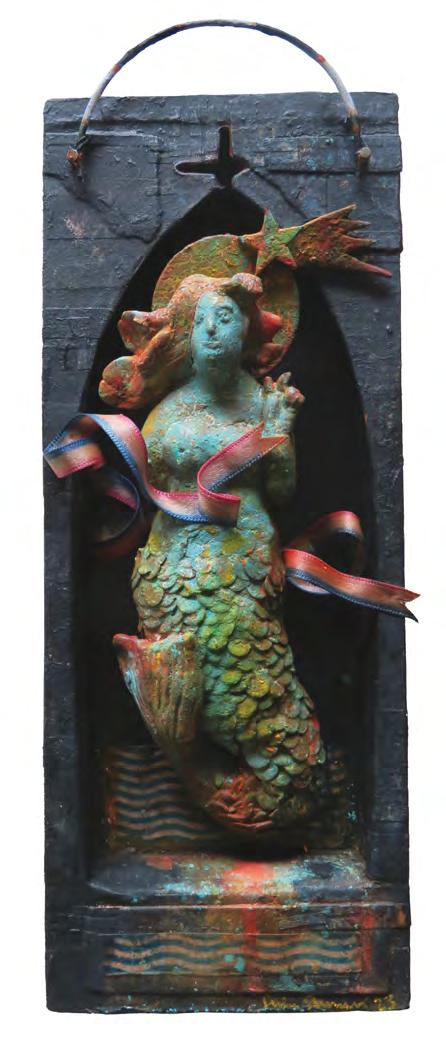
“But can such a thing be true?”, I asked.
“Oh it’s true, right enough”, the old salt vouchsafed, “but beware you now, sir. A mermaid’s song is, well it is a lamentable thing. For a man to hear it would be an unfortunate thing, indeed it would.”
He finished his whisky and would say no more.
Published by The Grand Colosseum Warehouse Co. Glasgow, 1890

Malcolm Appleby studied at Central School of Art and design, The Sir John Cass School and the Royal College of Art in London before establishing his studio in Scotland in 1969. A silversmith and metal engraver, known for his imaginative use of line and form, he is considered to be the world's finest living gun engraver.
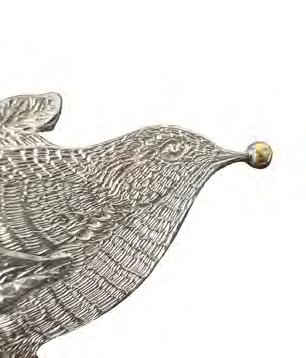


I'm passionate about the amount of energy and power that springs from the ancient craft of engraving. Works of art should be made for everyone to enjoy. Engraving is central to my design and art; it is from engraving that my other skills have evolved.photograph: Philippa Swann, 2019
Malcolm Appleby has dedicated his artistic practice primarily to engraving and pushing the boundaries of metalwork; constant experimentation has made him a master of his craft and in 2014 he received an MBE for his outstanding contribution to the arts.
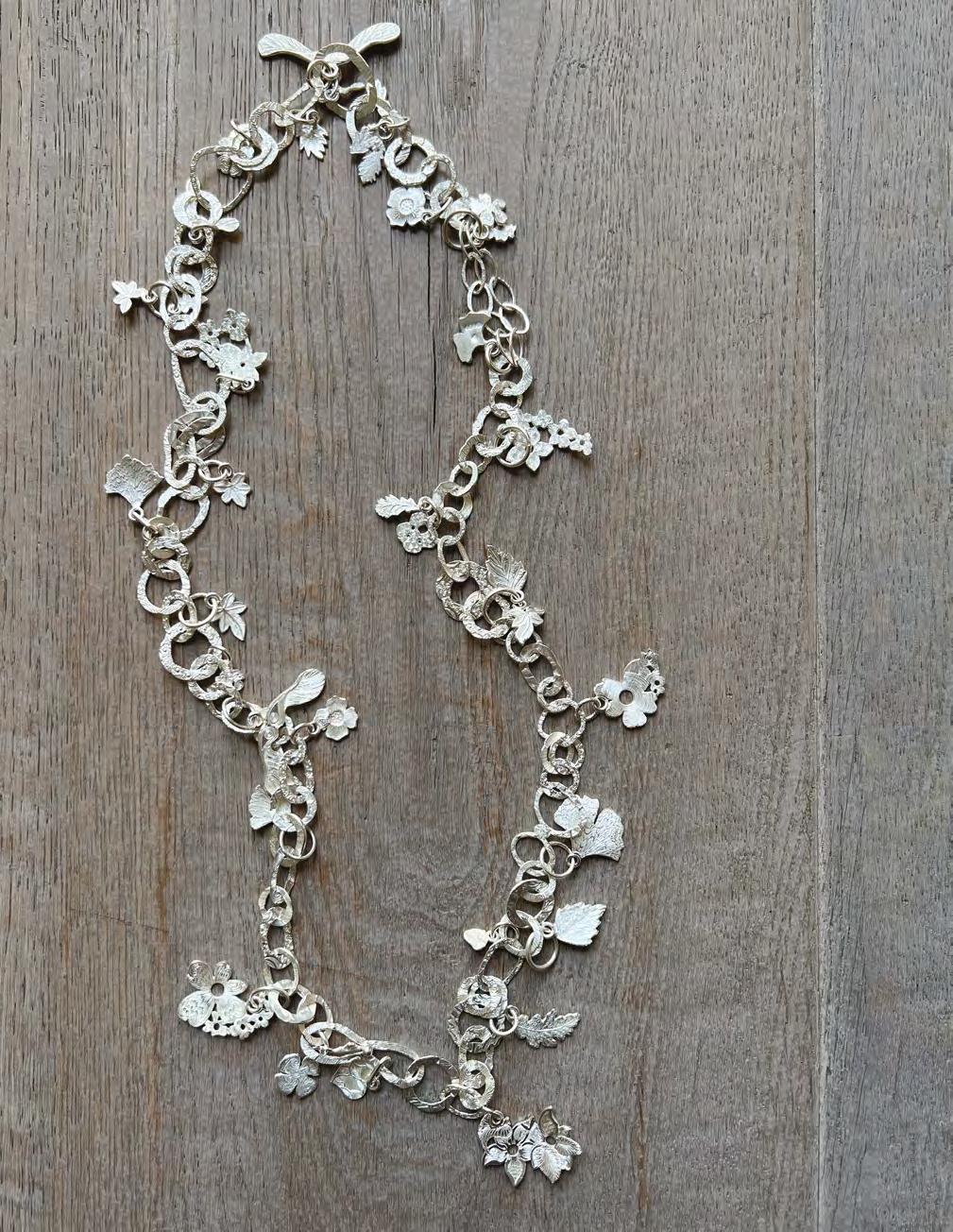


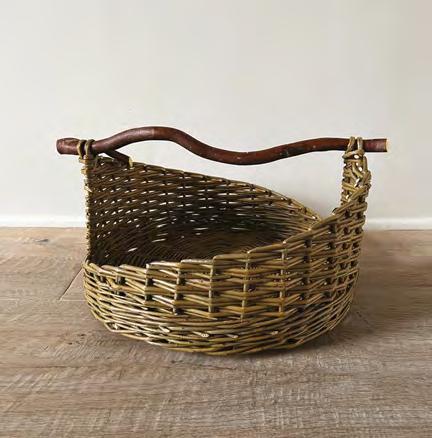
Originally from Denmark, Lise Bech lived and worked in the Southern Uplands of Scotland for many years drawing inspiration from the landscape. She has since made a new home and studio in the heart of Fife. Living close to the earth through gardening, Bech grows her own willow and cares deeply for the planet. Cooperation, collaboration and community continue to be the touchstones which inform her life and practice as a basketmaker.
My journey with willow began almost 40 years ago. Despite having virtually lived and breathed willow for many of those years there has always been more ideas to try out and forms to explore. With less pressure in my later years, I have had time to play and experiment and indeed go deeper in those that had lasting appeal. The introduction of twisted twigs from my garden as handles and gold leaf on a ’shopper’ for this exhibition is a playful tongue in cheek juxtaposition which may raise questions… What is it for? Is it a shopper? Do we need shoppers these days? Lise Bech

Stephen Bird was born in Stokeon-Trent in 1964 and has lived in Australia since 1999 after graduating from Duncan of Jordanstone College of Art & Design, Dundee. Making his home and a significant international reputation from Australia, he works with both paint and clay. His work is exhibited both nationally and internationally and he has won both The Gold Coast International Ceramic Award and the Deacon University Small Sculpture Award. I work with both paint and clay to make multidimensional imagery which reflects on the global, transcultural nature of myths and ceramic archetypes.
Stephen BirdPublic collections include: National Gallery of Australia, Canberra; Art Gallery of South Australia, Adelaide; National Museums Scotland, Edinburgh; National Museums, Northern Ireland.
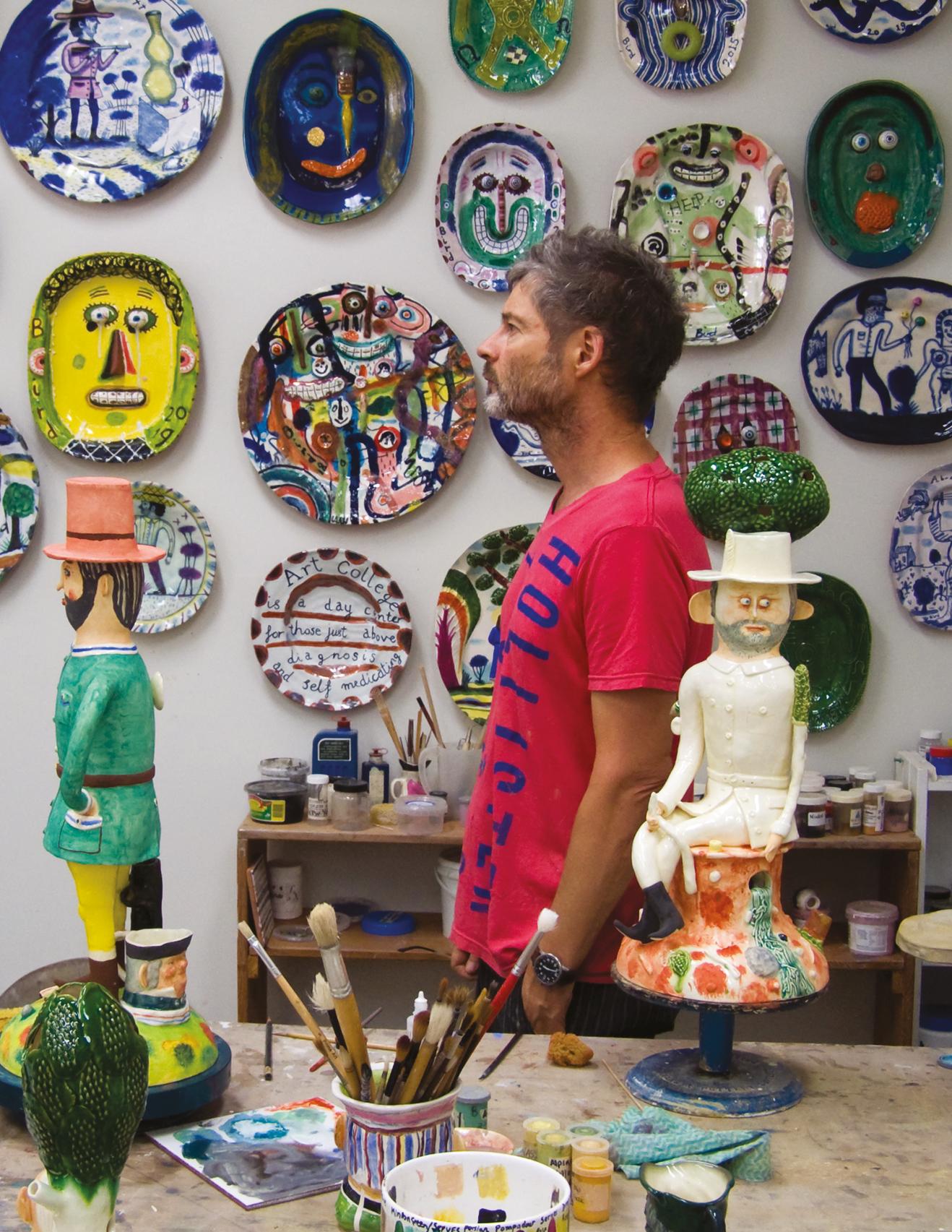
I believe visual art is all about humanity's relationship to objects and I wish above all to invoke the emotional connections which are felt towards things that have been made by hand with love.photograph: Charlotte Le Brocque, 2018
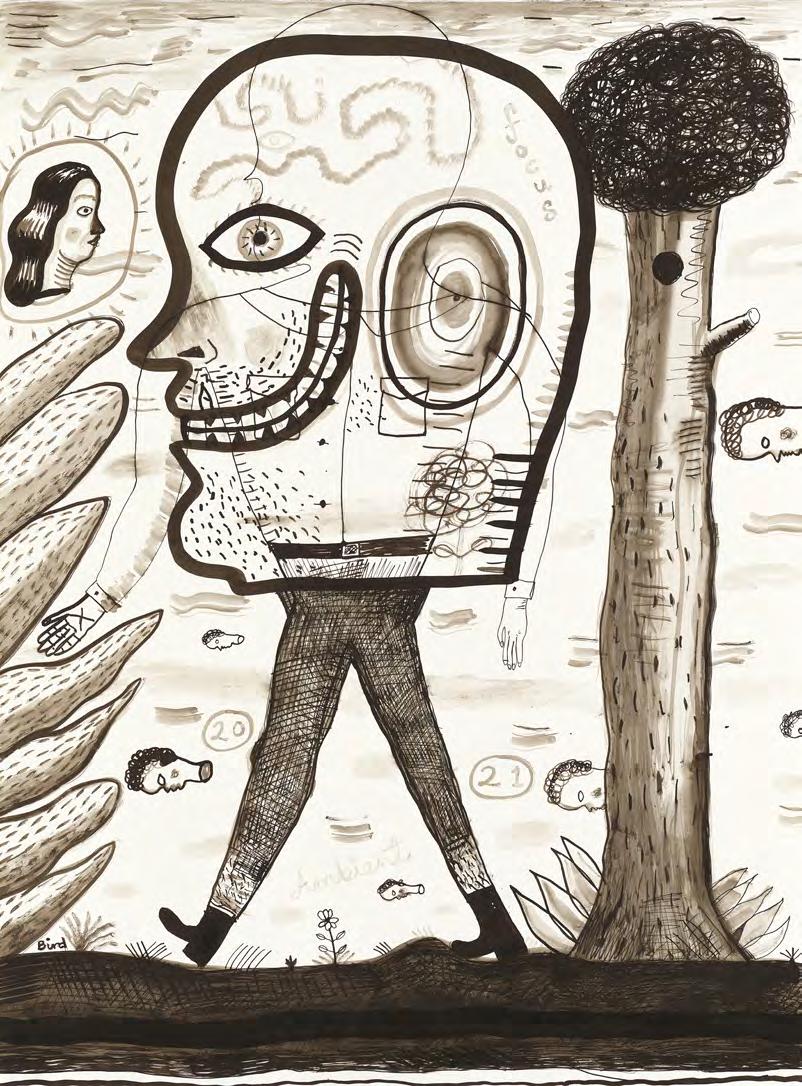
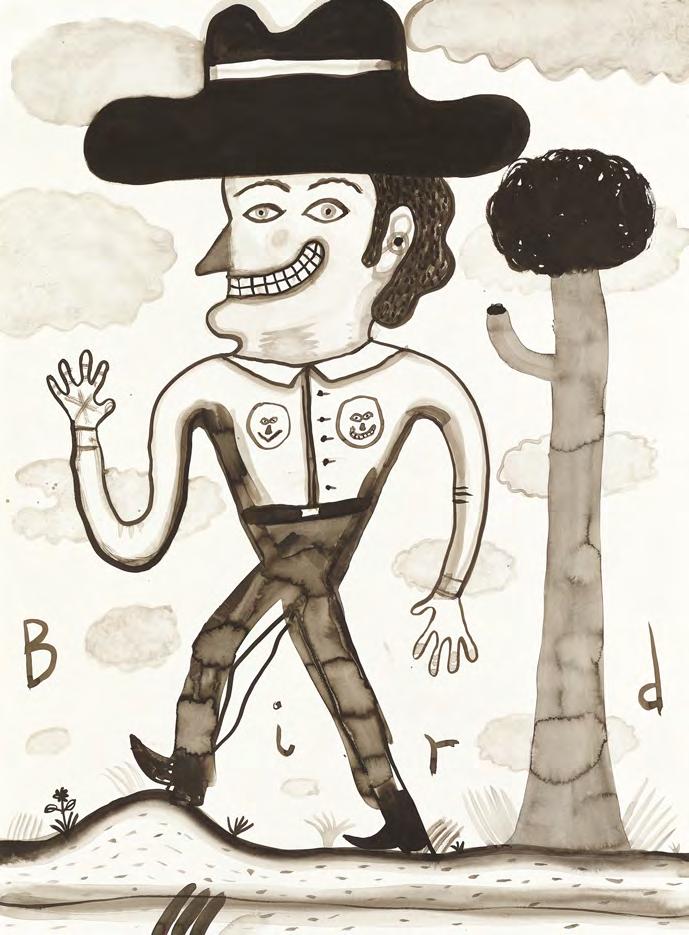
gg
17. Walking Man, 2021 ink on paper 64 x 48 cm
o
19. Woman with a Flute, 2023 ink on paper 64 x 48 cm
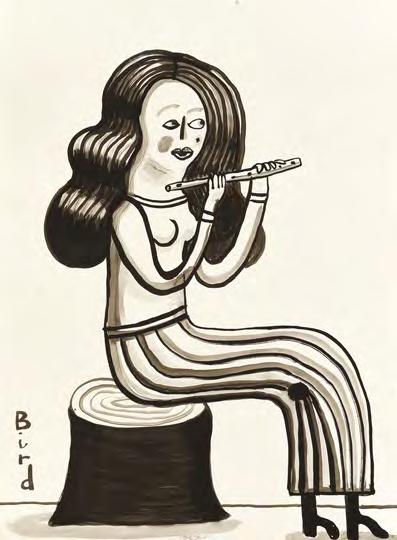
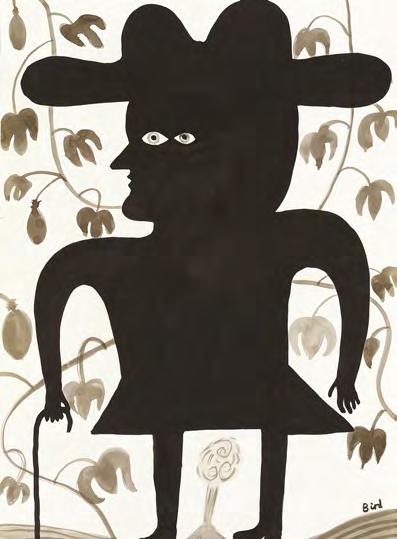
h
18. Two Women in the Waves, 2023 ink on paper 64 x 48 cm
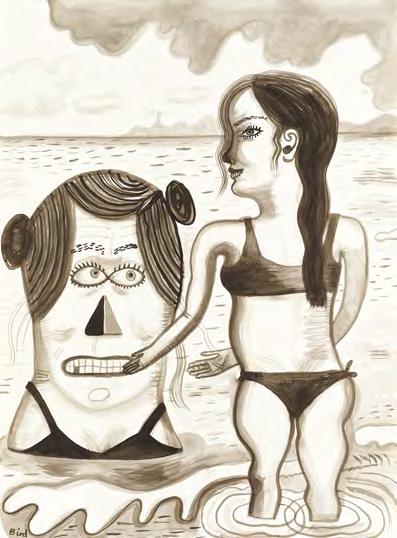
g
20. Man Living Beside a Volcano, 2023 ink on paper 64 x 48 cm
Icreate narratives which explore hybrid identities and transgressive themes such as taboos, cruelty, war, natural disasters, unnatural affections and violent deaths. My works are located in the extremes of the tragicomic tradition. I reinterpret old stories both remembered and imagined and appropriate iconography from established pottery traditions; a decorative Royal Doulton tile, or the cabbage leaf from a Wedgwood Whieldon teapot.
I am particularly interested in Staffordshire ceramic figure groups from the 18th century which contain implicit meanings and I often try to decipher their hidden meanings and reimagine these in explicit ways.
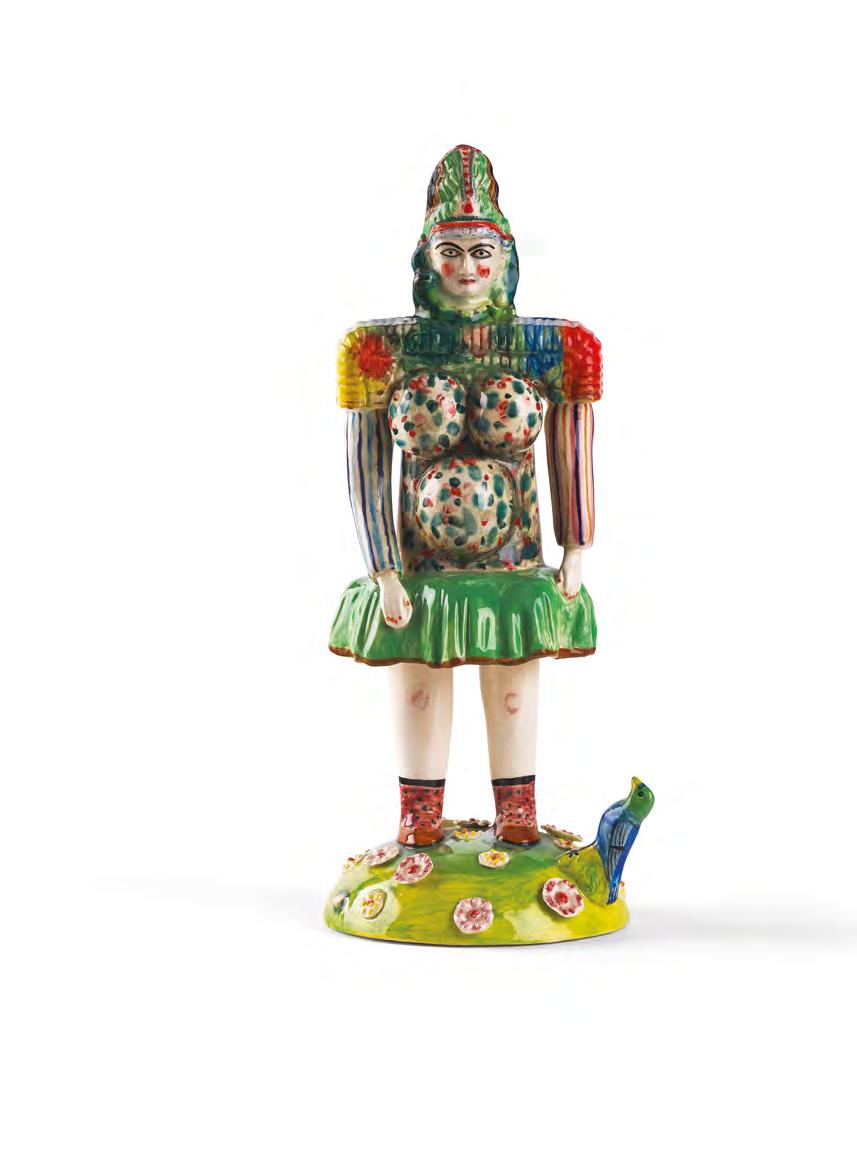 Stephen Bird
Stephen Bird
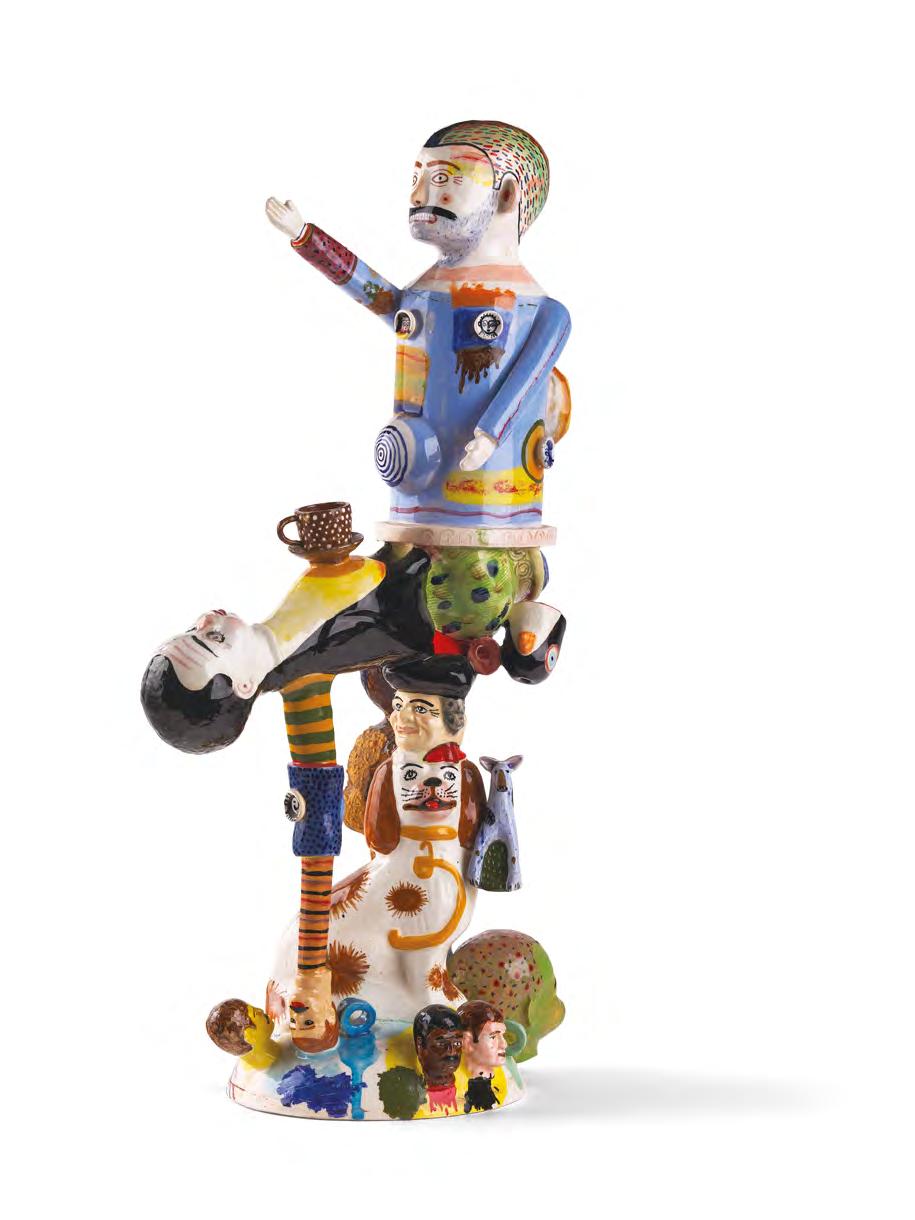


Kate Black takes inspiration from museum collections, antiques and British social history. Based in her studio in Malton, North Yorkshire, Black works across several mediums including collage, printmaking and textiles.
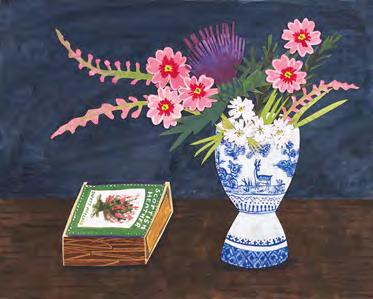
The collages are inspired by Black’s collection of matchboxes and objects she has obtained from Magpie Antiques, The Shambles, Malton. The Matchbox Series explores associations and connections between the matchboxes and still life objects, for example, flies buzzing around sheep in the summer, or swans swimming alongside ships.
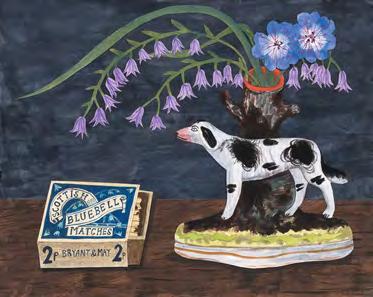
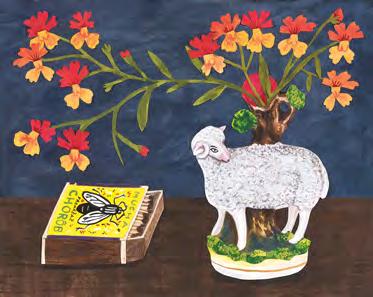
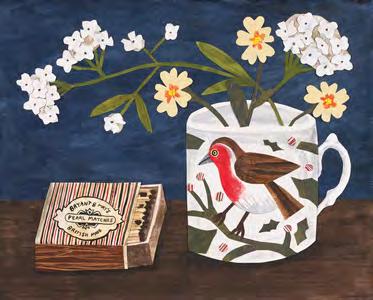
Clive Bowen studied painting and etching at Cardiff Art School before taking up an apprenticeship with Michael Leach at Yelland Pottery in North Devon from 1965 until 1969. In 1971 he bought a small agricultural property at Shebbear, near Holsworthy in North Devon and set up a workshop in the former farm outhouses. His pots are made in the local Fremington clay, a red earthenware clay in use for centuries for traditional North Devon wares. They
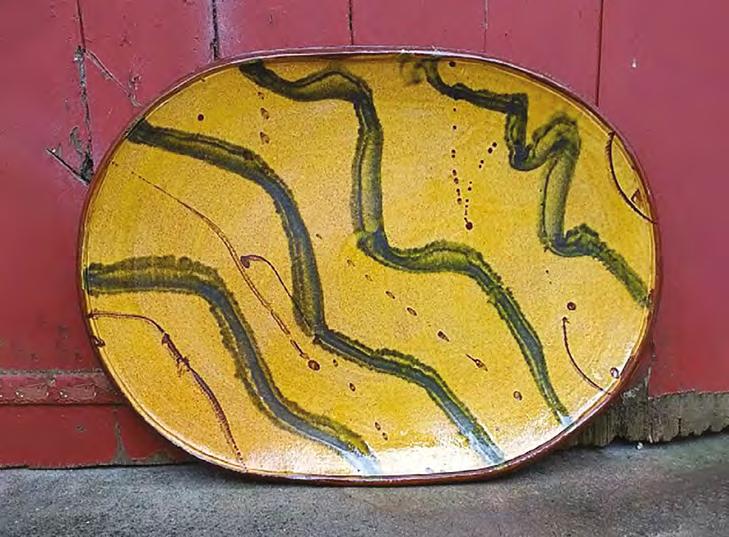
are almost all wheel thrown with the exception of a few hand-pressed dishes.
Public collections include: Victoria & Albert Museum, London; National Museum of Wales, Cardiff; Ulster Museum, Belfast; Crafts Council Collection, London; York City Art Gallery; Stoke on Trent City Museum; Winnipeg Art Gallery, Canada; Mingeikan, Tokyo; Mashiko Museum of Ceramics, Japan; Fitzwilliam Museum, Cambridge.

The form and function of my work can be traced back to centuries-old pots such as English medieval jugs and early Tamba ware from Japan.
Colin Brown is a fine artist based in Stonehaven in the northeast of Scotland. He specialises in collage and has lived and exhibited across Europe.
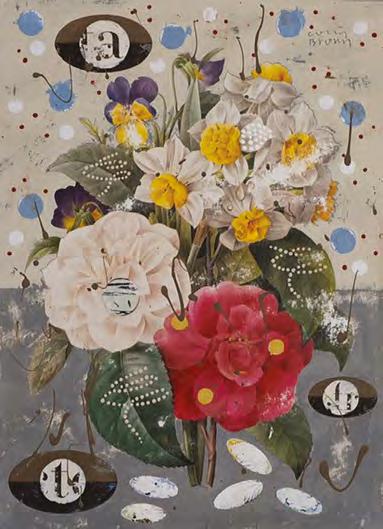
Brown’s practice draws upon a range of media and his work examines human histories, random and specific markmaking, urban imagery, and a mix of handwriting and printed script to explore the spirit of modern society.

The essence of these works is setting up a direct conversation with an artist from a different age. Traces of humankind float through these images of nature.

cm
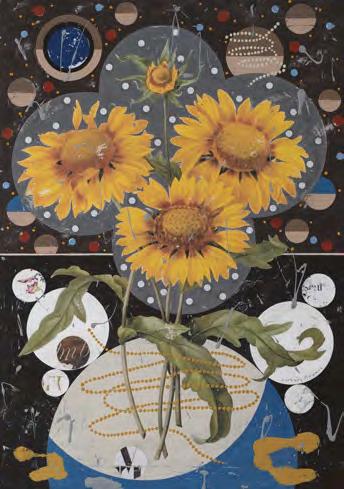
Pauline Burbidge is a textile artist, designer and quiltmaker based in the Scottish Borders. The landscape, plant-forms and seasonal changes provide endless resource and inspiration.
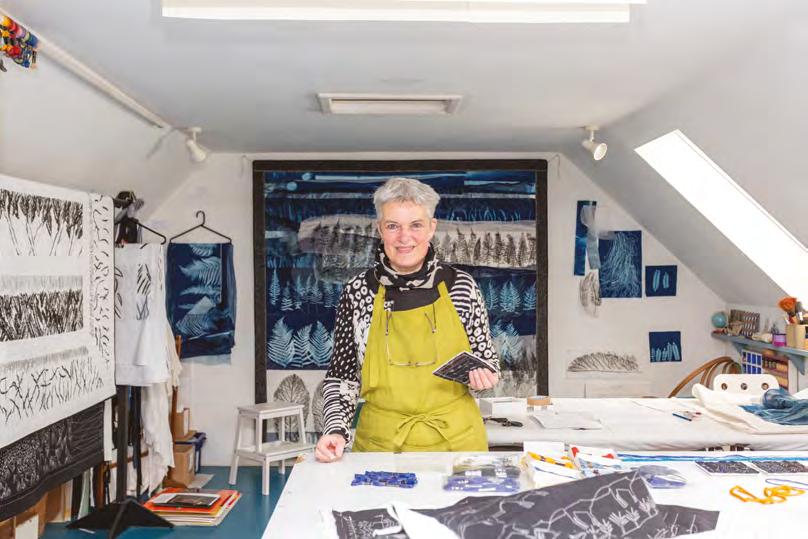
I draw, stitch, print and collage my way through many processes to create what I see as ‘textile landscapes’. Today I make two types of quilt, some are wall hangings/ fabric collages, and others functional, practical, whole-cloth quilts. This Hedgeline piece is in the latter category.photograph: Phil Dickson, 2021
37. Hedgelines, 2019 doublesided quilt, 100% cotton
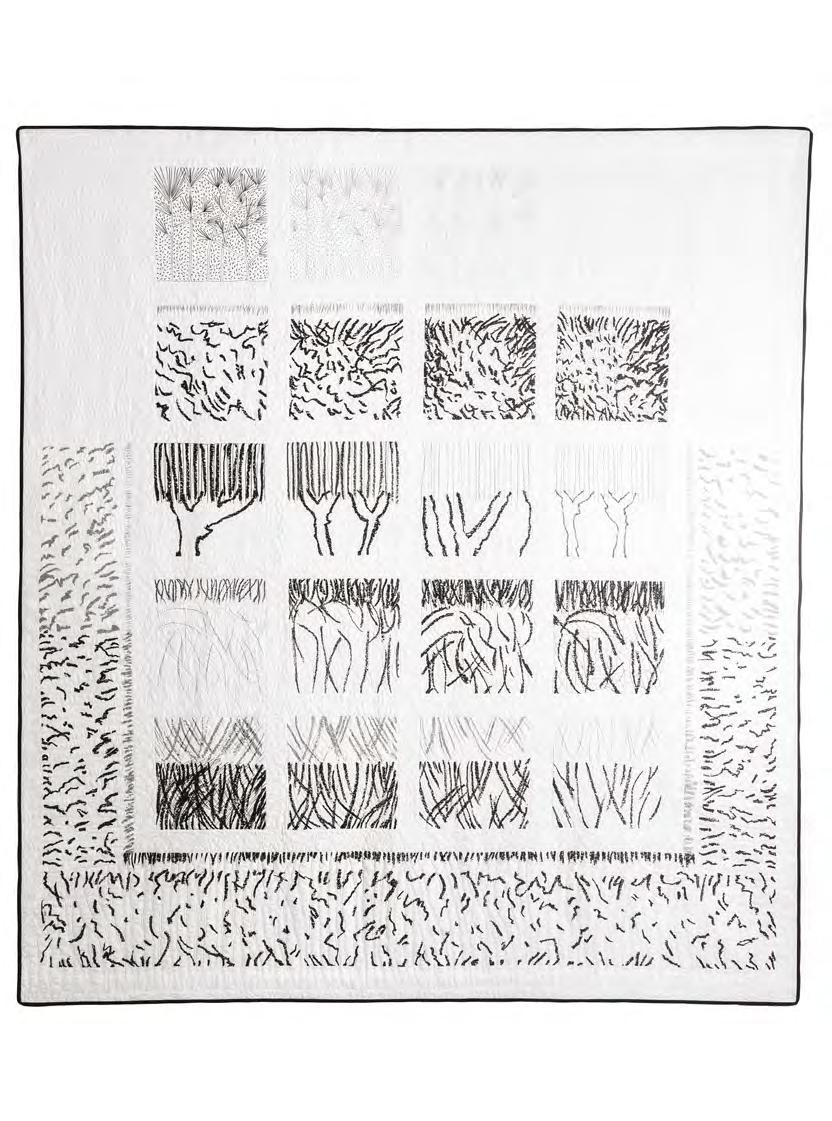
220 x 198 cm
photograph: Phil Dickson

John Byrne was born in a housing scheme in Paisley. He escaped work in a carpet factory to study at the Glasgow School of Art from 1958 to 1963. He is one of Scotland’s most iconic visual artists, playwright and theatre designer. Byrne works in a wide variety of styles and techniques including painting, mixed media and printmaking. In 1967, following a lack of success with London galleries, Byrne produced a series of paintings under the guise of 'Patrick', which he claimed was the name of his seventy-two year old father. These were met with interest, much to the artist's amusement. John Byrne was represented by The Scottish Gallery over a twenty year period from the 1980s. His work is held in numerous public collections including the National Galleries of Scotland.

For these four Ghost Ship paintings, I had in the back of my mind a sentence that the mariner and naïve painter Alfred Wallis put in a letter to his patron Jim Ede in 1935: ‘What i do mosley is What use To Bee out of my own memery what We may never see again as Thing are altered all To gether Ther is nothin what Ever do not look like what it was sence i Can Rember…’

Jonathan Christie
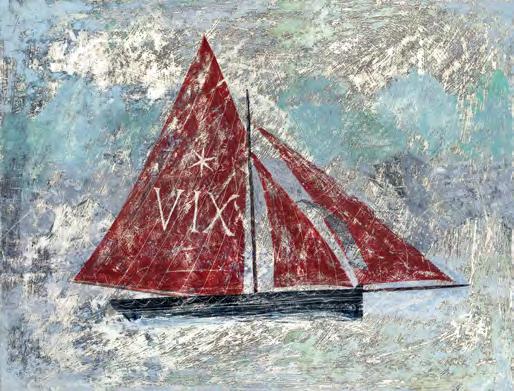
42. Ghost Ship: Ketch on the Thames near Blacktail, 2023 watercolour, graphite and gesso on board 30 x 41 cm d
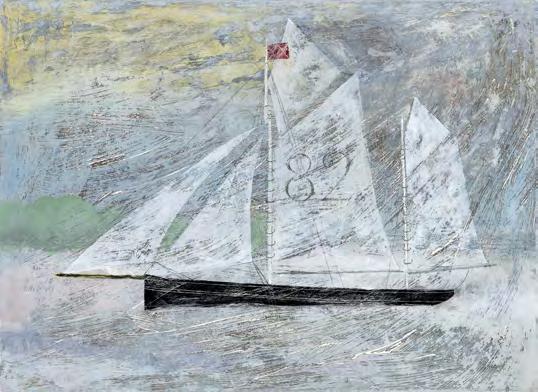
43. Ghost Ship: Thames Barge passing Shivering Sands, 2023 watercolour, graphite and gesso on board 27 x 33 cm
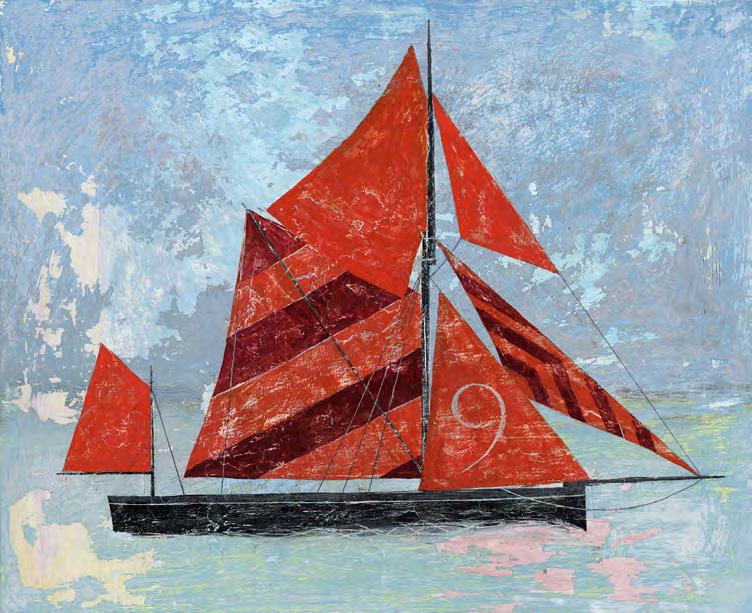
Tilley Letterpress Printing was established in the market town of Ledbury, Herefordshire in 1875. The Press is now situated off the High Street, down Tilley’s Alley.
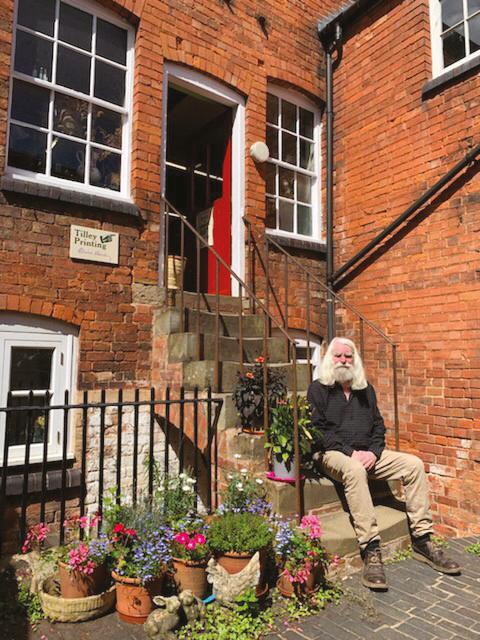
In the 1930s the collection of type was expanded to hold many avant garde type faces of the day. In the mid 1950s the Heidelberg Platens were introduced transforming the production of Letterpress printed material. Letterpress printing is a form of relief printing, where the text or image is on a raised surface, similar to a rubber stamp. Ink is applied to the raised surface and then paper is pressed directly against it to transfer the text/image.
Martin Clark began his 5 year apprenticeship with Tilley Printing at the age of 15 and later became Master Printer. During his career, in which he has also worked with the Oxford University Press, he has maintained the traditional skills and craftsmanship of the Letterpress Printer.
Martin Clark has worked on many letterpress collaborations with Mark Hearld. The Folk at Heart design for
this publication and invitation was commissioned by The Gallery. The letterpress was typeset by Martin and Mark who then created a papercut design of his lurcher Brio, in a vibrant red, which was made into a relief design by Martin.

Douglas Fitch and Hannah McAndrew are internationally renowned potters who live and work in Dumfries and Galloway, Scotland.
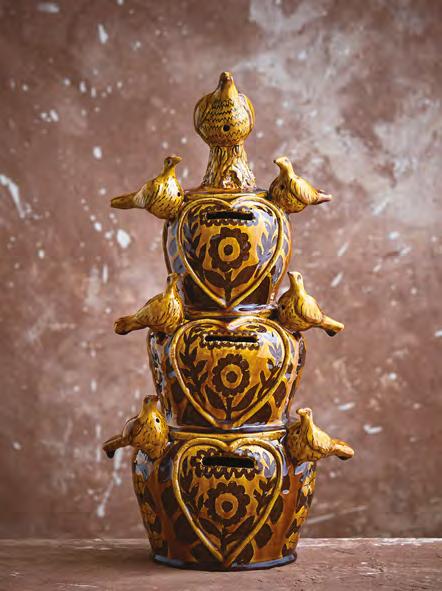
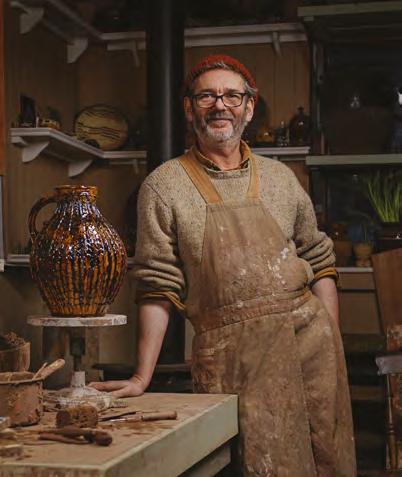
45. Bird Charger, 2023 wheel thrown, red clay, applique decoration, glazes D48 cm

46. Sgraffito Puzzle Jug, 2023 wheel thrown, red clay, applique decoration, glazes H22 cm
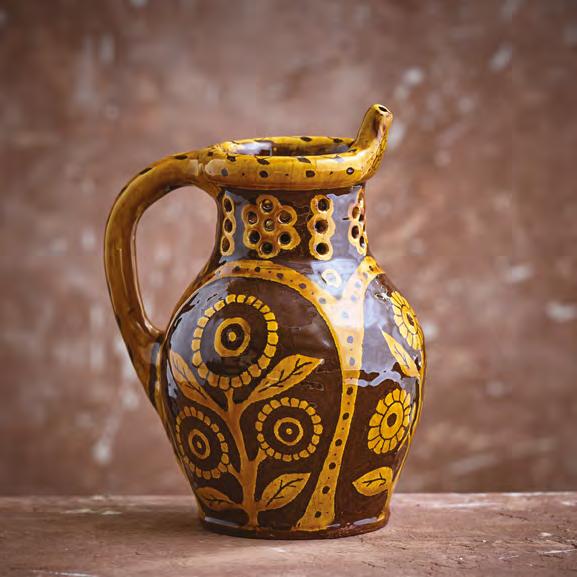
It’s a strange thing, to be excited by something as simple as a brown clay jug and I can’t explain it, but it seems that it happens to some people; it just gets under your skin.
Our life is our work, and our work is our life – we live, and we breathe pottery.

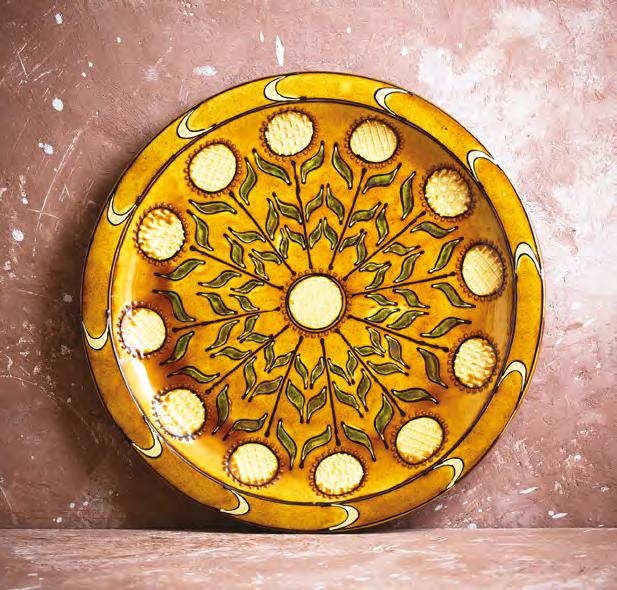
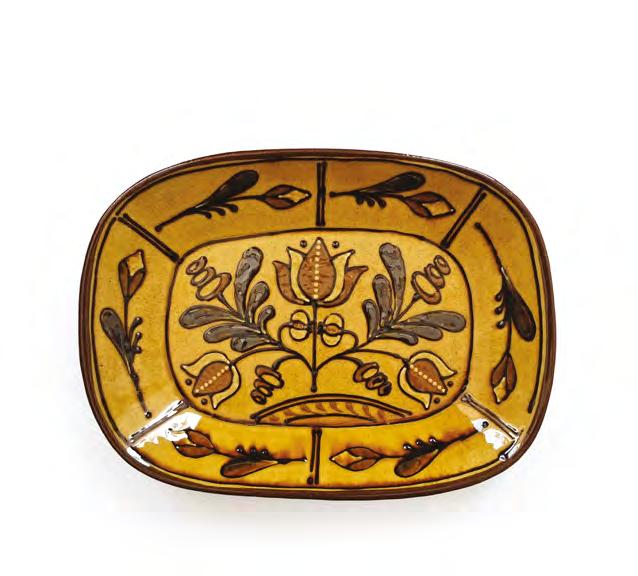
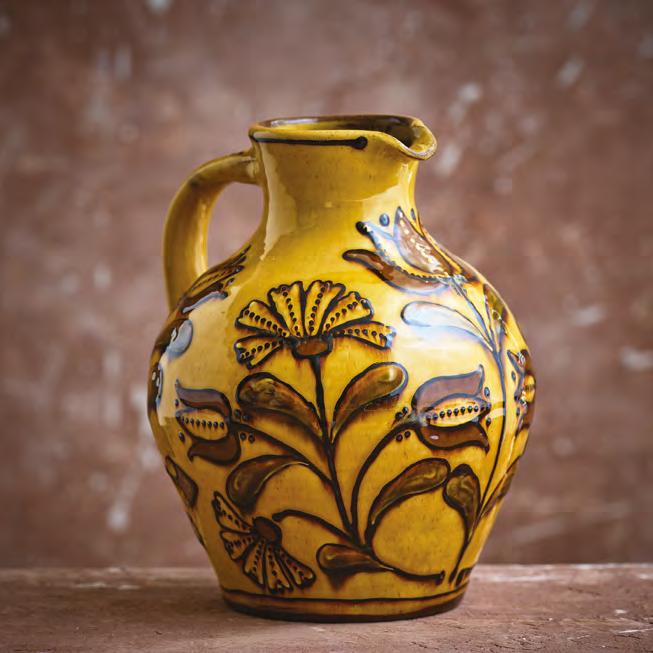
The life of a Penzance-dwelling Cornish artist isn't all just about putting brushes to canvas. There's a whole eco-system of surrounding factors in an artist's life that can have small to profound impact on the end results of my work. During the Spring and Summer I come out of my painting den to be in the fresh air. It's just so nice to paint outdoors, I can't explain the feeling of joy I get from doing this. Creativity has always run in my family. My grandfather George Hann, was an acclaimed artist and mentor and my mother ran an oriental bazaar in Camden town. Alan Furneaux
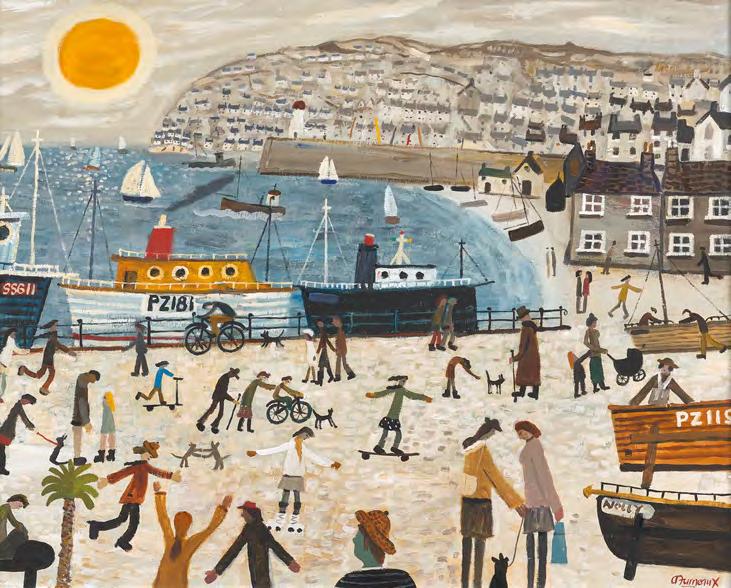
Alan Furneaux was born in London and is a selftaught artist. He lives and works in Penzance, Cornwall and takes inspiration in the landscape, townscape and seascape around him and in turn by the St Ives group of painters associated with the region.
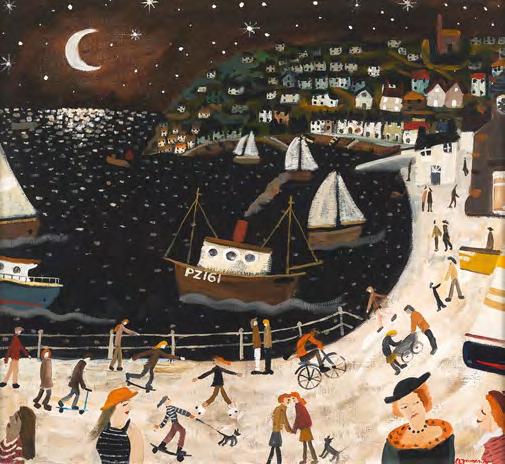
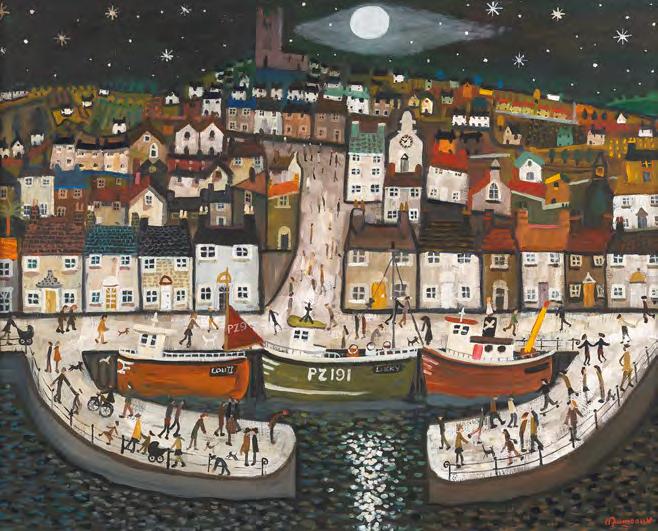
My cabinet making is inspired by traditional architecture and buildings. I believe furniture has a vital role in enhancing our lived experience, elevating everyday objects to the realm of wonder. From thatched roofs, arched windows and elegantly silvering façades, my work aims to harness and incorporate traditional craft by capturing the essence of these magical buildings. Constructed from locally sourced timber and inspired by Italianate buildings and bell towers, these follies are for storing precious trinkets behind their arched windows. Holding the flag pole allows the user to lift the roof, enabling access to the delicate contents stored within. A separate discreet drawer is accessed by pulling the lower tier wall out.

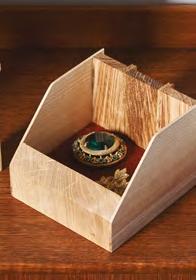

 Joe Ginniff
Joe Ginniff

I believe furniture has a vital role in enhancing our lived experience, elevating everyday objects to the realm of wonder.
Owen Jones, MBE lives and works in Cumbria and has been making traditional oak swills and baskets since 1988.
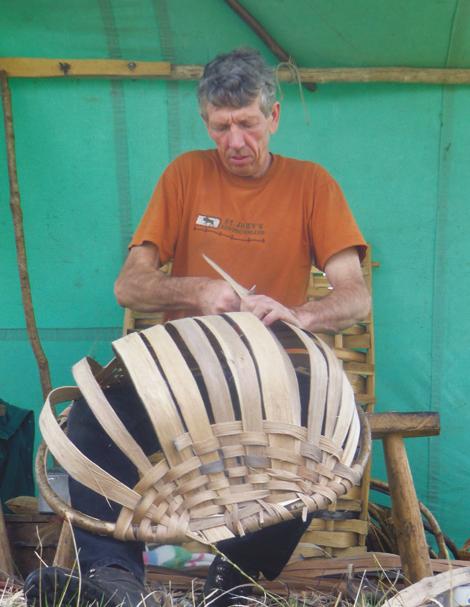
Iwas taught to make swills in 1988 by a retired ‘Swiller’ from Broughton-in-Furness, called John Barker. John had served his time in a 1930’s swill shop and when I met him he was one of the last swillers from that generation who were still making them. Now there is no one left alive from that era and I feel very privileged to have been taught by John, to have learnt from within the tradition and to now continue a local trade which has remained largely unchanged for centuries. When I first started I was supplied my oak and hazel by a local coppice man, Bill Hogarth, who was reliable, knew what I wanted and became a good friend. Bill was the last true coppice merchant in this area and after he died I had to source my own wood and so for the last 17 years I have been coppicing in the local Rusland valley. From selecting and felling the oak, through to completing the swill, all is done by my hand.
Owen Jones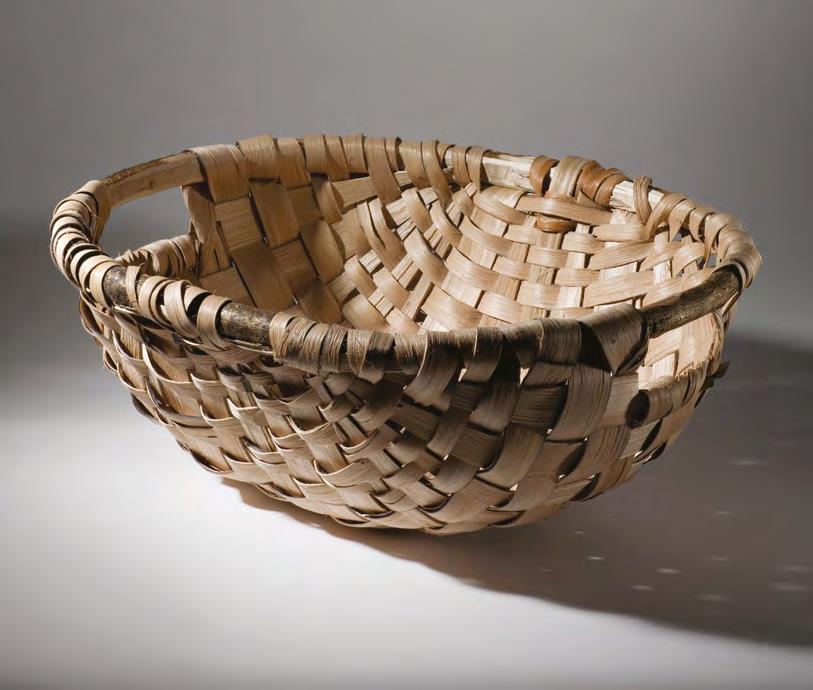
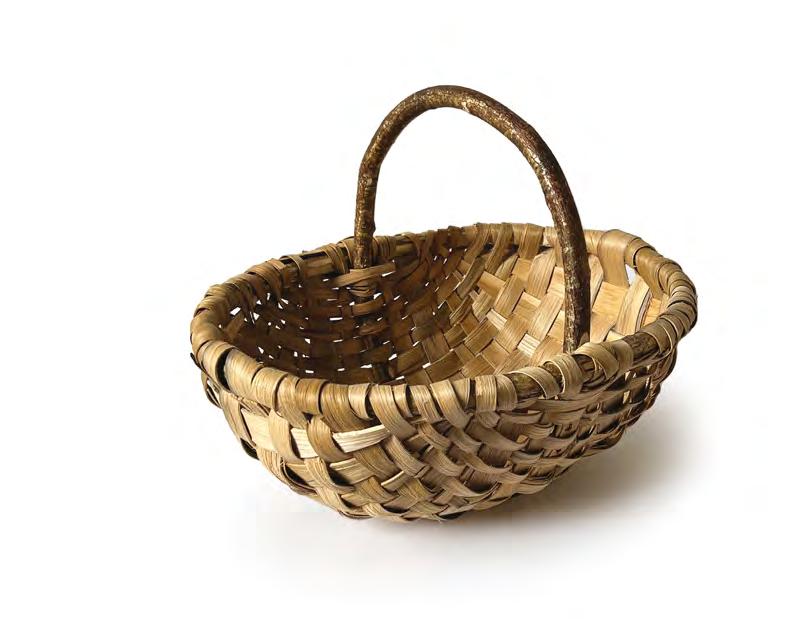
Jonny Hannah is a freelance illustrator also working in mixed media and printmaking. He has many passions, including the music of Hank Williams, hand drawn lettering and the films of Jacques Tati. He is also obsessed with Folk and Folklore... But not the folk of deep, dark forests, dragons, knights and maidens. Instead, what he calls urban folklore – the stuff that comes from the concrete ground up: The Hexham Heads, the songs of Alex Glasgow, and scrimshaw, amongst many other folkloric happenings. His last big project called Northumberland Folk , explored the length and the breadth of that fine county, all executed whilst illustrating a book called The Story of the Skids , by
Richard Jobson. And his new exhibitions –Shipbuilders & Fisherfolk , a homage to the fair town of Hartlepool, found him equally immersed in the history and current happenings of Codheads, West Dockers and all.
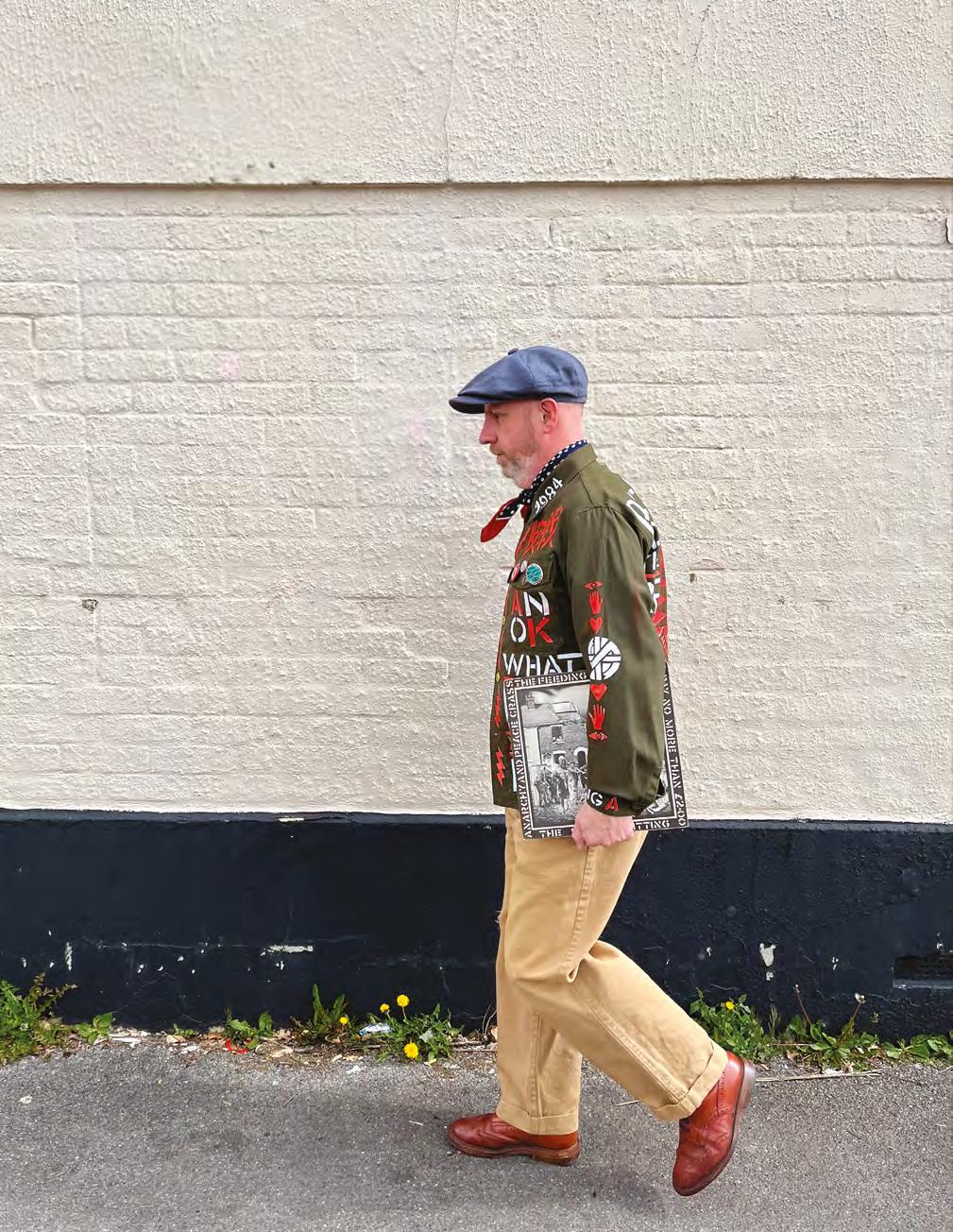
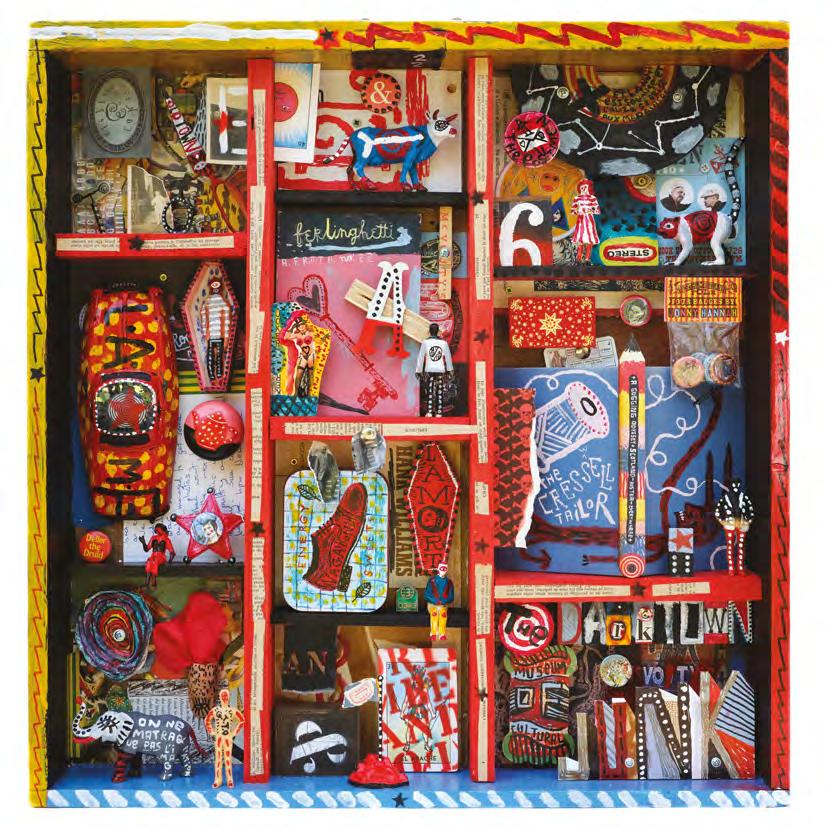
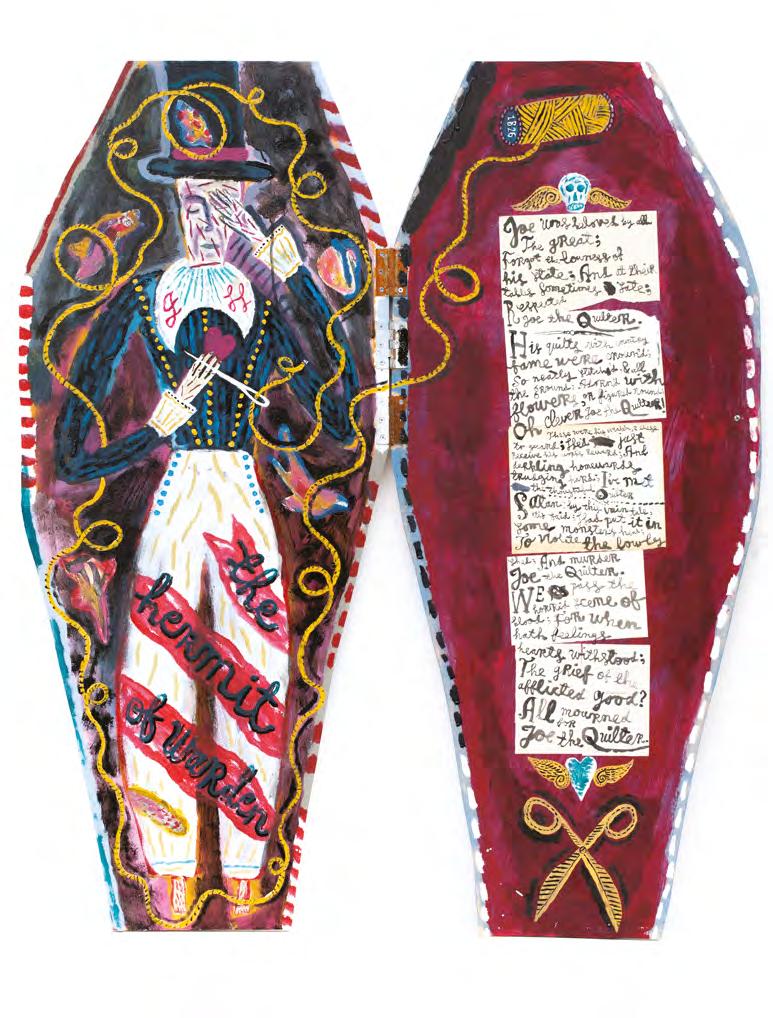
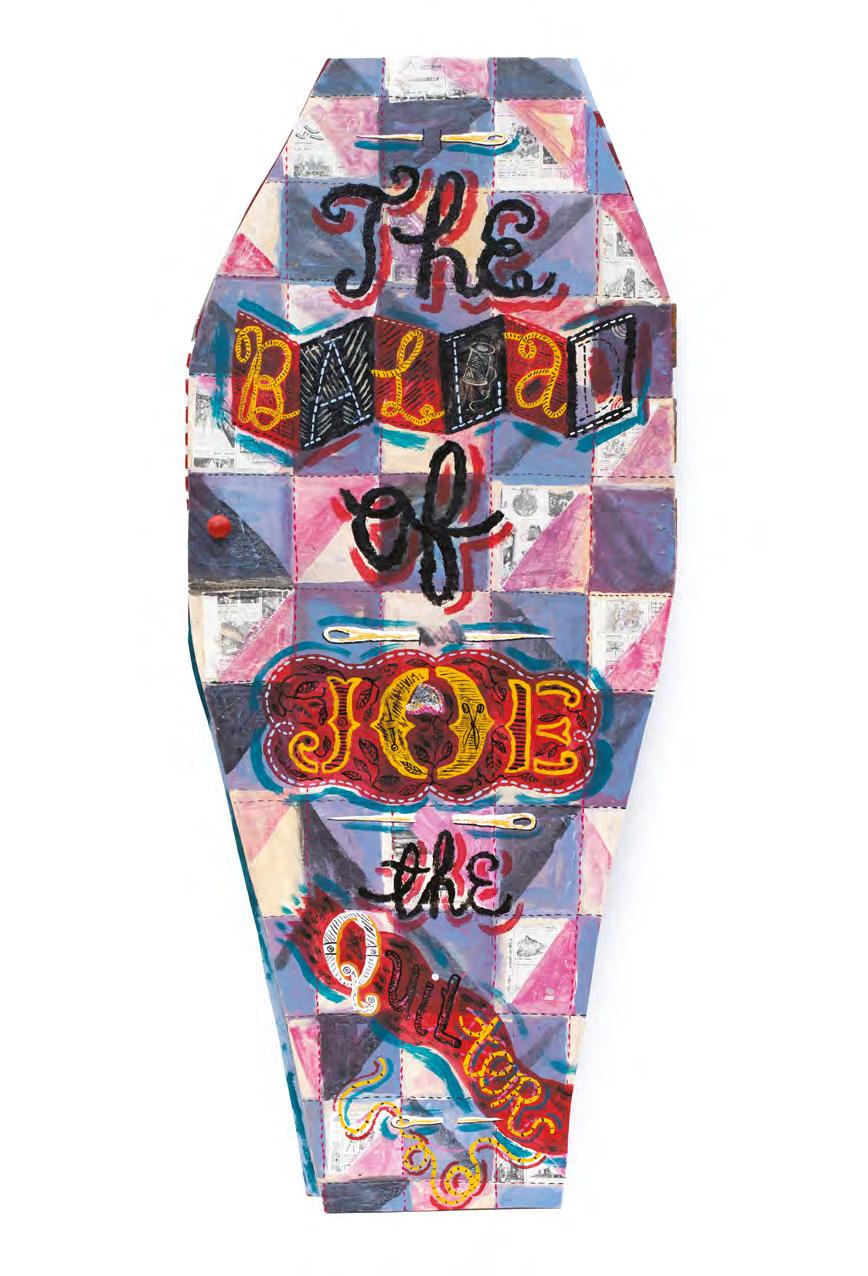
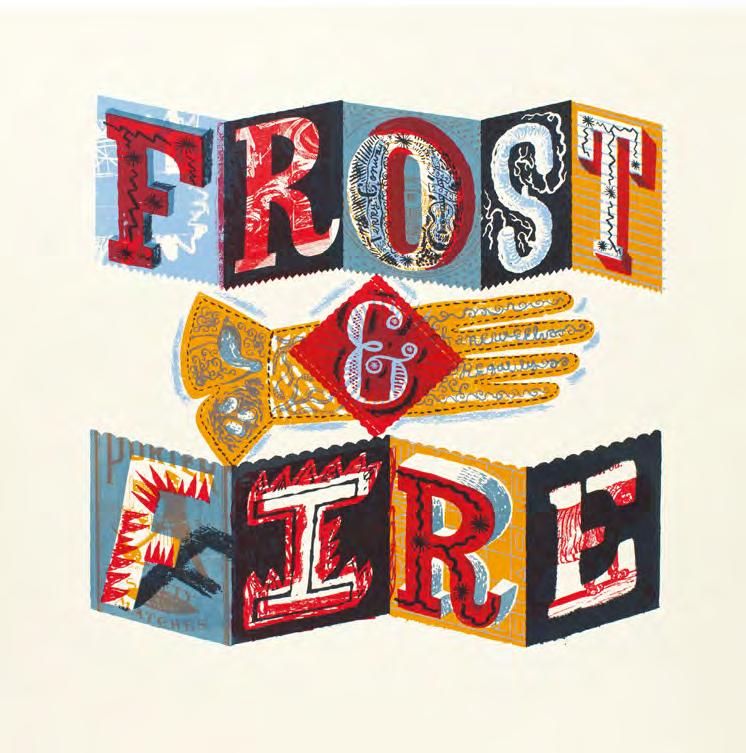
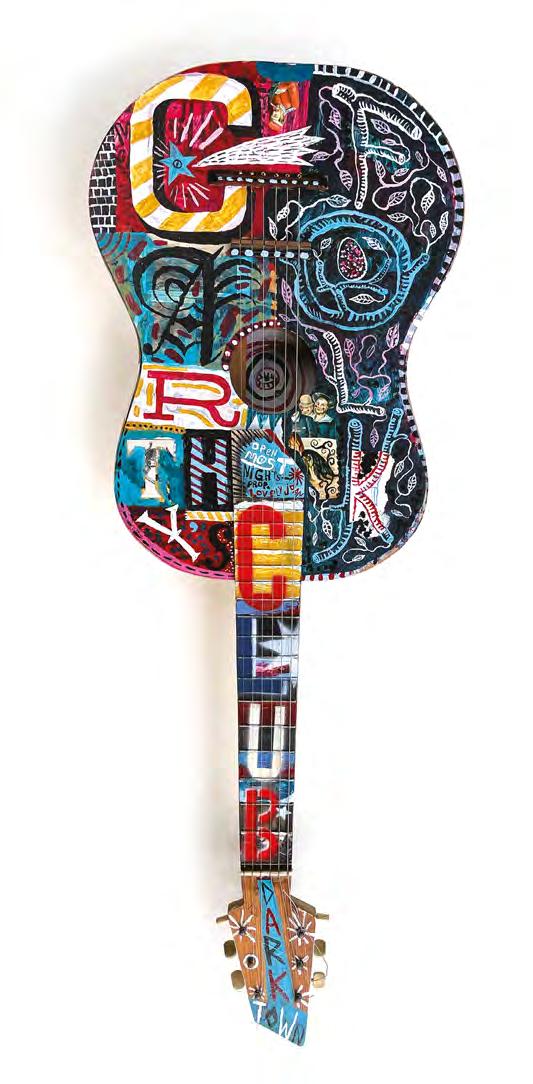
Mark Hearld studied illustration at the Glasgow School of Art before completing an MA in Natural History Illustration at the Royal College of Art, London. He lives and works from his eclectic and iconic home in York. The Gallery has enjoyed Mark’s theatrical, creative, immersive world ever since Mark Hearld & Friends debuted in 2009. He is also a great believer in artist collaboration and he regularly works with other artisan printmakers and creators. Hearld takes inspiration from the natural world, particularly British flora and fauna, the fox and chicken, hedgerow, and songbird. He works across several mediums; his paintings, collage, printmaking, sculpture, ceramics, designs and motifs are drawn from a lifetime of looking at pattern books, popular prints, primitive art and the poetry of Blake. Highlights of his remarkable career include The Lumber Room held at York Art Gallery from 2015-2017 where Mark curated a room of miscellaneous stored objects and artefacts and in 2018, Mark re-displayed the British Folk Art collection at Compton Verney. York Sculpture Park celebrated Hearld’s career in 2021 which included several large scale sculptures, flat weave tapestry and papercuts.
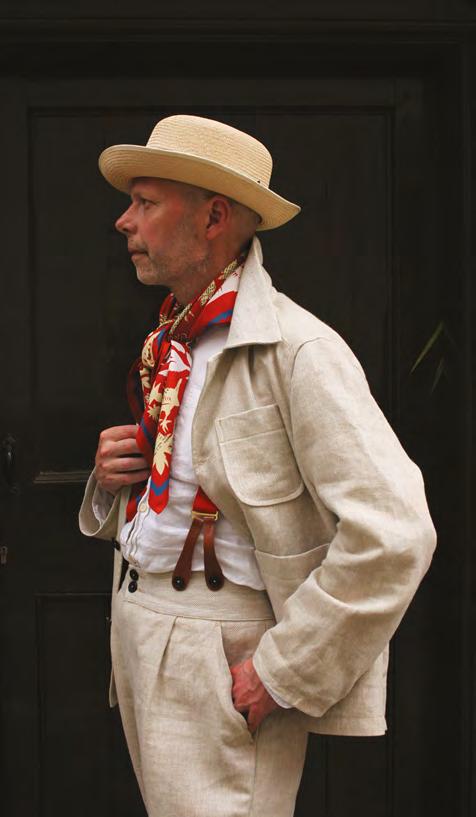
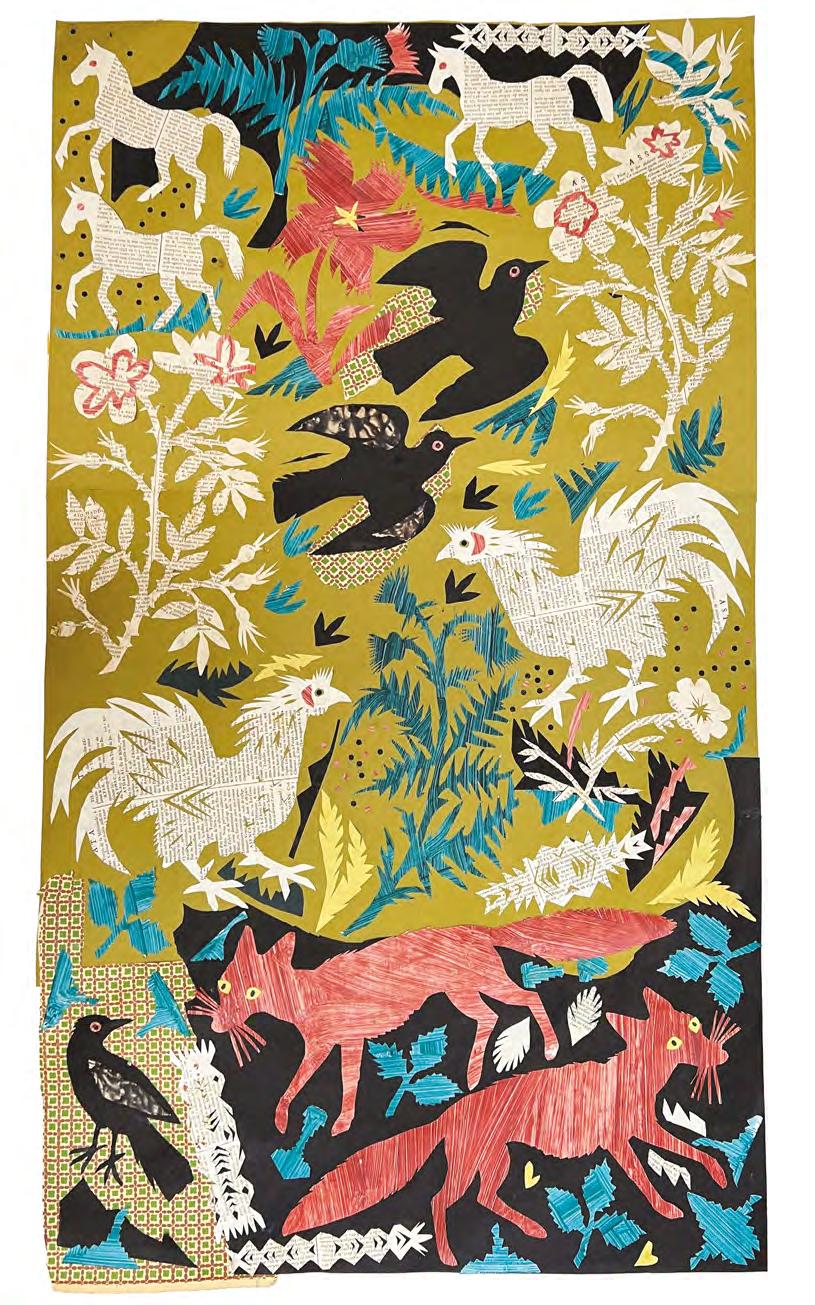
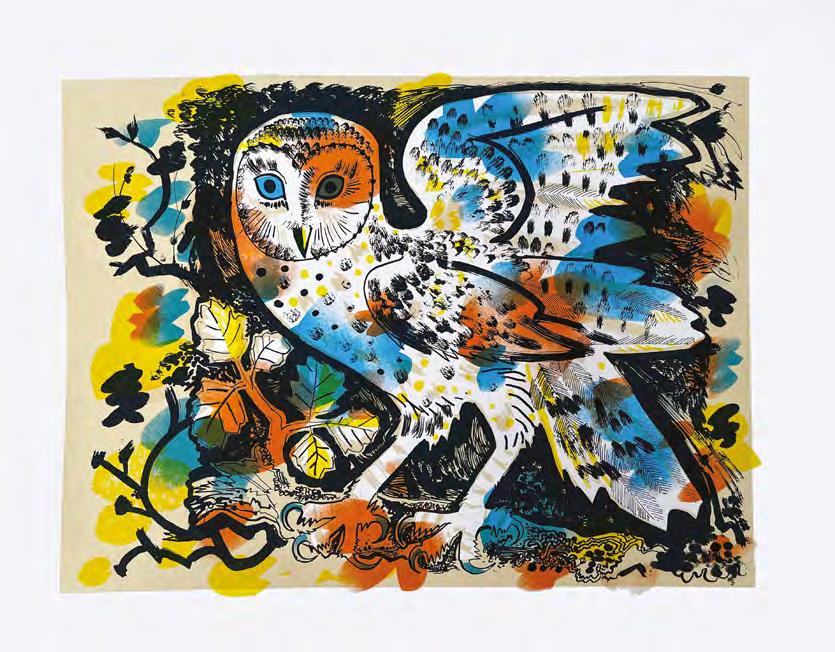
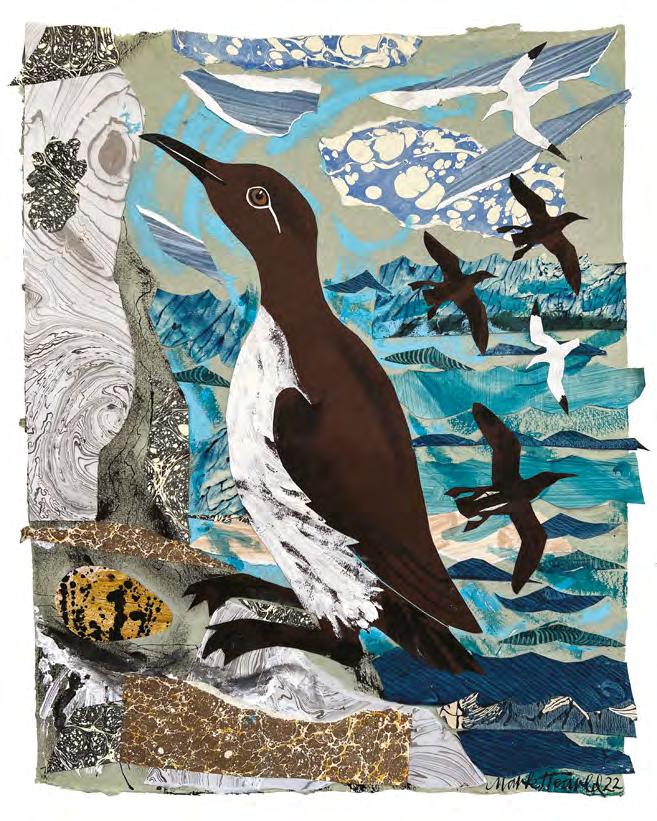
Iwas drawn to basketmaking because willow growing provided an opportunity to live rurally and develop a real understanding for a particular place. Over the last thirty years, I have found it a very satisfying occupation. I take some time each year to try new ideas and to make new designs but I also value repetition and the fluency it develops. You learn to be patient, to work in the present moment and to not prejudge the outcome. For the past twenty years or so I have become increasingly interested in making nonfunctional baskets, some of which involve the use of found pieces of wood. This work is prompted by a desire to develop a deeper connection to the natural world. Joe Hogan
Joe Hogan is first and foremost a traditional basketmaker and fine artist. He has worked from his studio in Loch na Fooey in West Ireland since 1978. He grows his own willow and harvests other naturally occurring materials such as wood, bark, larch, birch, bog myrtle, willow and catkins, which he incorporates in his work. Joe Hogan is regarded as one of Ireland’s master craftsmen and has gained a worldwide reputation for his work. Joe Hogan was shortlisted for the LOEWE Craft Prize 2018.
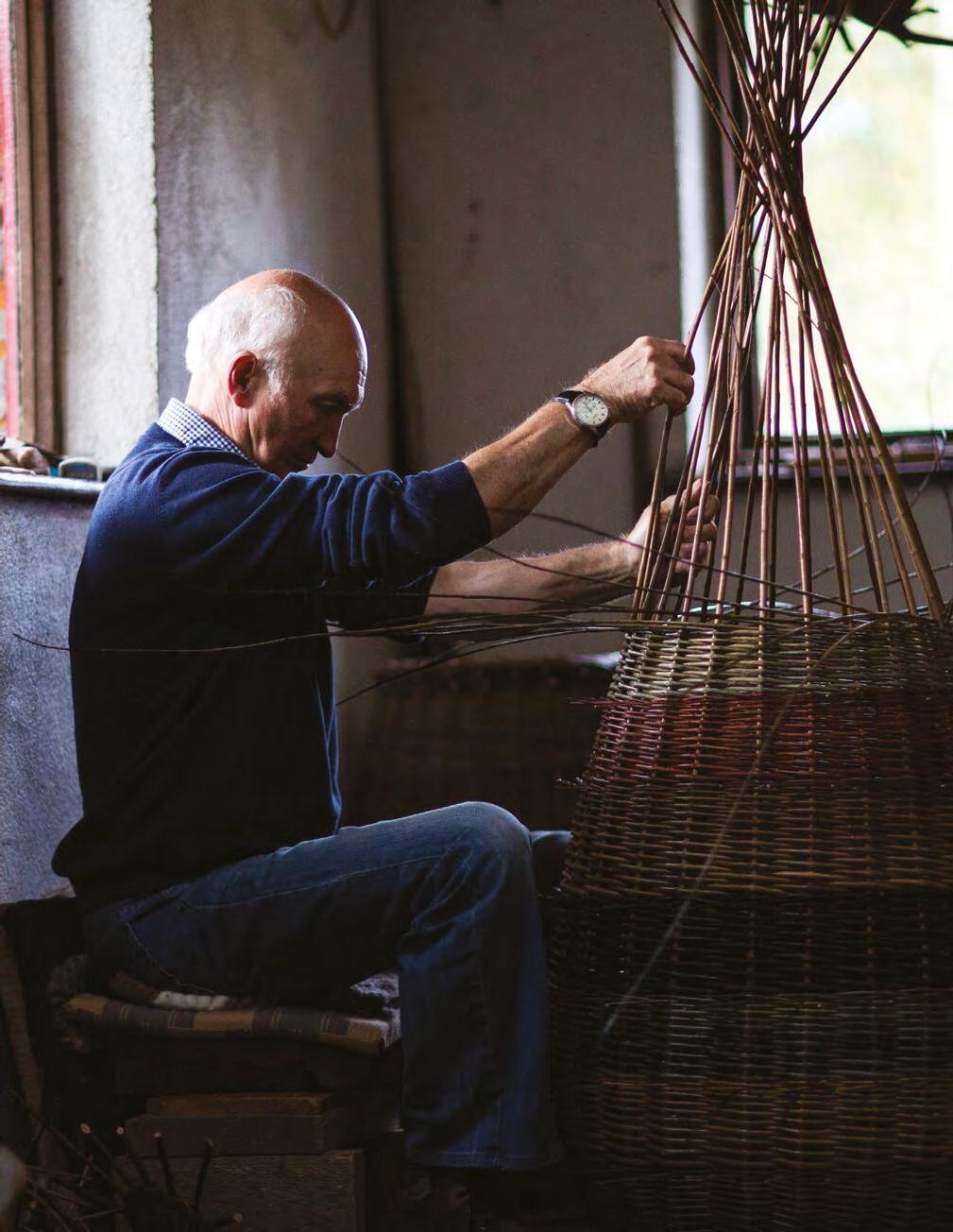

While Andrew Holmes's work fi t s in with today's environmental concerns and the obvious bene fi t s of recycling, his influences forty years ago were artists who used found materials for their intrinsic qualities. His materials are carefully chosen for their colour and provenance, and relevance to the piece being constructed. Coming to Stoke on Trent in 1974, Andrew Holmes found a cornucopia of material in the slum clearance areas where nineteenth century workers' houses were being demolished. He uses the inherent qualities of this material to make assemblages and constructions - totems and cupboards which are warm memorials to the past. His pieces always invite involvement from the spectator with their opening doors, drawers and folding parts.
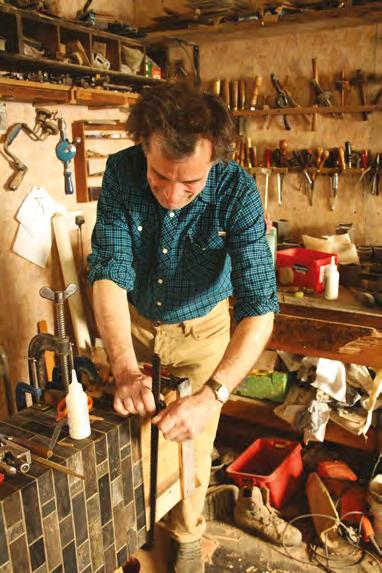
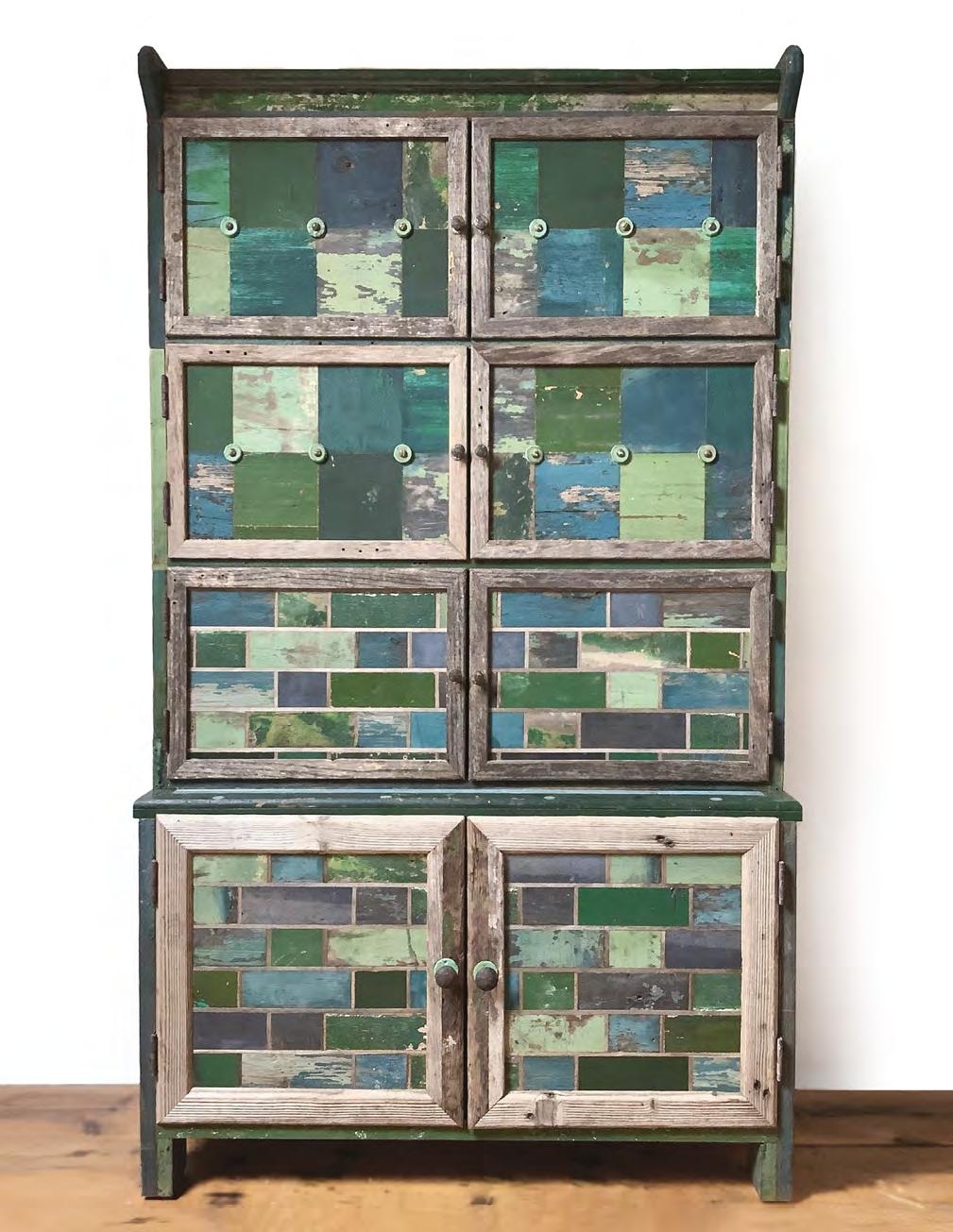
opa
66. Chest on Chest of Drawers, 2019
Demountable chest on small chest of five drawers. painted and bare wood from demolished Victorian terraced houses, chapel organ pipes, painted steel, cast iron and wrought iron

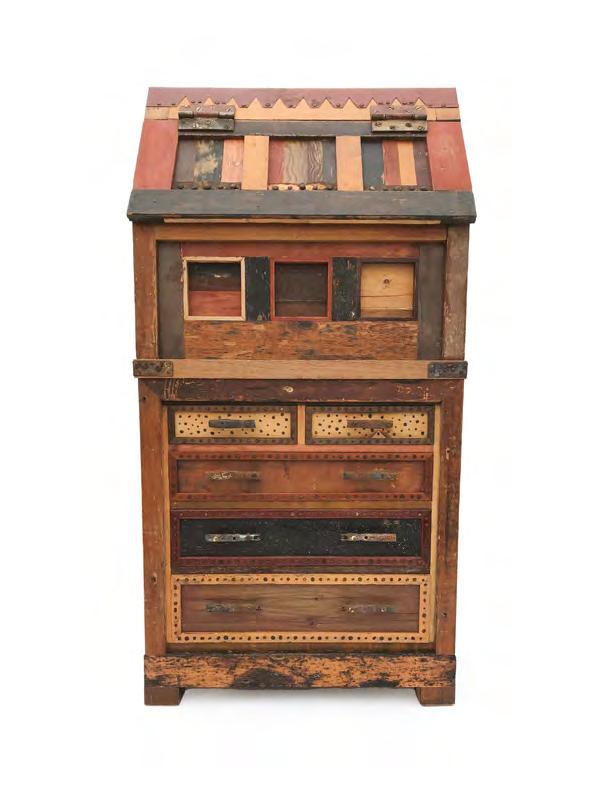
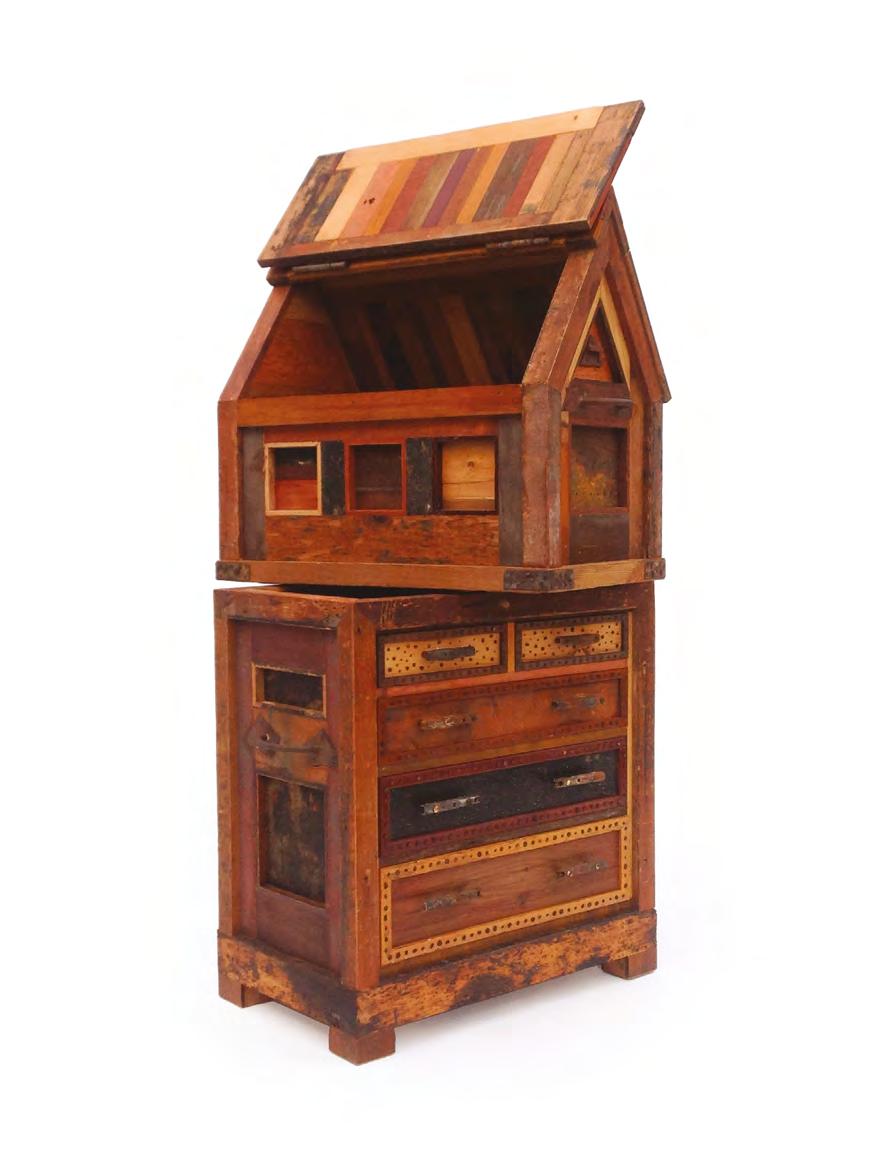
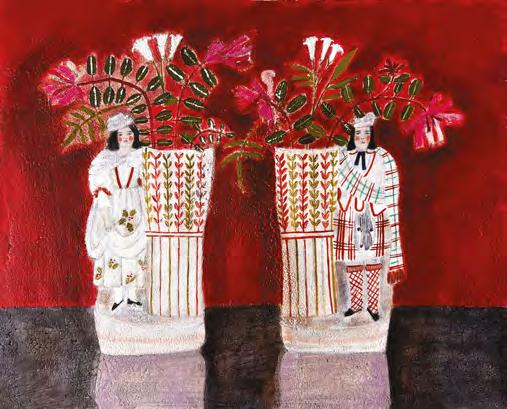
Tracey Johnston is an artist, illustrator and printmaker who studied at Gray's School of Art, Aberdeen. She works from her studio in the northeast of Scotland and has created a library of images rich with meaning and personal symbology enhanced by travel as a John Kinross Scholar and influenced by concentrated periods of study and research in Italy. Her paintings sit within layers of historical influences, from the ancient technique of fresco painting to a long line of female artists who chose 'Still Life' as their subject. This new collection of paintings and monoprints created for The Scottish Gallery are still lifes composed from Tracey’s own Folk inspired furniture and objects, often combined with flowers from the garden. Highly personal and intimate, these compositions explore colour theory, internal/ external space and domesticity.
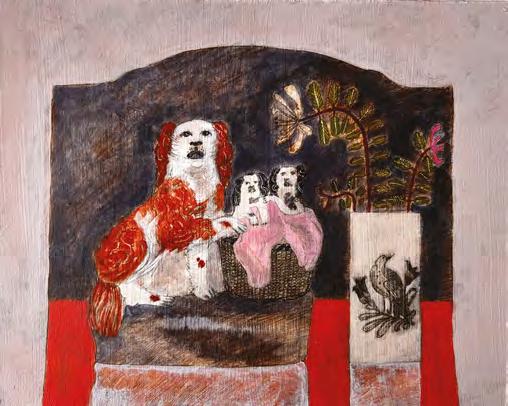
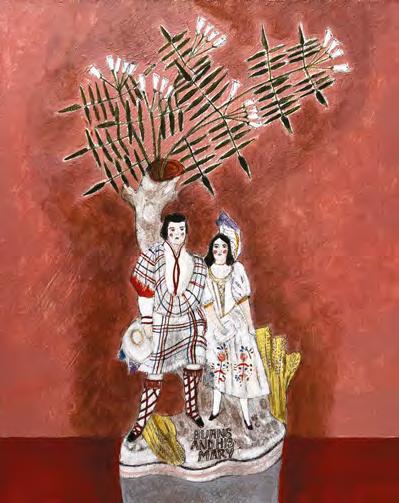

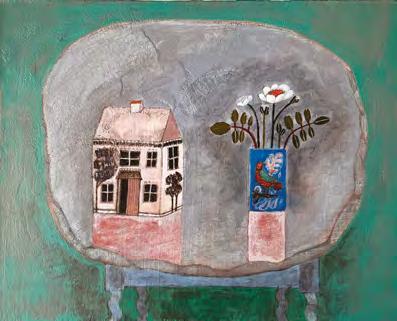
Each piece of pottery, ceramic and figurine has a story to tell.
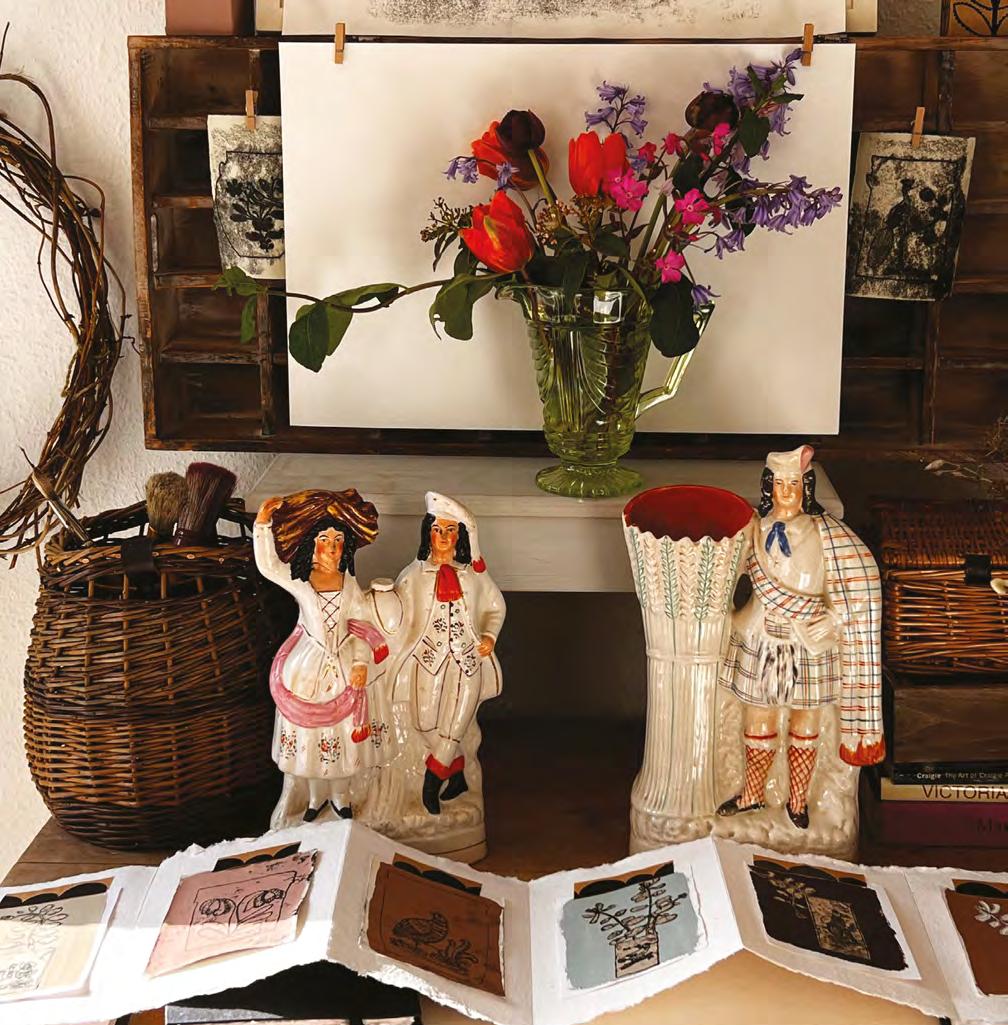
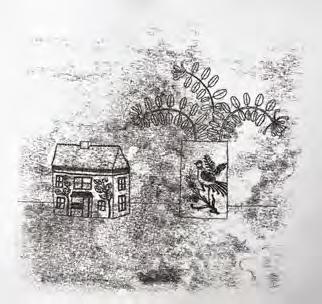
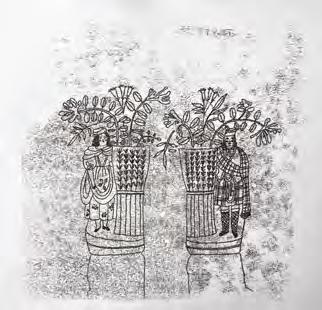
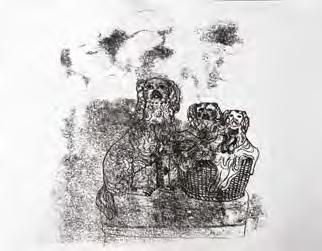
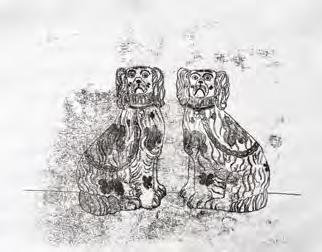
Originally from Edinburgh, Jane Keith comes from a family of artists and studied printed textiles at Duncan of Jordanstone College of Art & Design, Dundee. She has been a part-time lecturer at the College since 1996 and she currently lives and works from her studio in Ceres, Fife. Her practice centres on the production of high end, hand printed silkscreens, hand painted wearable textiles and works on paper. Her family life, professional life and rural location are all a constant source of inspiration. Her palette draws on the beautiful horticultural paradise at home which is amplified by an idyllic rural landscape. Keith has been exhibiting with The Gallery since 1998.
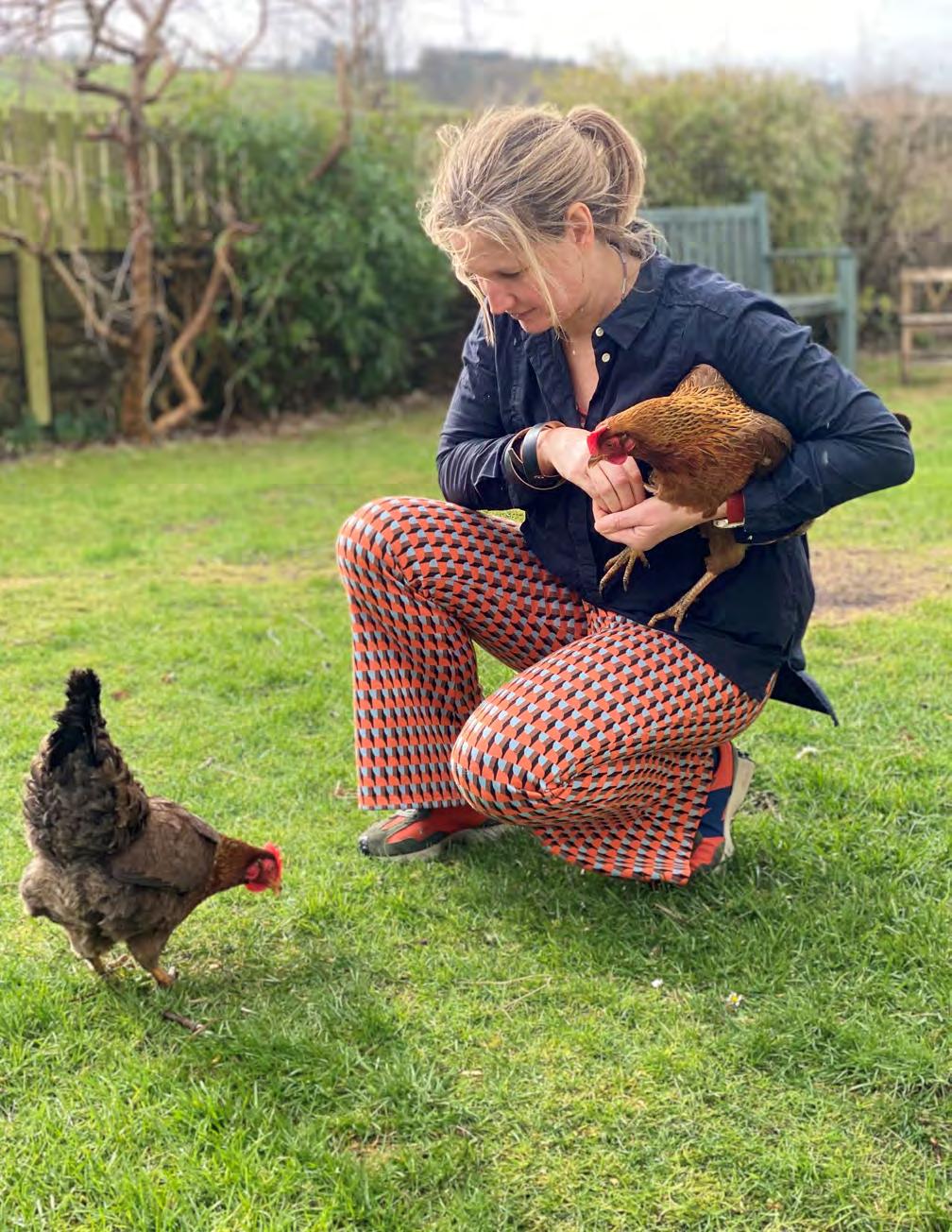
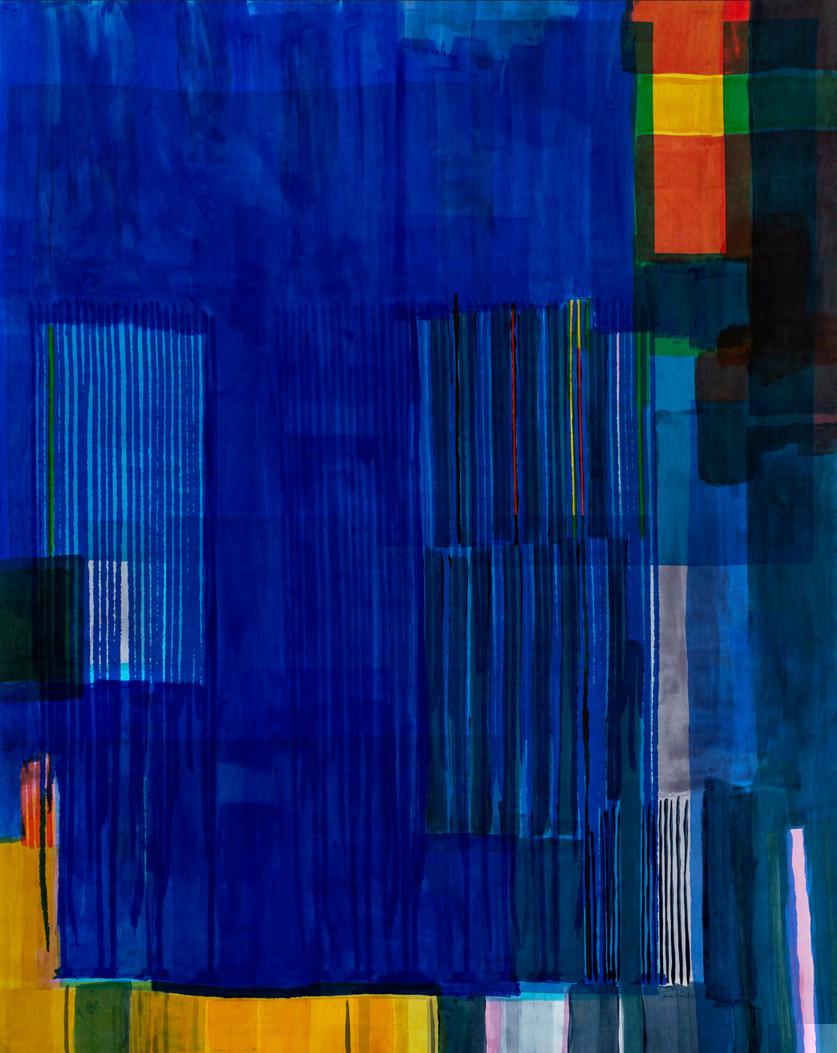 photographs: Michael Wolchover, 2023
photographs: Michael Wolchover, 2023
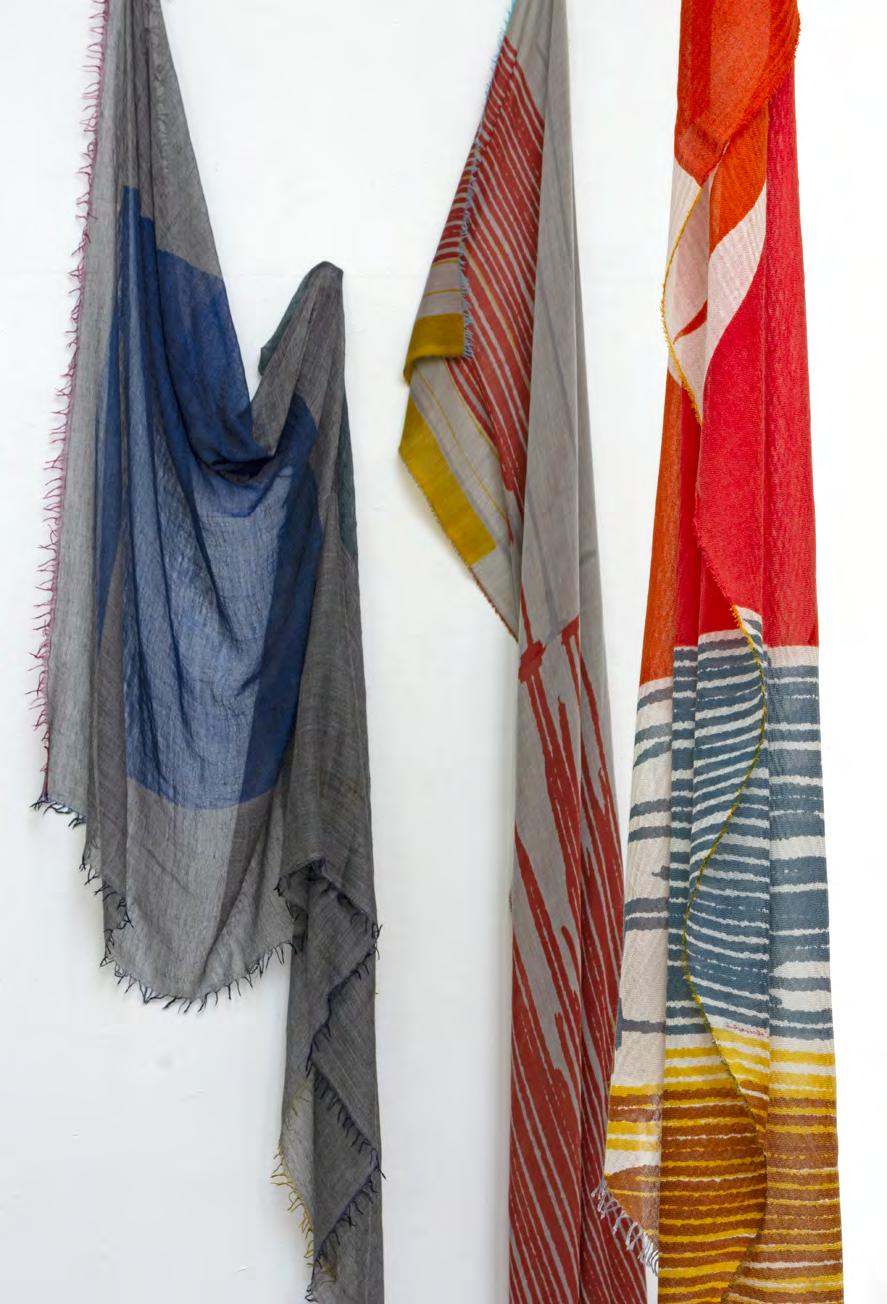
ggg
77. The Colour of Home - Filigree I, 2023
100% cashmere wrap
L200 x W120 cm g
79. The Colour of Home - Staffa I, 2023
65% cashemere, 35% silk wrap
L200 x W85 cm
gg
78. The Colour of Home - Cashmere wrap III, 2023
100% cashmere wrap
L200 x W70 cm
80. The Colour of Home - Cashmere wrap II, 2023
100% cashmere wrap
L200 x W70 cm
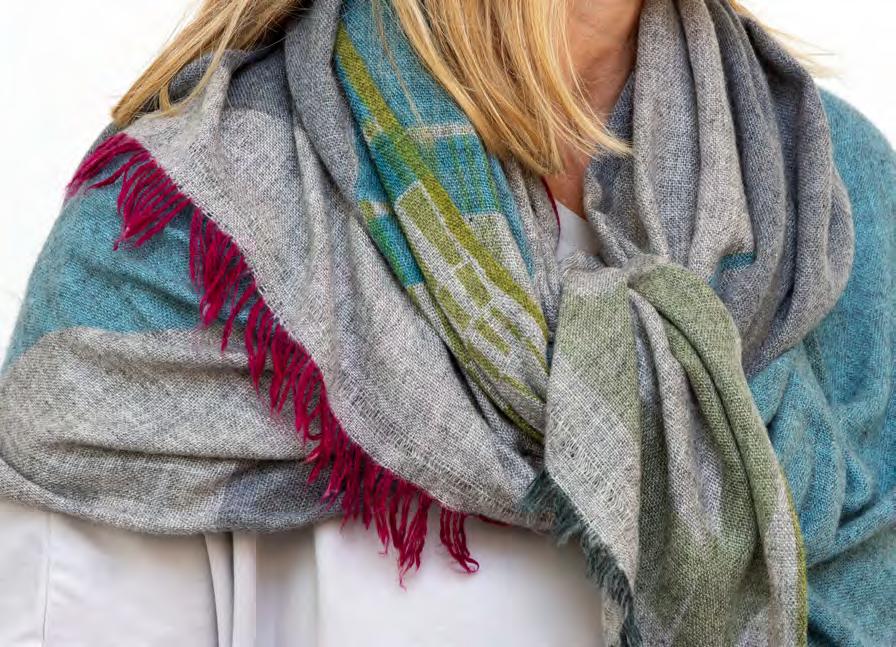
I am a colourist at heart. Colour is at the core of everything!
Rachel Larkins is a designer maker whose practice has focussed on creating jewellery with a strong sense of narrative and a nod to the tradition of miniatures. Larkins works primarily in resin, brass and wood, often encapsulating imaginary scenes and figures which are hand modelled and painted. Based in the village of Sopley, Larkins’s influences range from the surrounding rural landscape and seasonal folklore to magical realism in literature and painting.
h
81. Mantle Dog Brooch, 2022 brass, resin, with handmodelled and painted inlays, antique coral bead and oxidised silver chain H6.5 x W4.5 cm
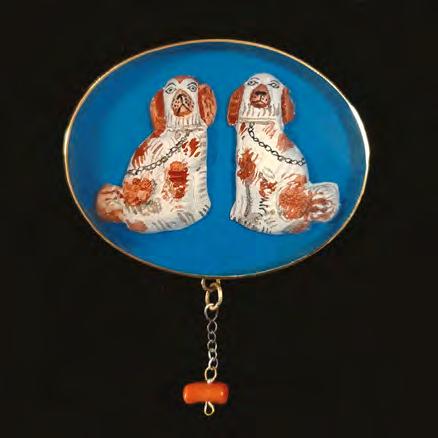
g
82. Mantle Dog Earrings, 2022 brass, resin, with handmodelled and painted inlays, rolled gold hooks and antique coral beads H3 x D1.5 cm

a
83. Whale Necklace, 2023 brass, resin, with handmodelled and painted inlay and reclaimed glass seed beads H2.5 x W5.5 cm
I have always been drawn to objects behind glass, perhaps in recognition that someone from the past has preserved those things considered precious and ephemeral; mourning jewellery holding hair; bell jars holding birds, insects or dolls; dioramas and ships in bottles. The wearable pieces I make are influenced by the intimacy and hidden stories of small scale miniatures as well as by folklore and fairy tales.

For ‘Folk at Heart’ I have made a small collection inspired by the mystery of the seventeen miniature coffins found by a group of boys in a small cave at Arthur’s Seat, Edinburgh in late June 1836. Eight of these coffins survive to the present day and are displayed in the National Museum of Scotland. The pieces I have created are a response to the theories and related folklore which have evolved since their discovery.

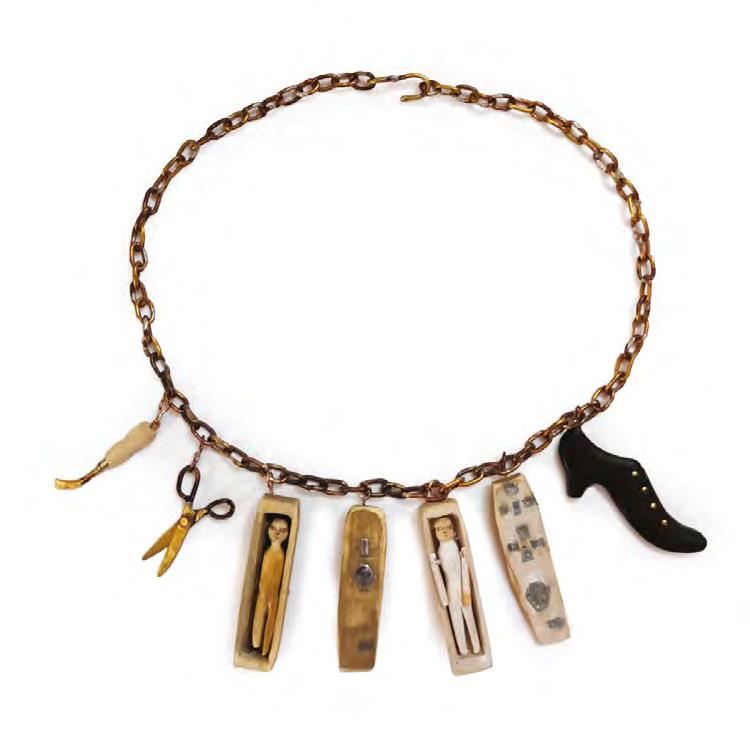
After graduating from Glasgow School of Art in 1998, Diana Leslie returned to her home in Orkney to set up her studio in Stromness. It is her deep sense of belonging that allows Leslie to create intimate and honest depictions of the Orcadian townscape and community. Her sources are various; Stromness, the sea, flowers, art. She works with paint, print and drawing. Landscape is central to her practice.

I paint Orkney outside. The wind and dynamic light are energies which make me happy; they fly by while the mass is going nowhere.
Diana LesliePainting has a magical property: it can hold on to energy and strange things like freedom, even when the artist is long gone. It tells its own truth.

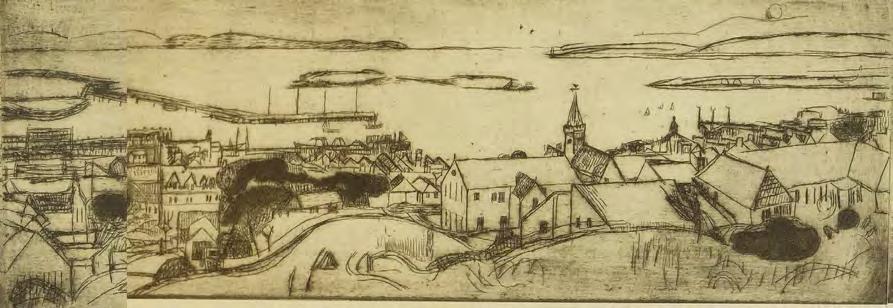
Angie Lewin was born in Cheshire and studied Fine Art Printmaking at Central St. Martins College of Art and Design before completing a postgraduate degree in printmaking at Camberwell School of Arts and Crafts. After working in London as an illustrator she studied Horticulture and then subsequently moved to Norfolk, which prompted a return to printmaking. Angie lives and works in Speyside, Scotland.
In recent years, her practice has centred around watercolour and she was awarded RWS in 2016. Inspired by both the clifftops and saltmarshes of the North

Norfolk coast and the Scottish Highlands, she depicts these contrasting environments and their native flora in watercolour, wood engraving, linocut, silkscreen, lithograph and collage. Lewin's still life subjects often incorporate seedpods, grasses, flints and dried seaweed collected on walking and sketching trips. A Wedgwood cup designed by Ravilious may contain feathers and seedheads.
Public collections include: Victoria & Albert Museum, London; The Ashmolean Museum, Oxford; The London Institute; The University of Aberystwyth.
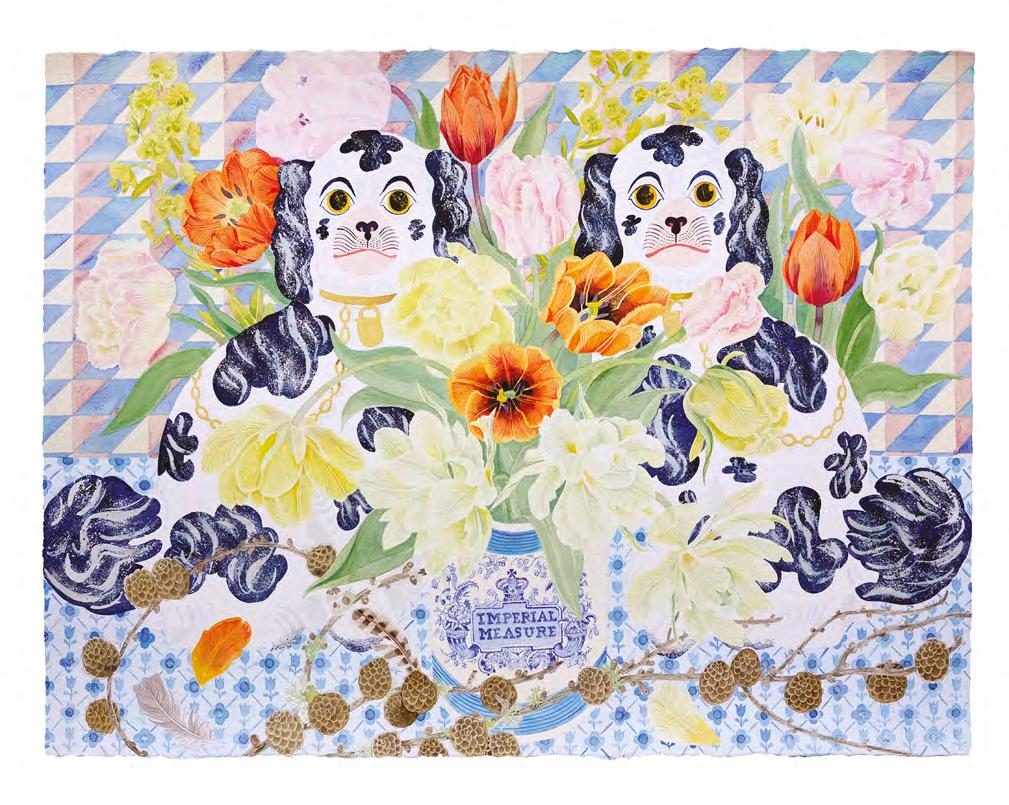
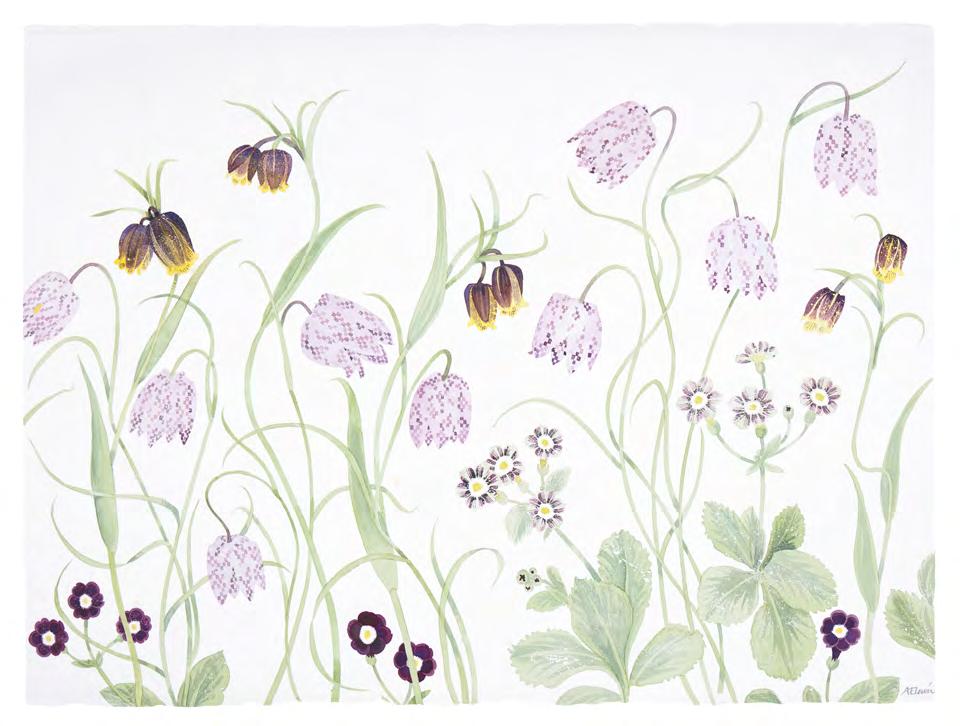

Angie Lewin brings her own vision of the natural world to her work. She sees the beauty in all seasons and all manifestations of plants: the ordered pattern of the blooms, the thrusting energy of the emerging buds, the prolific seedheads and the varieties of shapes, colours and habits to be found in meadow and border.
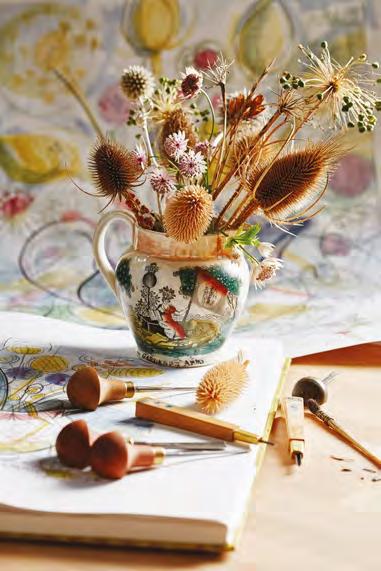
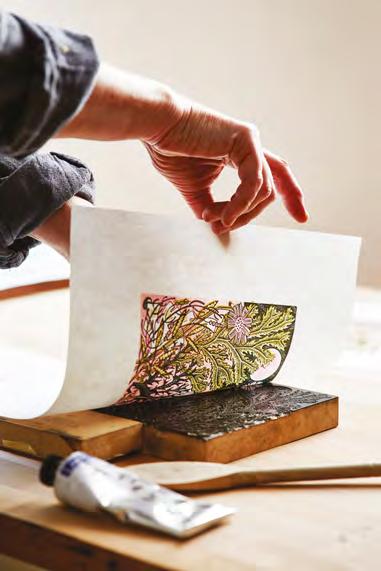
h
89. Harvest, 2017 linocut 17 x 11 cm
o
90. Fern Cup, 2023 wood engraving and linocut 15 x 15 cm

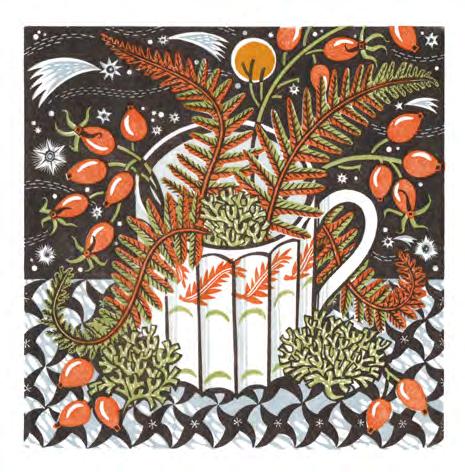
g
91. Cromarty Bowl, 2014 lithograph 19 x 20.5 cm
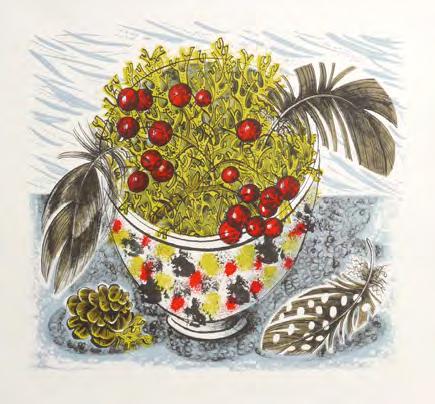
Nature and history pass through Anna’s hands as she weaves using willow she grows, cuts, sorts and prepares herself. Based in Edinburgh, Leibmann uses willow that was grown in Scotland organically or conventionally in Somerset. Every year in the early spring you will find Anna in the willow patch with friends, harvesting the year’s crop, hand weeding and restocking for next year. The first crop was cut from the willow patch in 2005, the year her daughter was born. Anna grows eight types of willow in the patch, of different colours, hues and elasticity. Some of them are stout, making them ideal for a basket’s skeleton. Others are long and slender, and can be woven in and out of small spaces. Anna aims to contrast the dappled hues of the different willow barks within her work. Through the year, particularly as she is creating baskets and forms using her home grown willow, the affection for the material carries on through the work. The baskets are things of beauty; sturdy and precise.
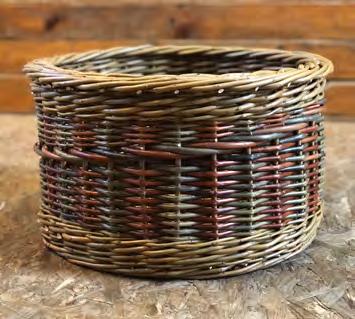
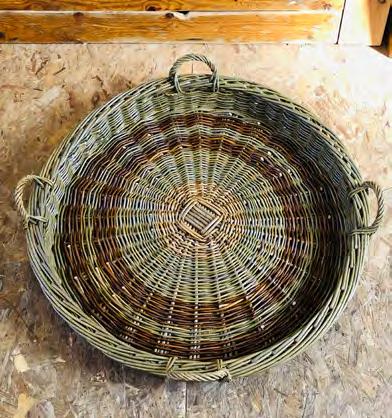
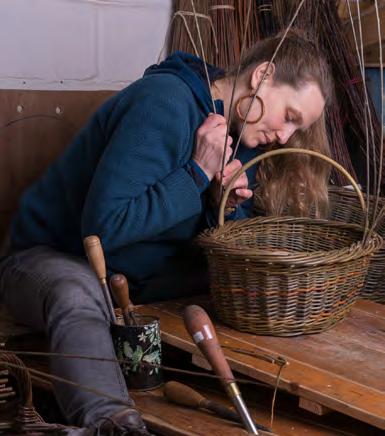
 h
94. Chimney, 2023 willow
H123 x D34 cm
h
94. Chimney, 2023 willow
H123 x D34 cm
Vicky Lindo and her partner, Bill Brookes, have been making ceramics since 2013 alongside Lindo’s painting practice. The duo work in their studio in Bideford, Devon. The couple’s work draws on subjects as diverse as classical mythology, history, the natural world, politics, and their everyday lives. Vicky studied Textiles at Herefordshire College of Art & Design and discovered a love of slip casting after she started working at Bideford Museum. They are inspired by traditional English slipware pottery and images that Lindo describes as, anything from a funny story heard on the radio, heroic animals, a pattern on an antique rug or a beautiful old tree in the local park.

In 2019, Lindo created a body of work entitled Dead Dad Book , which took the form of nine largeform vessels which told the story of Vicky Lindo’s father, who came to Britain as part of the Windrush Generation. The vessels explored themes of migration, racism and identity. The entire body of work was acquired for the Victoria & Albert Museum, London.

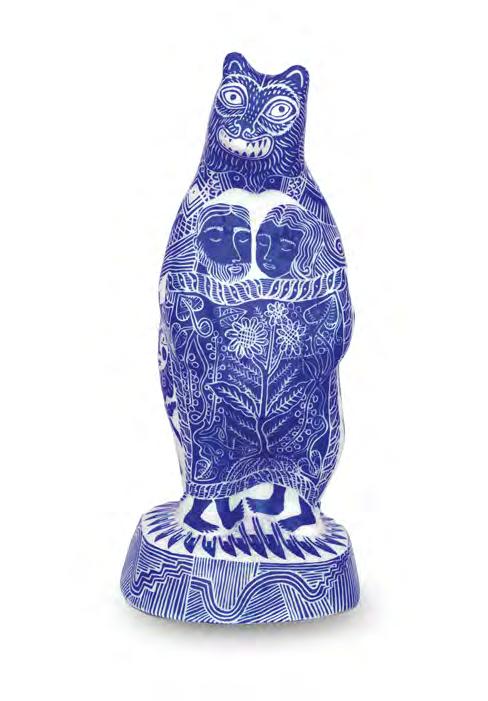
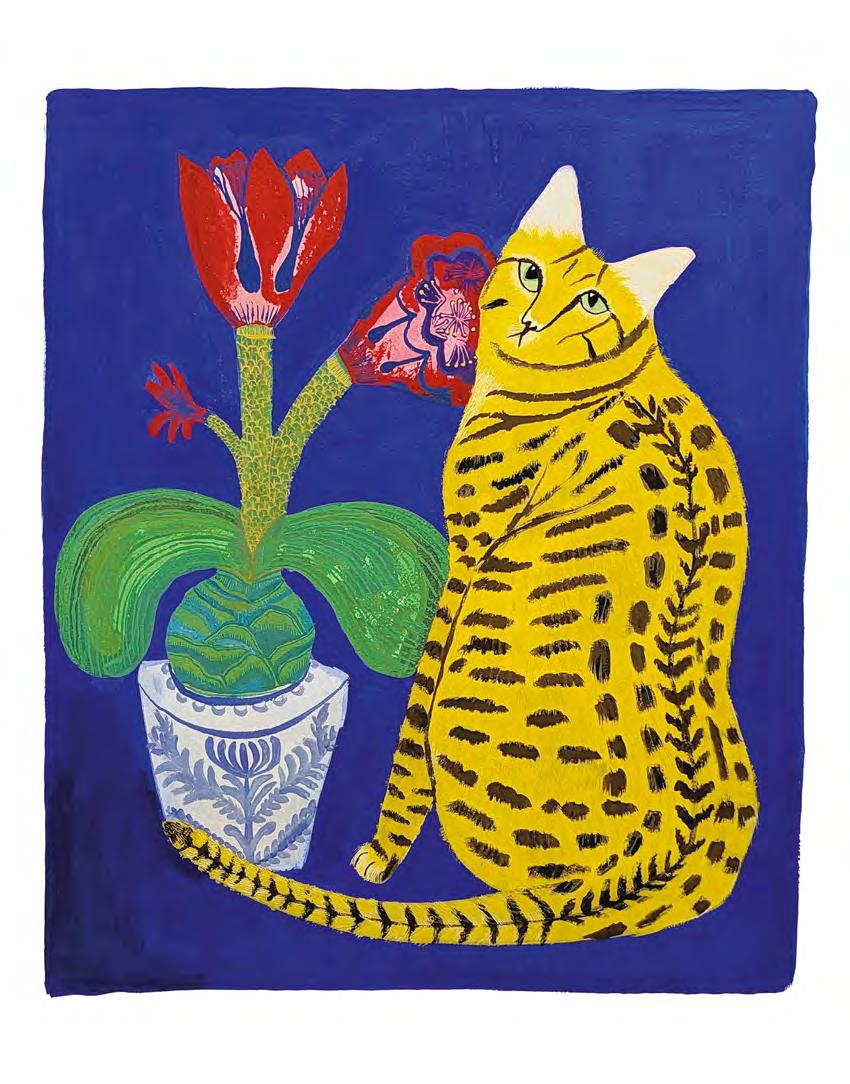
97. Disclose Nothing, 2023 Vicky Lindo and Bill Brookes slip cast earthenware plate with coloured underglazes and sgraffito decoration
D27 cm
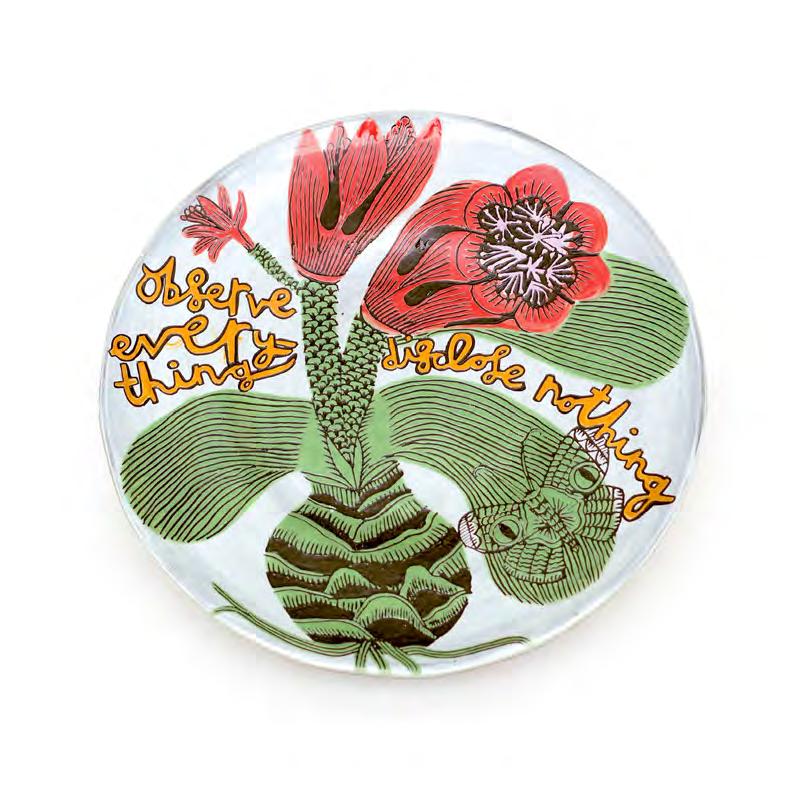
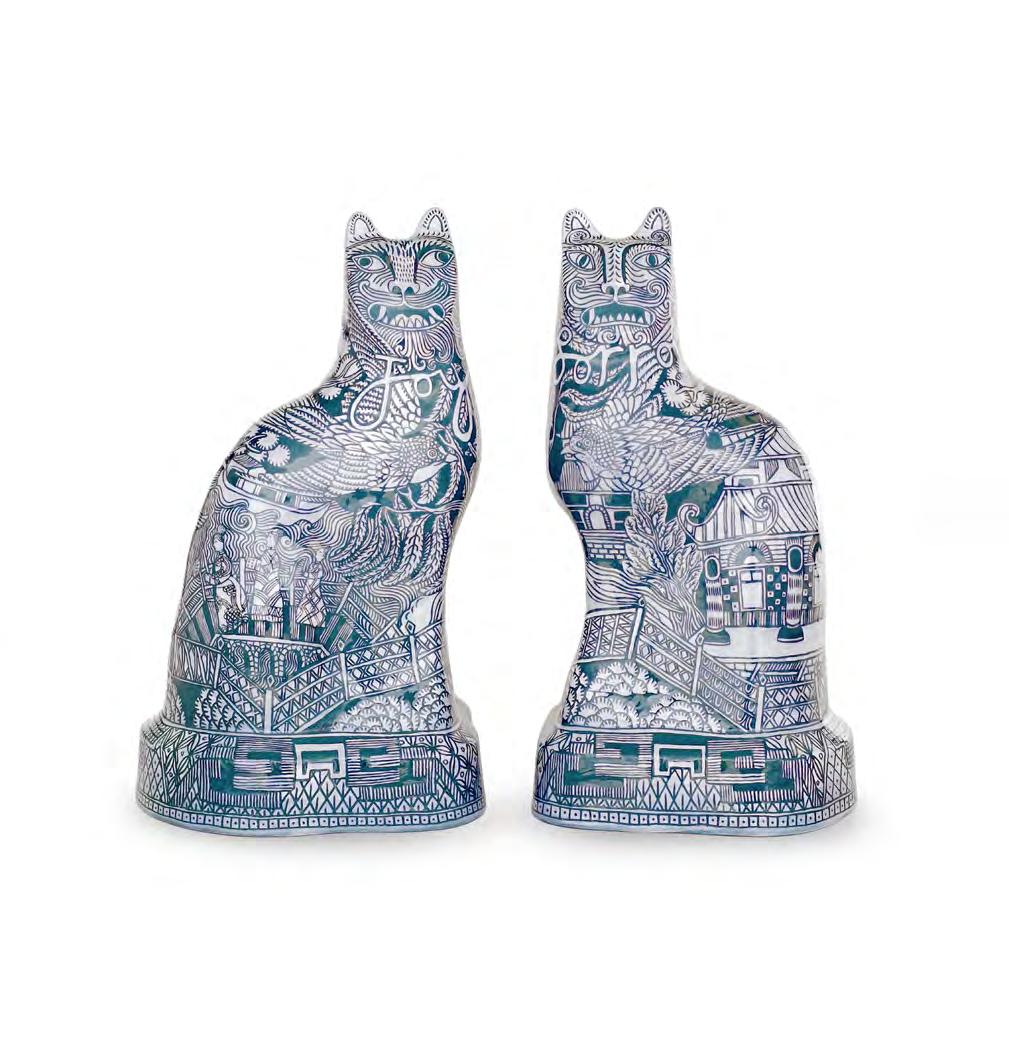
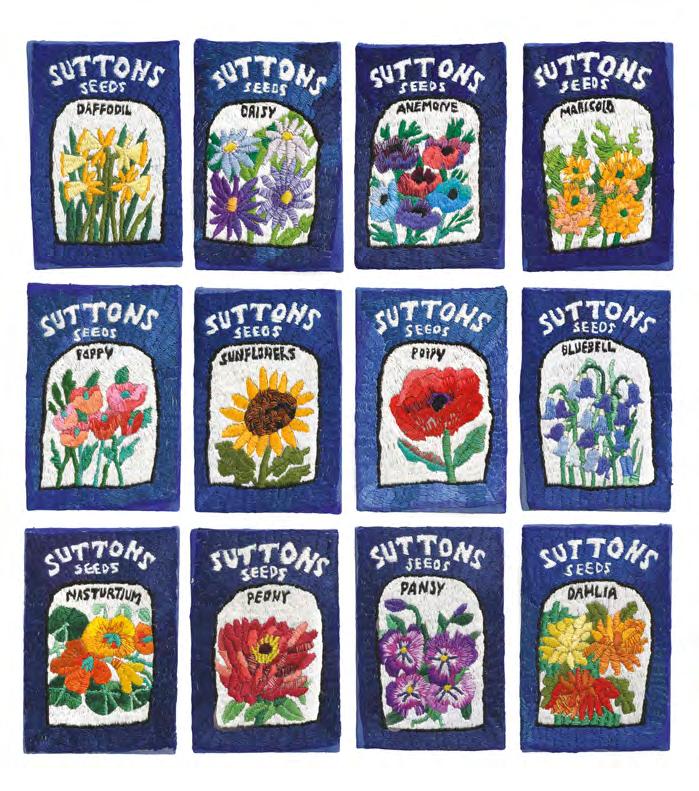
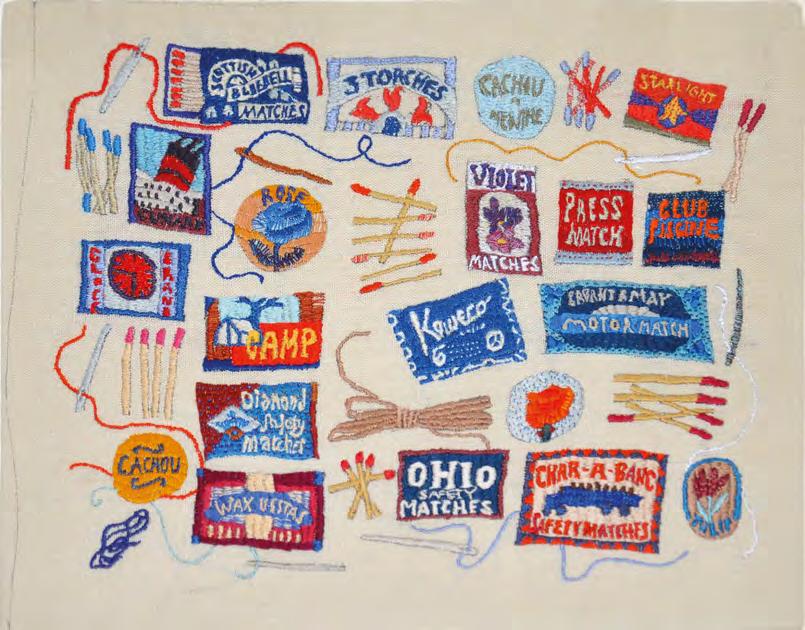
23 x 23 cm

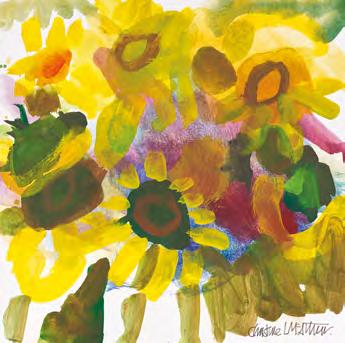
d
s
Christine McArthur trained at the Glasgow School of Art from 1971-76 under David Donaldson, James Robertson and Leon Morrocco. She taught at both Glasgow University and the Glasgow School of Art up until 1980, when she began painting full time. She was elected to the RGI and the RSW. McArthur inhabits an immersive, creative world and tends to work in a series of ‘diaries’ from which finished work emerges. The passing seasons are observed, intertwined with imagery from her surroundings and familiar objects. She is a mixed media artist who specialises in oil, oil pastel, embroidery, acrylic, watercolour, pen and ink and collage.
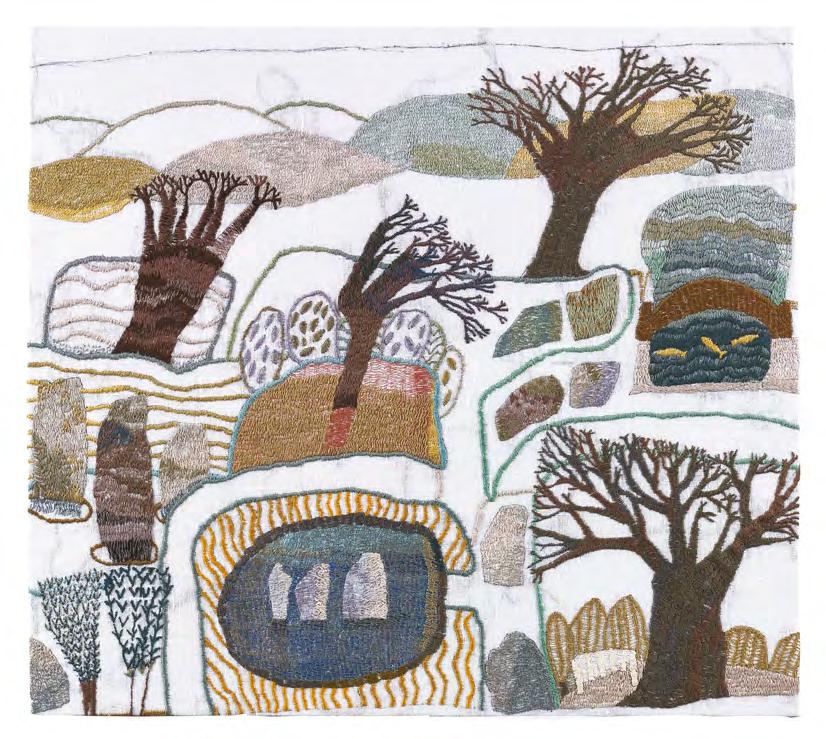
Adrian McCurdy has worked with wood since an early age. With a background in Fine Art, Adrian’s career moved first from painting to a development of unique wood-skills in furniture and more recently carved panels. From his workshop in the Scottish Borders, Adrian produces furniture using quality local timber and craft techniques both long established and contemporary, often working with storm damaged wood felled by local saw-mills. Public collections include: Perth Art Gallery and Museum; National Museums
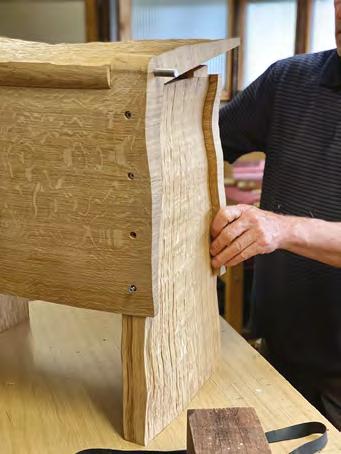
Scotland, Edinburgh; Globe Theatre, London; Ann Getty Collection, Hawaii.
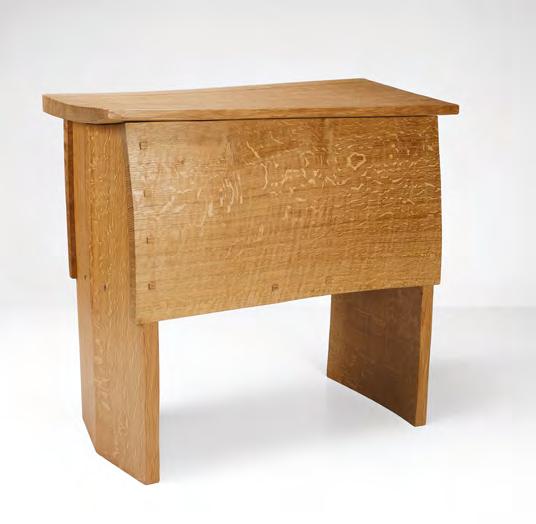
My roots in traditional crafts go back to childhood experiences in a home where hand making furniture was my Father's career and regular conversation subject. We even had a lesson in cutting bread.
I took a somewhat contrary direction by choosing art college and painting, but perhaps unsurprisingly found earning an income easier using what felt like natural wood-skills. I found a part-time opportunity that brought me to the Scottish Borders 45 years ago to assist Tim Stead with furniture. Although Tim's preference to folk art was greater than mine, the simple approach he practised made sense to me.
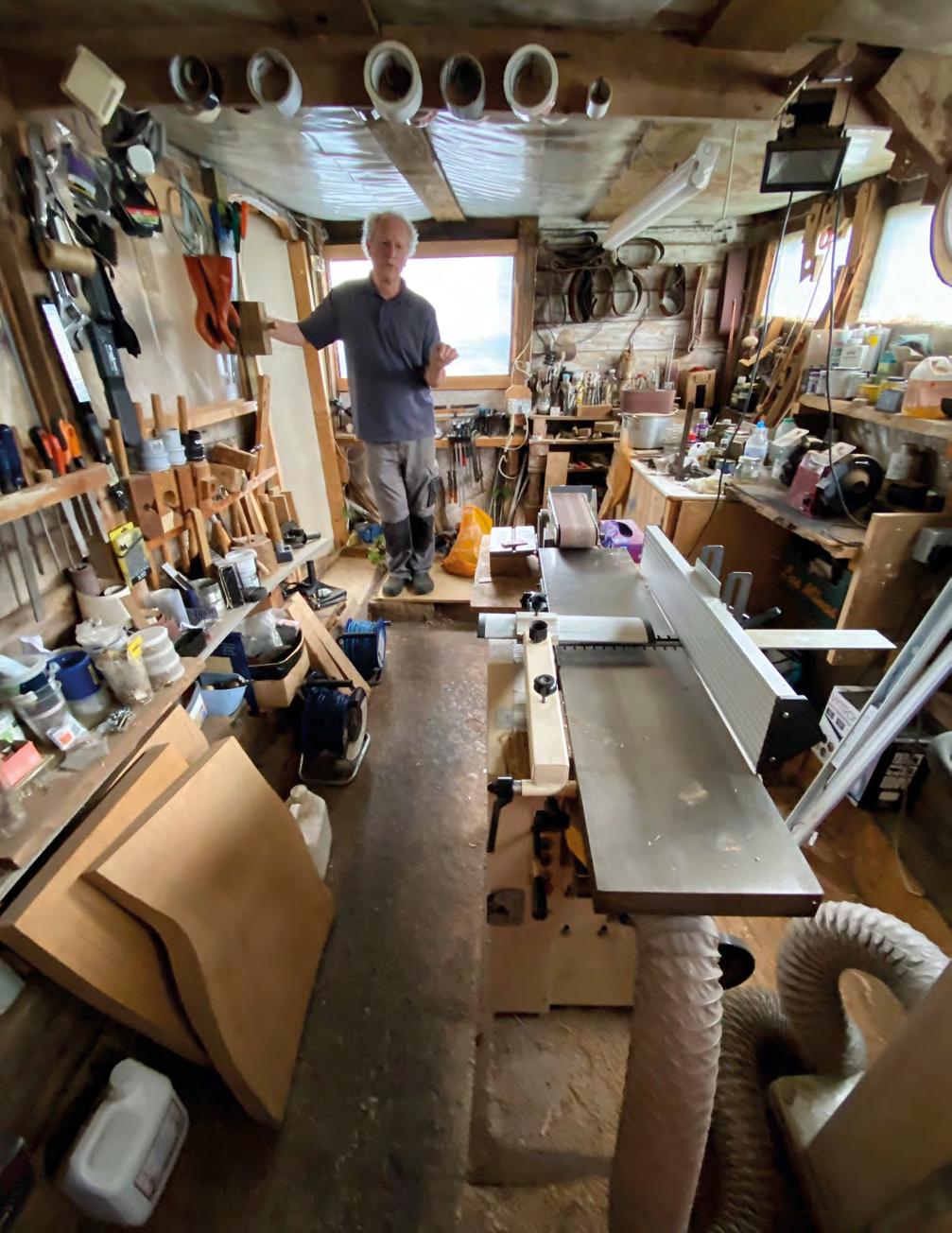
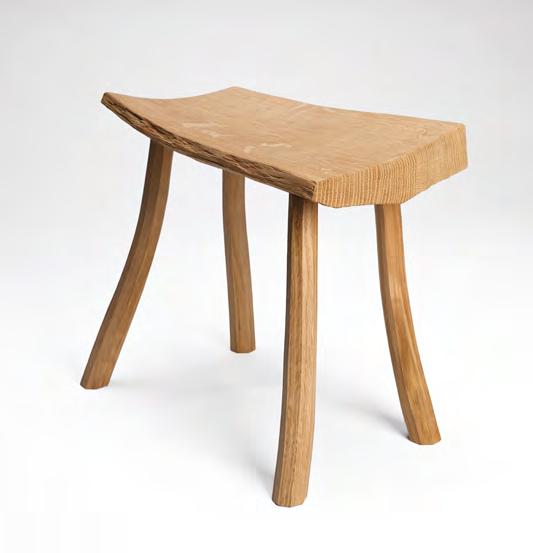
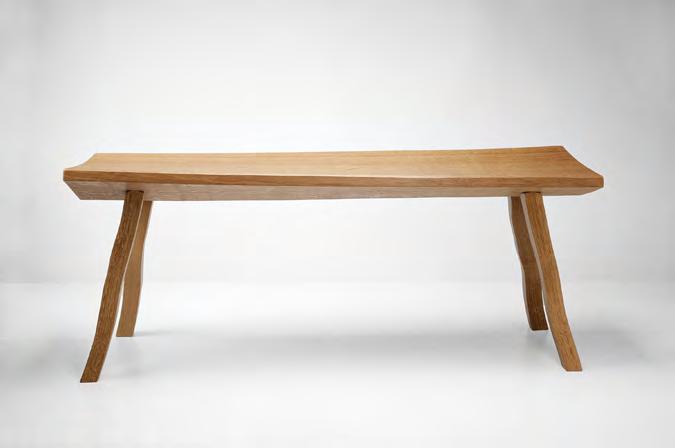

I have managed to blend uncomplicated jointing with sculptural minimalism expressed through the woodcraft of cleft oak. Referring back to early styles of cottage furniture has become a frequent source of inspiration and rudimentary character. I like things to last well and be relevant over time to fresh interpretation.
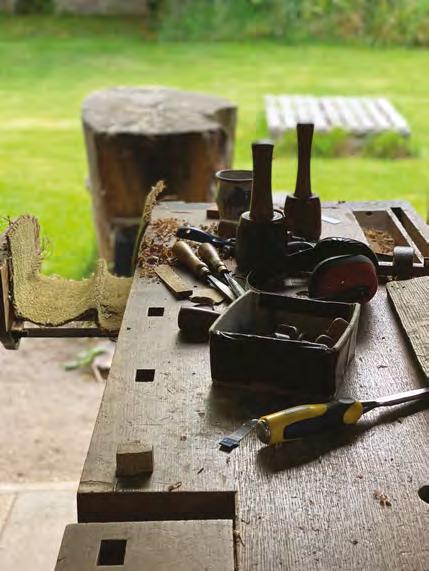
g
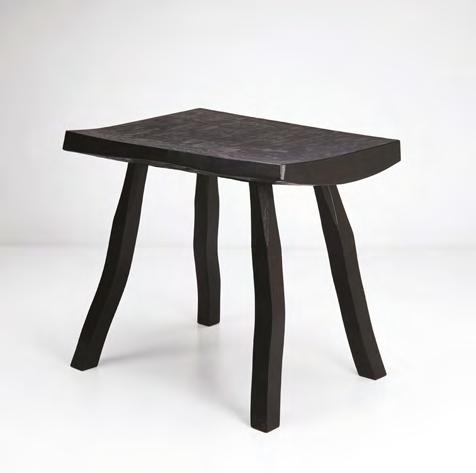
Michael McVeigh is a modern day folk artist who depicts the world around him. He is a participant observer who has created a naïve and sophisticated setting for contemporary life and history. There is something of the medieval chronicler about him; he draws and paints what is there, and what is worth depicting because it is an essential, occasionally quirky, part of human existence.
McVeigh lives and works in Edinburgh. He trained in drawing, painting and printmaking under James Morrison and Alberto Morrocco at Duncan of Jordanstone College of Art & Design, Dundee.
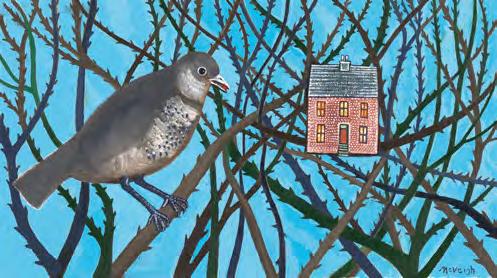
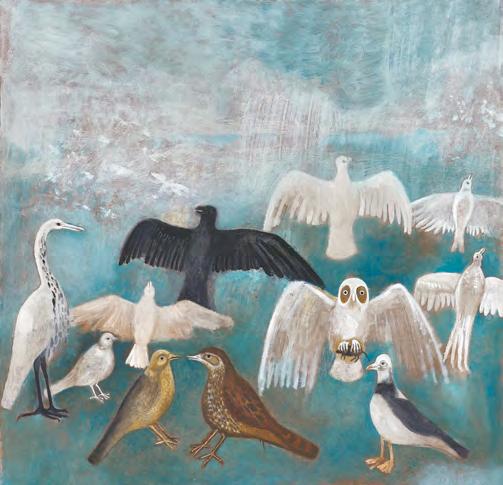
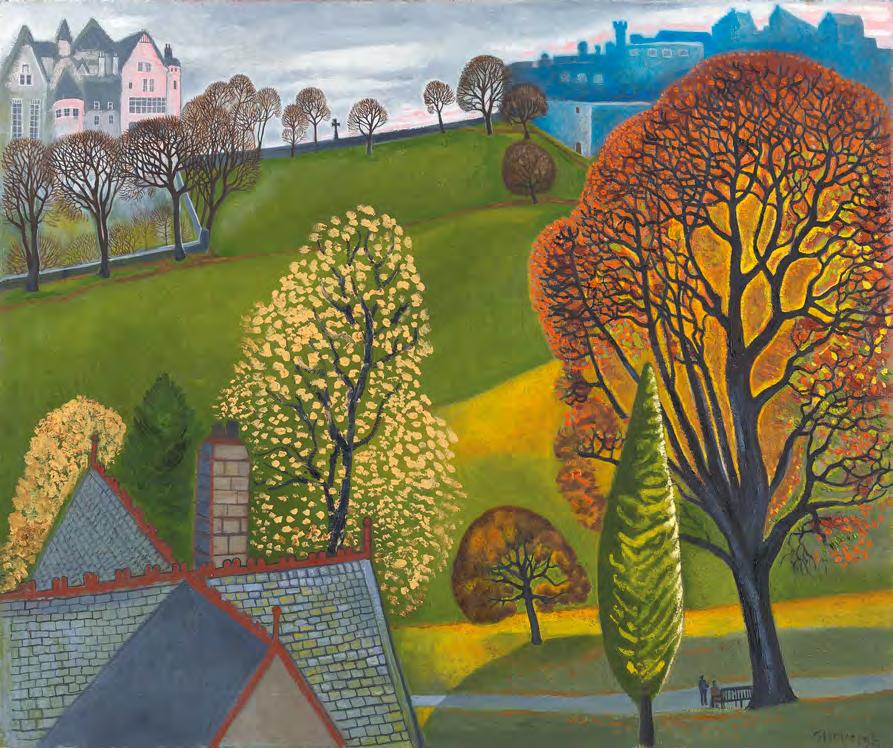

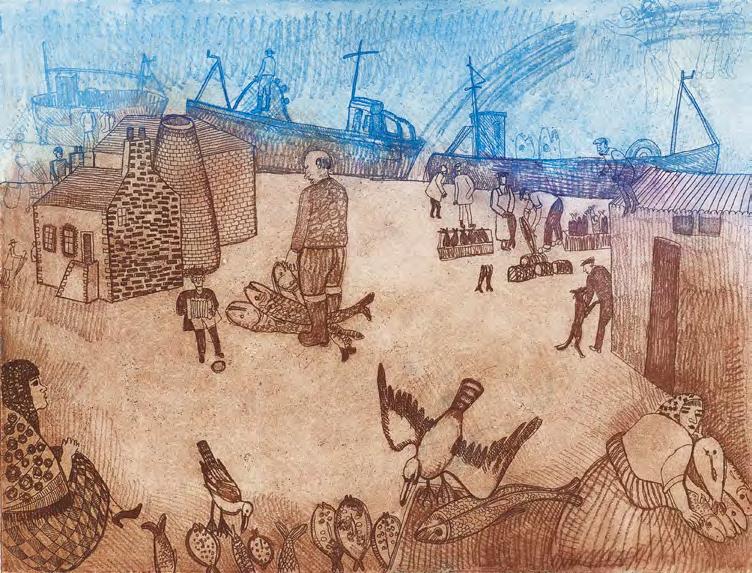
a 113. Thornbirds Yellow, 2023 oil on canvas 60 x 60 cm

d 114. The Pigeons Return, 2023 oil on canvas 48 x 68 cm
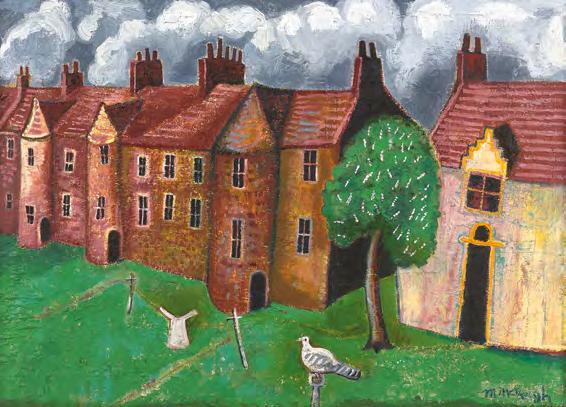
o 115. Blossom, Princes Street Gardens, 2023 oil on board

33 x 45 cm
g 116. Thornbirds Red, 2023 oil on canvas
63 x 79 cm
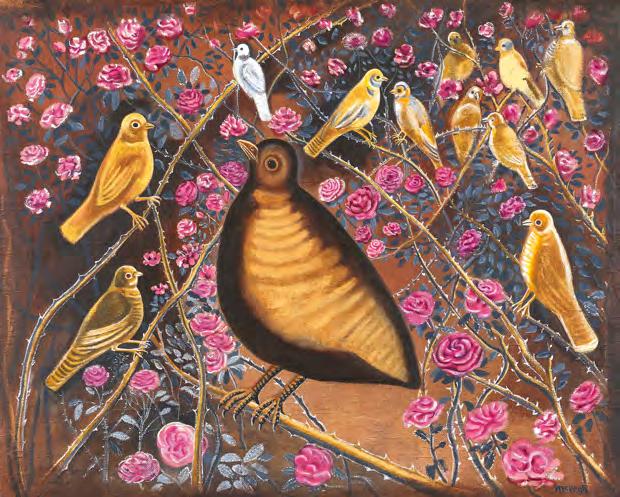
Akeen sense of history is a clearly discernable thread running throughout Katrin Moye’s work. References to European Delftware, Italian Majolica and French faience pottery abound on exquisitely detailed hand-painted surfaces, whilst many and varied shapes such as flower bricks, tulipieres, posset pots and sugar casters recall a pre-industrial age of many hands at work in kitchens, apothecary shops and gardens – and from there to a formal setting at the dining table sumptuously decorated with ornate serving ware, fluted candlesticks and ingeniously designed vessels for elegant floral display. Katrin Moye works from her studio in Nottingham.
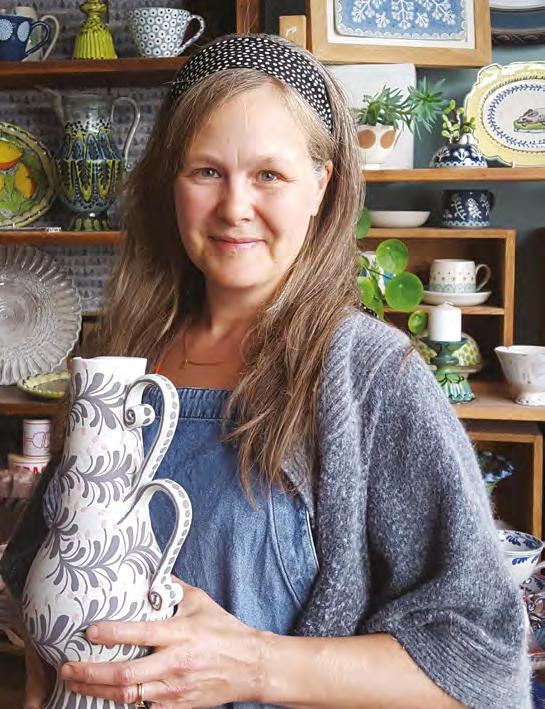
117. Pigeon Tiles 2021 chocolate black earthenware, decorated with slip, underglaze and sgrafitto, under a clear leadless glaze H13.5 x W13.5 cm each
118. Flower Tiles, 2023 red earthenware, decorated with slip, underglaze and sgrafitto, under a clear leadless glaze H9.5 x W9.5 cm each

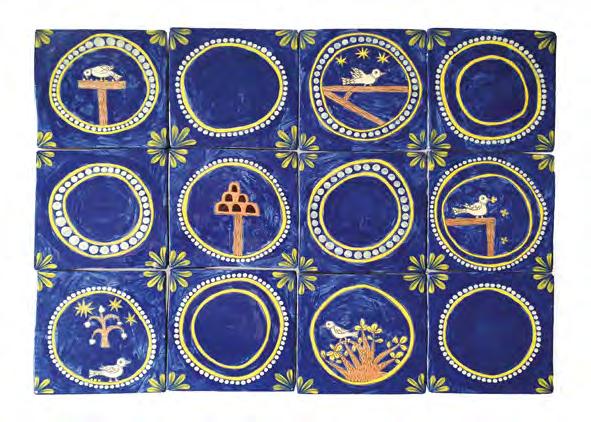
The Pigeon Tiles are inspired by the decoration on a majolica albarello jar
I saw at Waddesdon a few years back, adapted to feature the pigeons in my back garden.
Helen Munday, although born in London, grew up in the Sussex countryside, before choosing art college at the age of sixteen. Seeking a sense of community and freedom, she moved ‘on the road’ in 1996 and spent twenty years travelling, some of it with horse and wagon, raising her young family.
Taking up basket making came as a natural choice as hedgerow materials were readily available and you don’t need lots of expensive tools. Continuing living her alternative, traveller lifestyle in her self-converted truck in rural Herefordshire, Helen’s work is often influenced by her anarcho-socialist views.
Learning traditional basketry skills from accomplished makers such as Jenny Pearce and Joe Hogan, Helen gained the knowledge and proficiency that enabled her to turn her passion into a business. Returning to education in 2019 Helen studied Contemporary Design Crafts at Hereford College of Art. This allowed her to explore and experiment with her practice and create objects with a narrative behind them.

From the first time I made a basket I was hooked! The smell, the feel of the willow and the pattern and repetitive strokes just came naturally to me. The possibilities are endless.
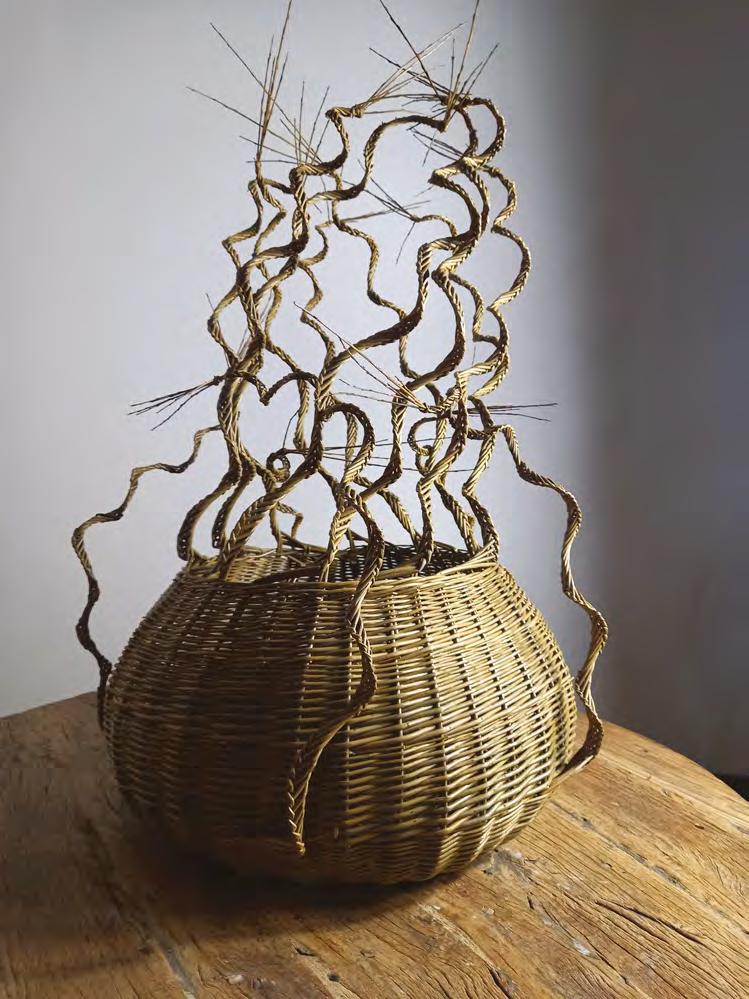
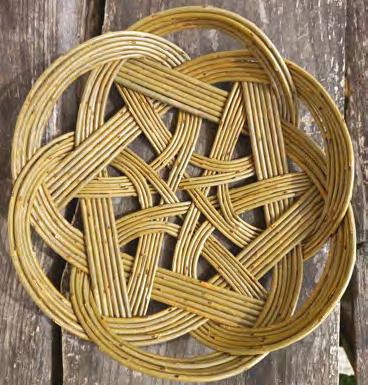

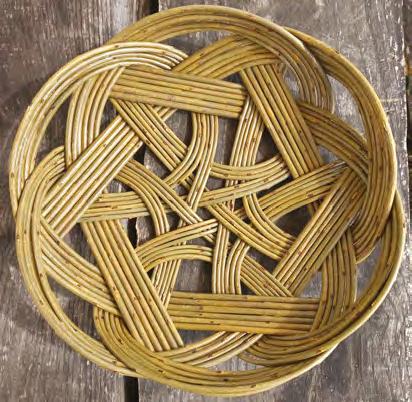
I love the sustainability of the craft and grow a lot of my own willow. I feel grateful each winter when I come to harvest the rods due to how circular the process is. The baskets and artworks I create can go back to the earth at the end of their long lives and nourish the ground once again.

Digging up metal detector finds was the foundation of a passion for objects which others might not quite appreciate. This fashioned the beginnings of a lifetime of habitual collecting. Utilising this drive to accumulate the unconventional and unwanted, coupled with an aesthetic appreciation of the details of decomposition and change, I choose to incorporate items potentially paradoxical within jewellery, to create beautiful and on occasion, confusing objects. Employing symbolic references of form, material and technique, I dabble in the potential for wearable items to become vehicles for communication; whether through sense, nostalgia, or knowledge.
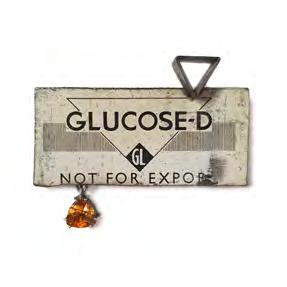

 Jo Pond
Jo Pond
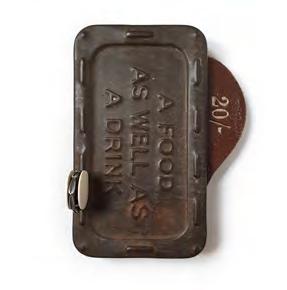



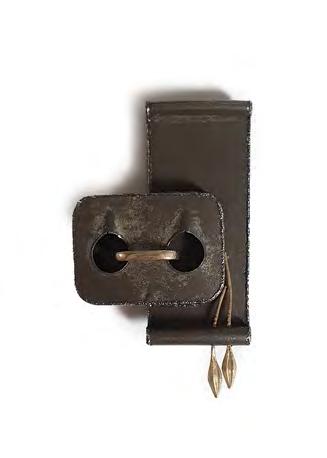
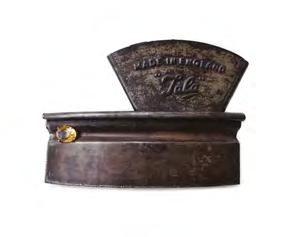
Claire Roberts is an artistprintmaker based in Aberdeen, Scotland. She studied Fine Art Printmaking at Gray’s School of Art, Aberdeen, and The Slade School of Fine Art, London.

Claire creates reductive relief prints that evolve through the drawing, cutting and multiple layering of colour upon colour. Her prints feature portraits of enigmatic female characters and are explorations of the conventions of portraiture and traditional concepts of beauty. Her richly coloured and highly decorative portraits are not of “real” people but are imagined characters inspired from art history, music
and film. These, mainly, female characters are not passive figures and they may confront or deliberately avoid your gaze - but what is hidden or revealed of their inner world in how they are portrayed to the world? Claire’s prints capture moments in time, yet are timeless.
Claire is a Printmakers’ Council and Royal Scottish Academy prize-winning artist and has exhibited nationally and internationally. Her work is held in many collections, including the Royal Scottish Academy, Edinburgh; Robert Gordon University, Aberdeen; University College London; Grampian Hospitals Art Trust and Aberdeen Art Gallery.


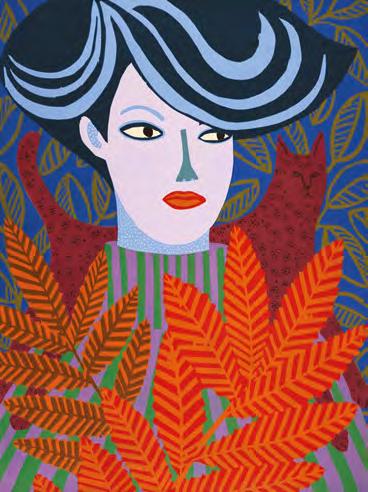
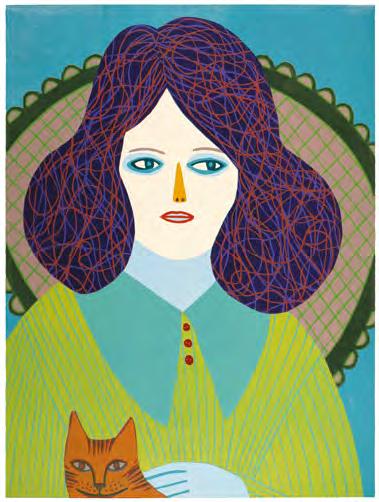
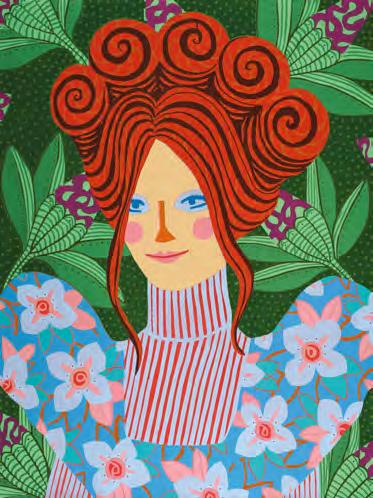
Terry Shone lives and works in Whitby, North Yorkshire. After training in ceramics and sculpture at Leeds Arts University and Goldsmiths’ College, London, he was awarded a Rockefeller research fellowship at the Metropolitan Museum of Art in New York.
A lifelong interest in the traditional slip-wares produced by country potters has informed his work, as have the myriad examples of lively and idiosyncratic images found in nineteenthcentury Staffordshire ceramic models and flatbacks.
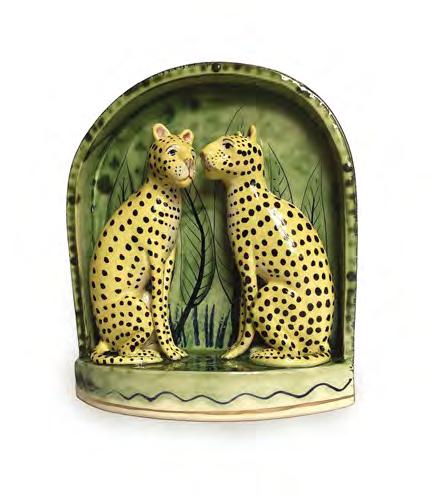
Terry’s current work is often, but not exclusively, hard-fired earthenware. Thrown, slab-built and modelled forms are decorated with coloured slips and glazes and may be reworked over several firings using enamels and lustres. These techniques, used in new ways, have enabled the production of work which retains the freshness and immediacy of traditional pottery whilst maintaining a strong contemporary feel.
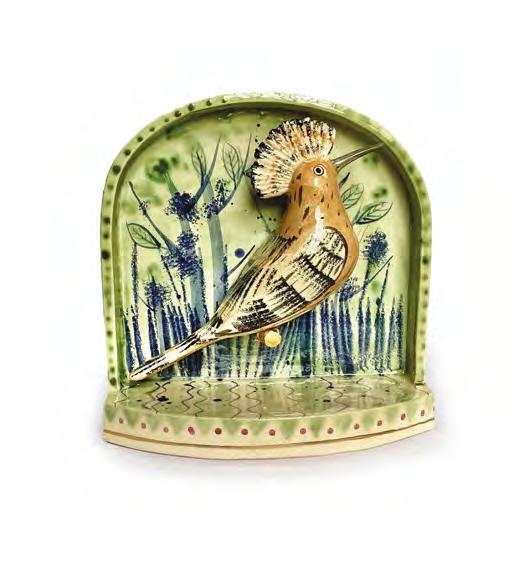

Von Hartmann has lived in Scotland for decades, originally based in the Scottish Borders, she now lives and works in the heart of Edinburgh's Old Town. She is an artist known for her works on paper in water-based media and wax crayon and also specialises in printmaking. Her imagery is highly personal, a psychological iconography which must remain obscured; her forms, motifs, script, flora and architecture are revealed in a folk tale with no beginning or end. Revealed as they float past on a liquid surface, or retreat, detail rubbed back like the surface of an ancient sampler. Sylvia von Hartmann was born in Hamburg, Germany; she studied at the Werkkunstschule, before attending Edinburgh College of Art (1963–66).
Public collections include: Scottish Arts Council; National Galleries of Scotland, Edinburgh; City Art Centre, Edinburgh; Aberdeen Art Gallery & Museums.

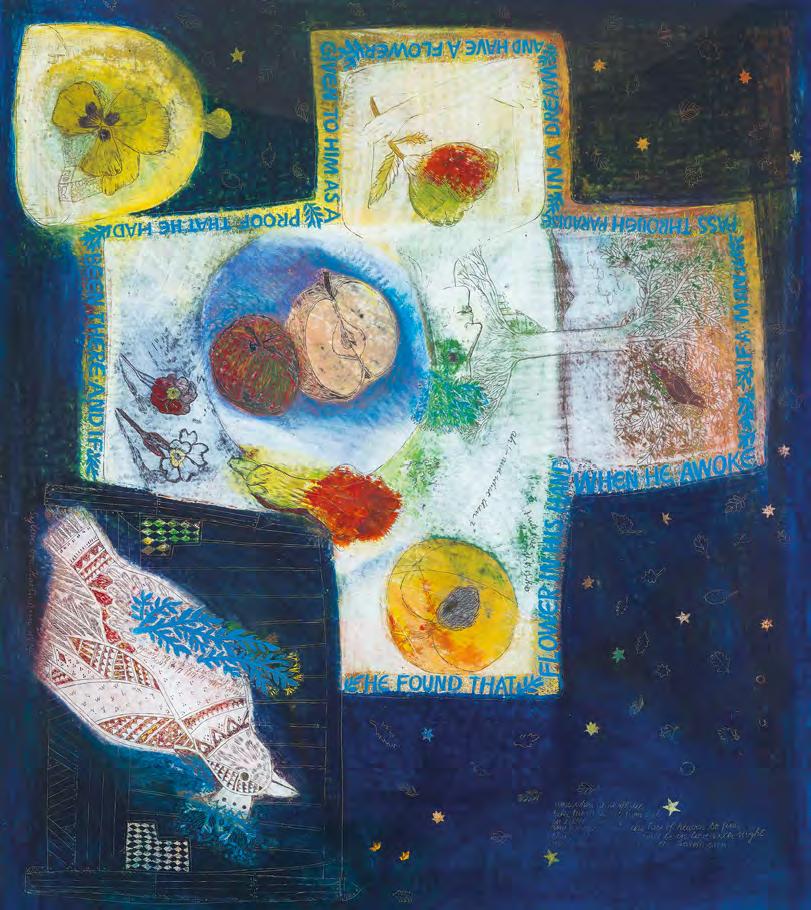
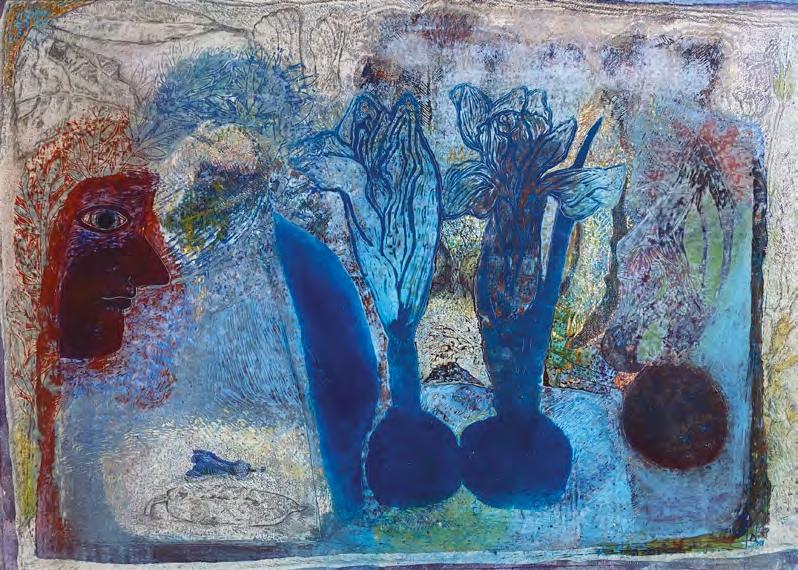



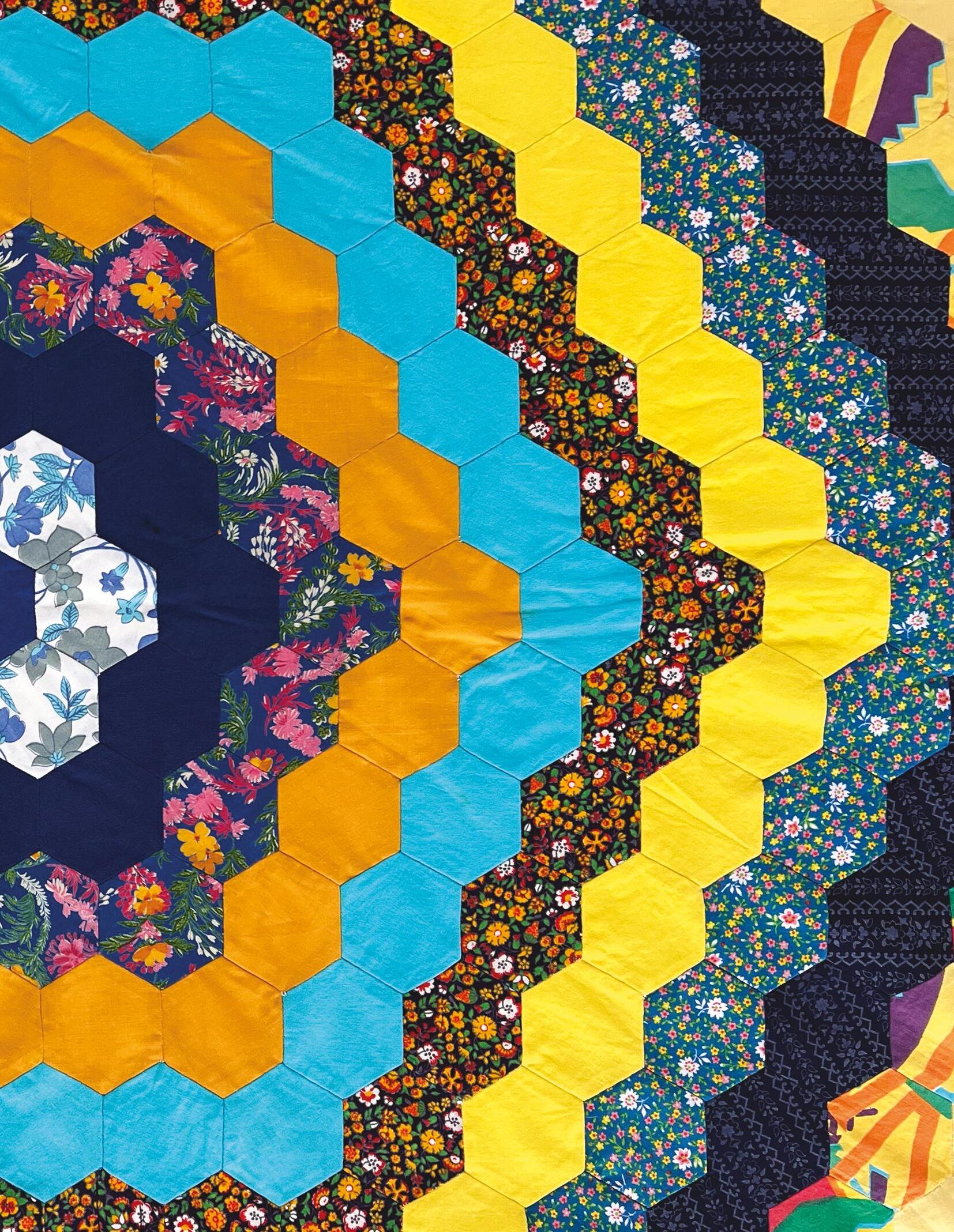
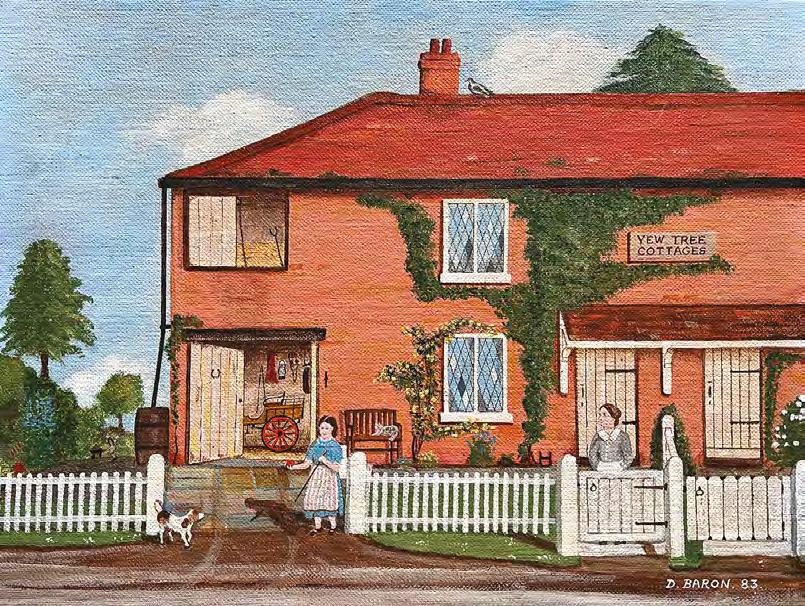
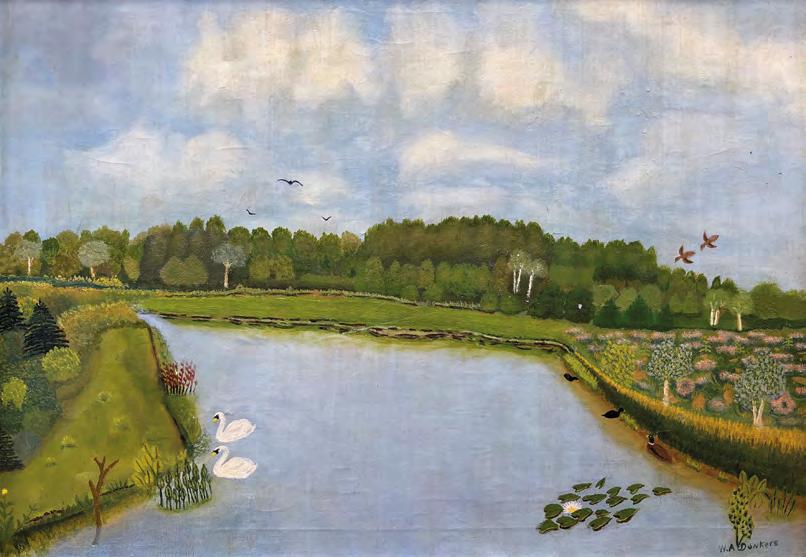
A stylish and interesting yew and elm comb back windsor chair. The comb back with a wonderfully stylish shaped and carved pierced yew wood vase has eight spindle supports, with shaped yew wood arms supported on turned and tapering uprights. The yew wood has a great colour, wear and patination. The scooped solid elm seat with crinoline stretchers beneath, rests on four turned and tapered legs which have a slightly splayed stance.
Georgian Antiques was founded in 1978 by Padraic Dixon and is based in Abbots Whisky Bond in Edinburgh. With over 50,000 square feet set over five floors in the historic area of Leith, Georgian Antiques have one of the largest selection of antiques in Scotland.
Georgian Antiques offers an expansive, accessible, historical experience and is the place to find anything from a prop for a television commercial to that special item of furniture for the home.

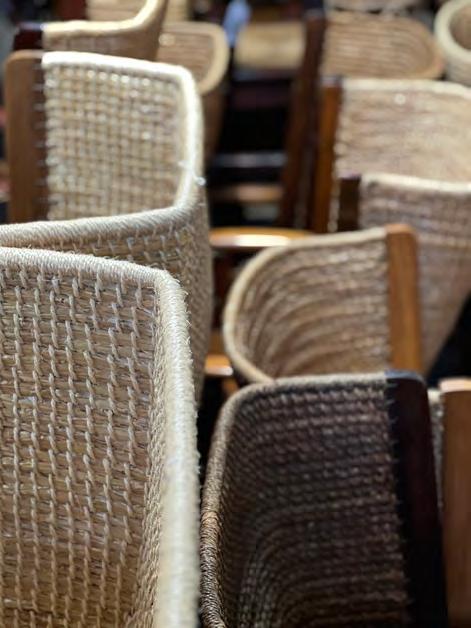
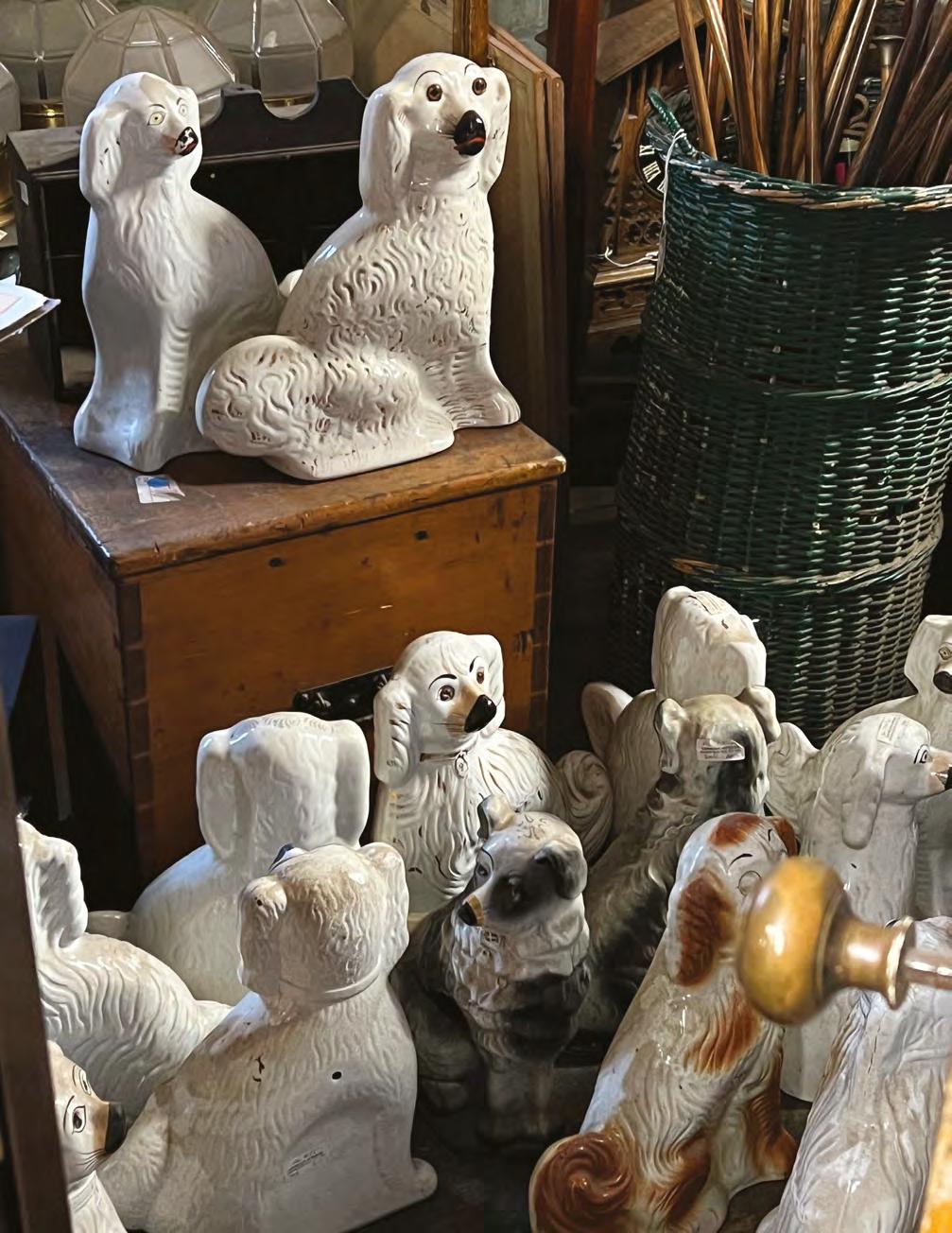
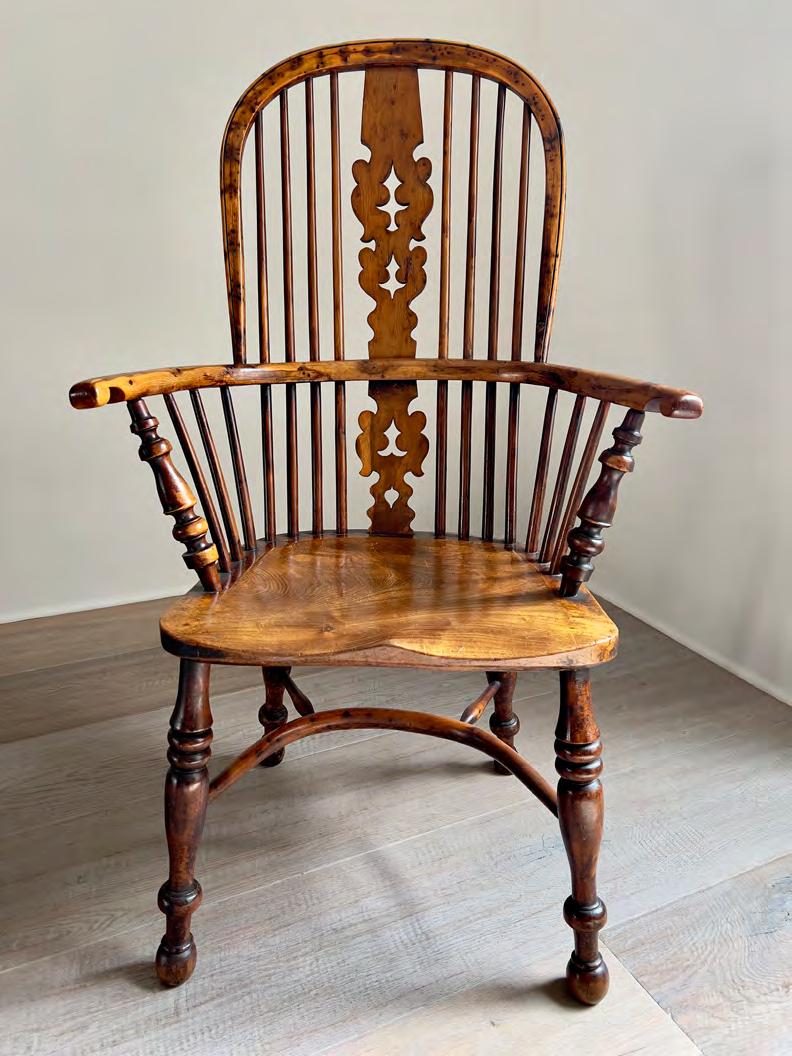
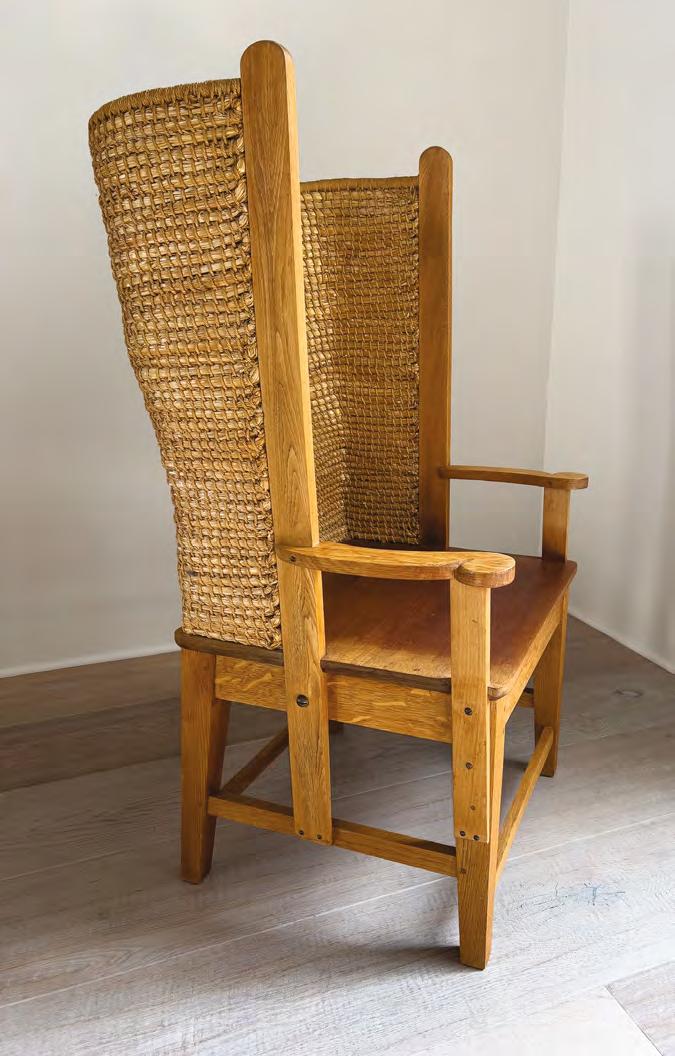
Rare early design pine-framed Orkney chair. The classical Orkney U shaped straw back with a row of open decorative marram straw high up on the back, with slightly turned pine arms and a detachable rattan seat. Supported on turned legs with peripheral stretchers over small turned feet.
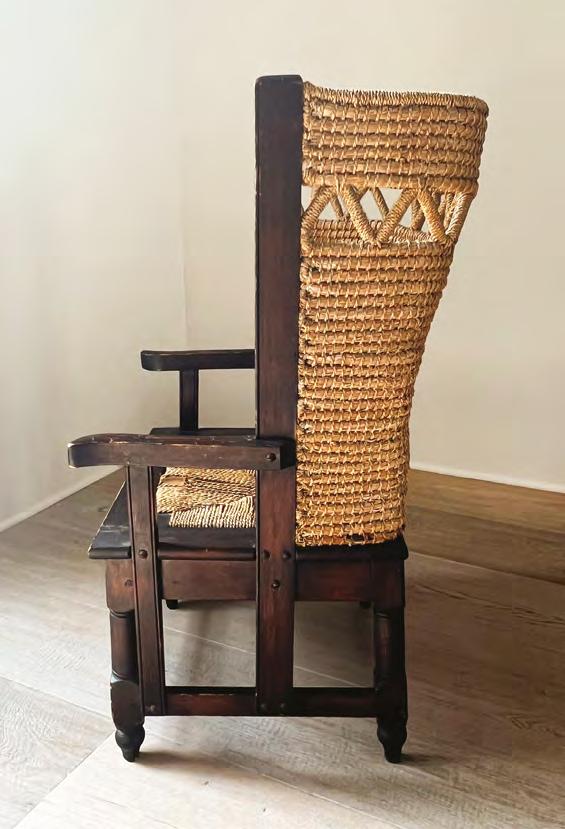

Comely Bank Road is situated in the heart of Edinburgh’s leafy Stockbridge. Historically, the ground was part of Sir William Fettes's estate and the original development was a terrace of Georgian townhouses built to face the main east–west road. It was designed by the architect Thomas Brown in 1817. The writer Thomas Carlyle lived, with his wife Jane Carlyle, at 21 Comely Bank Road from 1826 to 1828. At that time, the terrace at the western end of the road was the last row of houses in Edinburgh before the village of Blackhall. In this collage from 1982, Carola Gordon has captured the detail of the houses and gardens, recording the character of the place and creating a story from Edinburgh's literary history.
Carola Gordon was born in Lucknow, India in 1940 and studied in Pietermaritzburg, South Africa, graduating in English and Fine Art. After gaining her master’s degree from New Hall College, Cambridge in 1963, she studied fine art at Edinburgh College of Art from 1963-1965. Gordon went onto teach in the fine art department at the University of Natal, South Africa before moving to Edinburgh in 1977. She is a multidisciplinary artist who works in oil, watercolour, printmaking and collage. Gordon’s central subject matter is her everyday surroundings, with a special interest in buildings and townscapes which she captures in intimate detail. Gordon was a regular gallery artist with The Scottish Gallery in the 1980s.
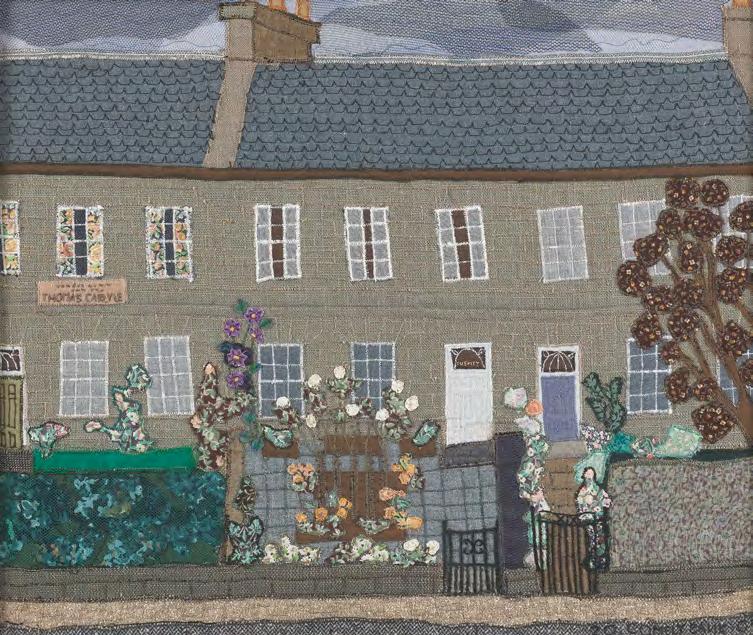
Farm Steading on Good Friday is a lovely, freshly painted watercolour of a farm and its buildings and surrounding landscape. A steading traditionally marks the boundary of two parishes. This was painted in 1950 at a time of austerity and continued rationing post
war. The artist R.G. Howard, of whom we know nothing, is making a celebration of the place and specific season. The ramshackle buildings with chickens in the foreground and landscape beyond herald in the spring and there is an air of joyous optimism.
142. Farm Steading on Good Friday, 1950 watercolour
27 x 40 cm

Town Square, Brittany is a boldly painted, naïve townscape which complements the character of the place. It is a rare example of Manchester’s early work from the 1950s, stylistically relating to the work of Alfred Wallis and L.S. Lowry. The female figure in the right-hand corner is a bigoudène - she wears a traditional lace head dress typical of southwest Brittany. The crucifixion is typical of sculptures found in traditional Brittany town squares. The central figure in the yellow hat is wearing peasant sabots. The dramatic dark sky adds electricity to the composition and the original moulded frame lends vintage character.
George Manchester was a postwar artist who lived and worked in London. He specialised in townscapes, landscapes and English coastal scenes and also worked on large scale murals. He spent periods in France, Spain and Italy. Manchester studied at Beckenham School of Art 1946-50 and the Royal College of Art, London from 1950-53 under John Minton and Ruskin Spear. During his lifetime he exhibited at The Royal Academy, Leicester Galleries, Beaux Arts London, and had a one man show at the Redfern Gallery, London in the 1950s.
PROVENANCE

Michonze is primarily known as a landscape and figurative artist. A marked majority of his paintings include depictions of groups of people - families, villagers, peasants, children and most works evince an allegory or narrative of some kind. His painting is imbued with mystery, a sort of hidden dialogue which enhances the appeal of his work. In a 1959 letter to the British art critic Peter Stone, Michonze wrote of his work: My subjects have no subject. They exist only for a poetic end. If the poetry is there, the canvas is complete. No histories. Only pure poetry, preferably untitled.
Grégoire Michonze was a RussianFrench painter, born in 1902 in Kishinev (Bessarabia), Russian Empire. From 1919–1922, he studied at a local art academy painting Russian icons and learned to master the technique of painting with egg tempera. In 1922, Michonze moved to Paris and met Max Ernst who introduced him to the Surrealists, notably André Breton, Paul Éluard, Yves Tanguy and André Masson.
During this time, he developed a strong friendship with the Jewish École de Paris artist Chaïm Soutine and later exhibited at the Salon des Surindépendants. Michonze described his work at these exhibitions as Surreal naturalism . He fought in the second world war and in 1943, he settled into a studio on Paris's Rue de Seine. In 1949, the French Fund for Modern Art acquired his now seminal canvas La Moisson (The Harvest). From 1954–1977, the artist continued and perfected his life's work. He enjoyed extended stays in the United States where he spent time with his close friend, the American author Henry Miller. He made several trips to Scotland, spending time with Torquil and Isabel Nicholson in Edinburgh and Plockton, where the couple moved in the late forties. The Scottish National Portrait Gallery holds a fine pencil head of Nicholson by Michonze. In Plockton he met Denis Peploe and the poet and playwright Sidney Goodsir Smith. He died of a heart attack in his studio at Rue de Seine in Paris on December 29, 1982.
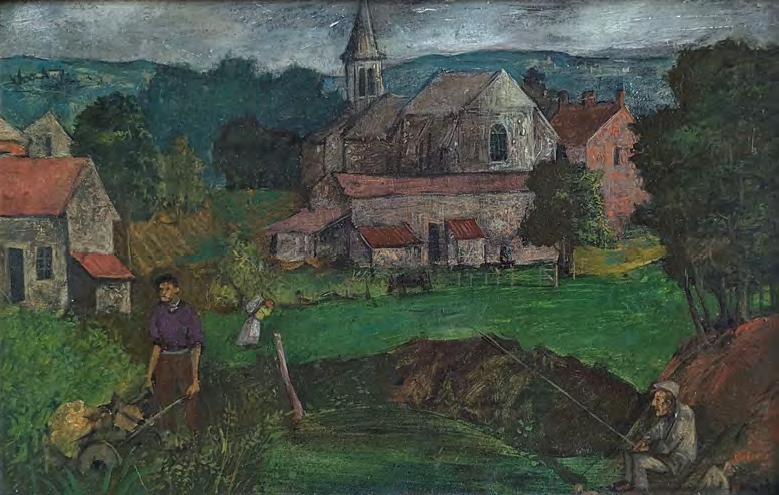
Asiru Olatunde (1918–1993) was a Nigerian artist and blacksmith. He is associated with a small group of artists who were part of a creative community known as the Oshogbo School of Art. His subject matter combines Yoruba mythology and Biblical stories intertwined with local folklore. Olatunde went on to develop a repoussé metalwork technique, which involves the shaping of copper, aluminium and iron.
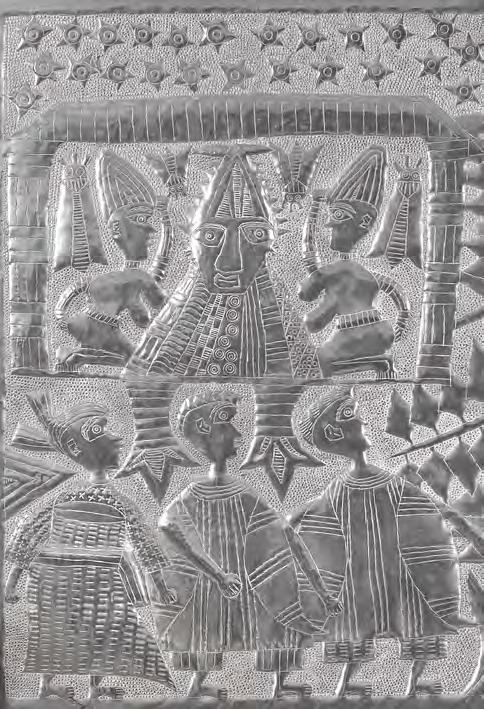
Born into a family of blacksmiths before illness forced him to stop in the 1960s, he transitioned into fine art on the advice of Ulli Beier and Suzanne Wenger in 1961. Ulli Beier was the founder of the Nigerian magazine Black Orpheus from the 1950s and an important champion of artists and writers from Africa and Papua New Guinea, where he relocated after the Nigerian civil war in 1967.
Asiru’s work was not concerned with realism. His line was sensitive, the mood poetic. There was always a peaceful warmth about his work that reflected the personality of the artist himself. Ulli Beier
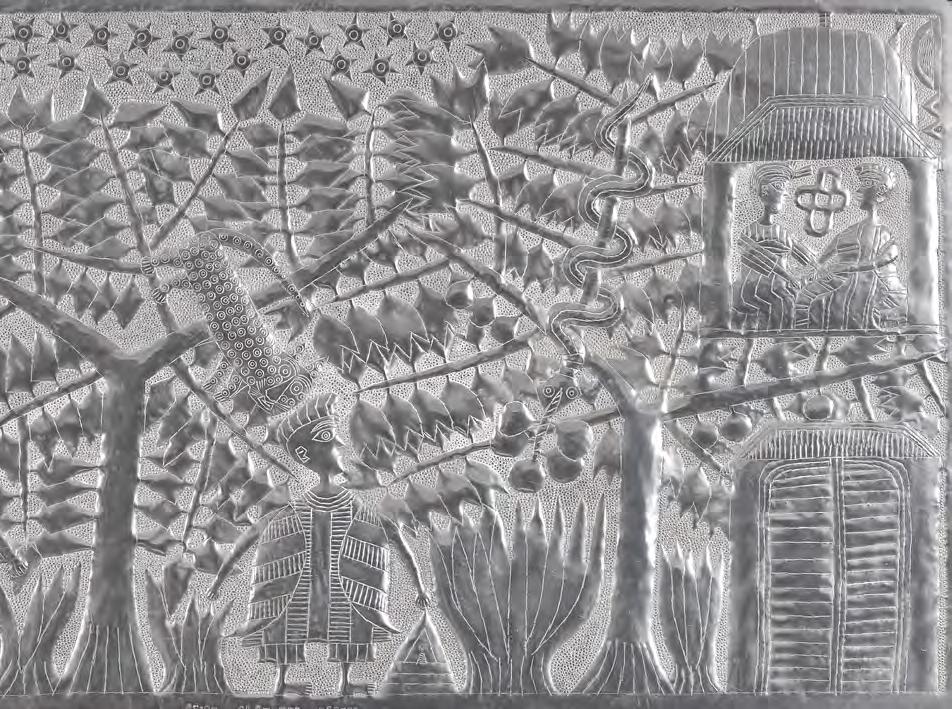
Margaret Kemplay Snowdon was born in Leeds, Yorkshire in 1878. Her parents were Richard Kempley Snowdon, Head Curate of St Johns, Leeds, and Mary Louisa Milnes-Wright. She was called Margery by the family and this name stuck for the rest of her professional and social life. She became a close friend of Vanessa Bell when they studied together at the RS Schools and extensive correspondence between them is kept in the National Archives. Virginia Woolf referred to her as ‘old Snow’. Snowdon was an active exhibitor for twenty years after the Great War, when with enfranchisement and emancipation flowing from the Armistice, woman artists found a new-found confidence to pursue their artistic careers. Margery and her two sisters never married. Neglect continued to be the common experience for many woman
artists and after the Second World War Snowdon’s association with the Bloomsbury Group seemed ‘old hat’. She lived in relative obscurity, dying in Cheltenham in 1965, recorded by the London Gazette as ‘spinster’. Why? Her painted still lifes are both beautiful and beautifully crafted, her subjects more than dry, studio props: baskets of fruit, cut flowers, a Staffordshire figure painted with lively strokes and perfect tonal understanding. Still Life with Mushrooms is a very fine example, making a compelling comparison with William Nicolson (1872-1949) whose Mushrooms were acquired by the Tate in 1940. Snowdon is ripe for rediscovery, her trajectory making her an ideal pick for any survey of British easel painting trying to redress the misogyny which has characterised the art world for much of the last century.

Tim Stead, MBE, was a sculptor, wood artist, furniture designer and maker, photographer, poet, environmentalist, and out-ofthe-box thinker. He died in 2000 aged 48. In his lifetime, he made furniture for galleries, castles, cathedrals and even for Pope John Paul II for his visit to the UK, yet it was the intuitive, untutored response of ordinary people that most excited the artist. People delighted in his work’s warm honesty, and they wanted to live with it. Amongst his most well-loved public works are the interior of Café Gandolfi in Glasgow, the Millennium Clock in the National Museums Scotland, Edinburgh and the Oil Industry Memorial Chapel in Aberdeen.
Established in 2015 to raise funding to purchase The Steading and the Tim Stead Archive, The Tim Stead Trust aims to safeguard The Steading and Archive for the nation - confirming it as an influential and internationally significant example of Scottish craftsmanship and environmental philosophy, all for the benefit of local, national and international communities.
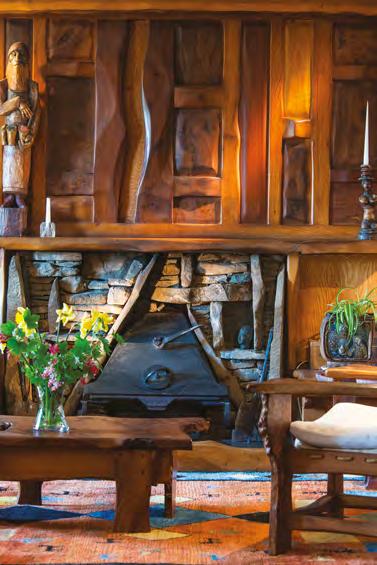
Although Stead’s early years in Scotland were single-mindedly devoted to furniture, it was 'sculpture in disguise'. Through respect for the environment he committed himself to native timbers, specialising in elm so heavily burred that other furniture makers rejected it.
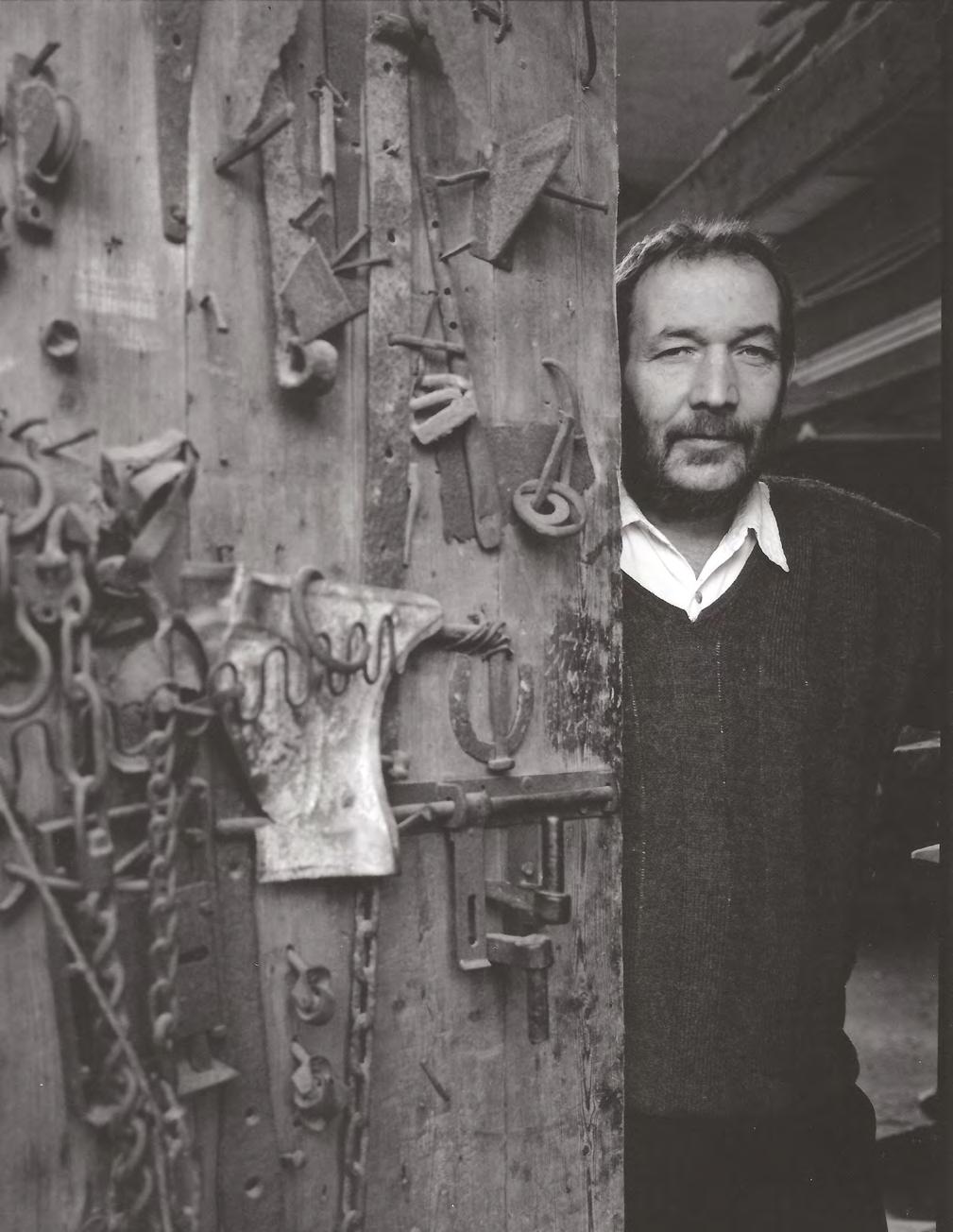
This extravagant, fantastical essay in burr elm, is the last in a series of five beds made by Stead between 1975 and 1995. In true Stead fashion, the form links the deep past with a kind of indeterminate future – what the filmmaker Murray Grigor with characteristic, elegant wit termed ‘Pre-Hellenic Post Modernism’.
The bed was made at a time when there was a surfeit of cheaply available elm, the silver lining in the cloud we know as Dutch elm disease. Stead was one of the first artist-woodworkers to unlock the mysterious inner structures and patterns of burr elm and the bed, by definition on a large scale, allowed imagination and material to collide, giving Stead the intellectual and physical space to explore the vast, unknown hinterland the wood offered.
As another astute Stead commentator, Andrew Guest, noted the artist was obsessed by atavistic thoughts, so what better place to lay these bare in the place most of us begin and end our lives, where we procreate and seek solace and comfort?
At the ‘Scotland Creates’ exhibition in Glasgow,
in 1990, Stead exhibited a reinterpretation in wood of one of the dwellings at Skara Brae, Orkney’s Neolithic village that lay buried for thousands of years until uncovered by a storm in the winter of 1850.
This bed continues Stead’s pre-occupation with the deep past. Its corbelled roof is an echo of the technique favoured by the builders of stone structures such as Maes Howe, the burial chamber illuminated by the Sun’s rays for a few minutes on the winter solstice.
In the bed, lying on one’s back, looking upwards, it’s possible to stare back into the abyss of time and to be moved by the same energies that inspired the neolithic builders of Orkney. In this curtained bed, as in Maeshowe, in the words of Orcadian poet, George Mackay Brown, … The blackness is as solid as a / stone that locks a tomb. / No star shines here…
Here we may sleep and dream, as secure as in the womb, temporarily untroubled and untouched by the colder outside world.
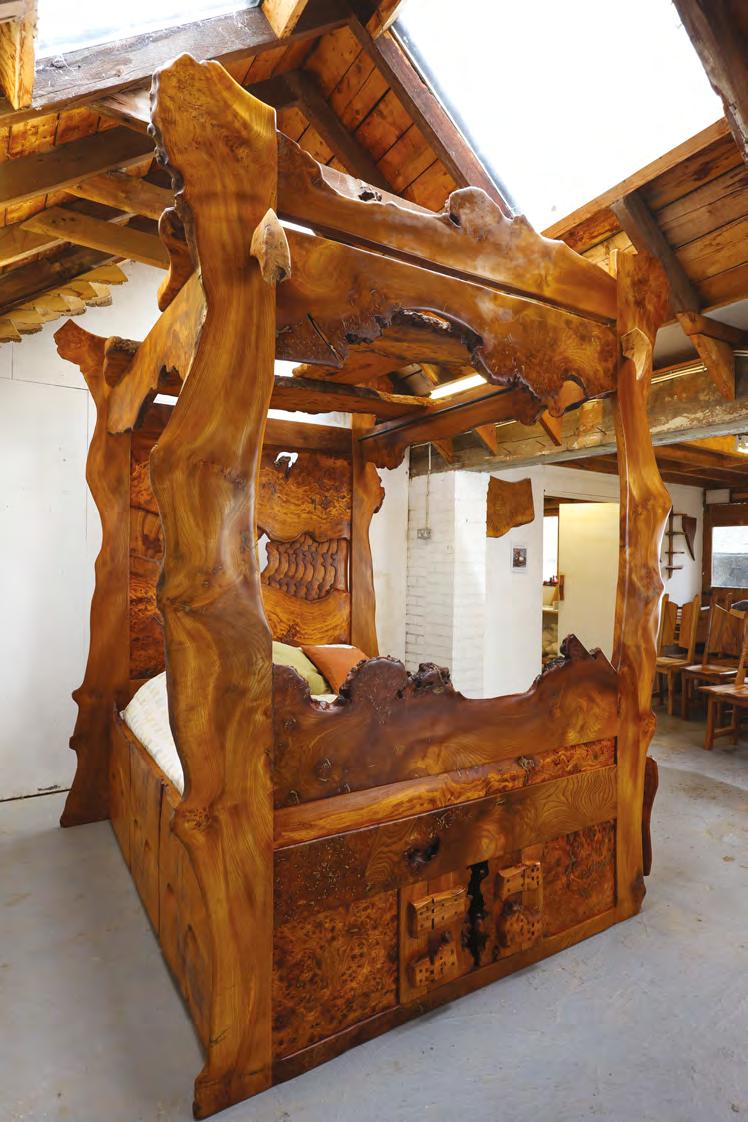
Tim Stead's Four Poster Bed, 1995 (details) locally courced Scottish burr elm finished with linseed oil H260 x W206 x D207 cm

Stead’s life and work manifested an integration that defies division: furniture, sculpture, photographs, poems, late nights around the dining-table, each were part of the same life that he grabbed with both hands, wringing out its very essence.
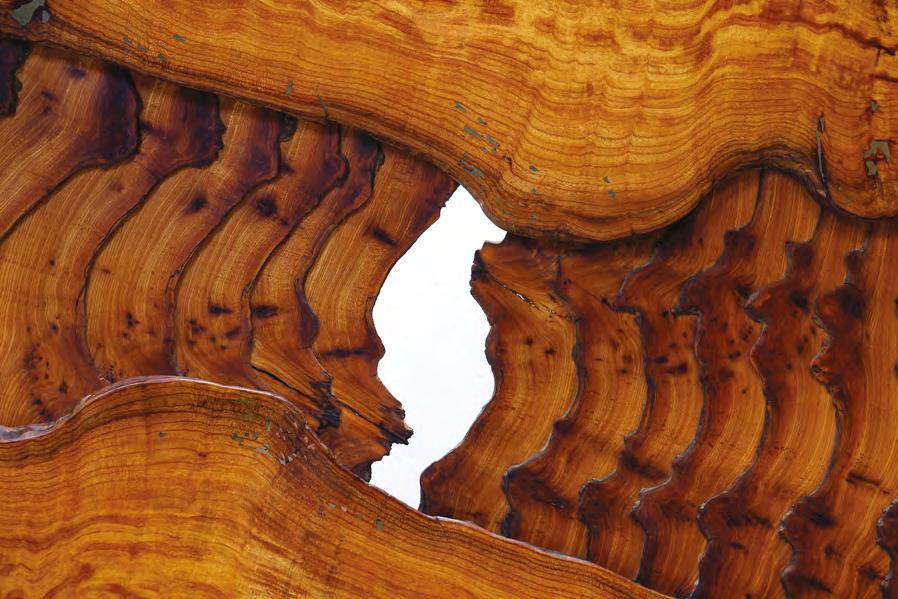
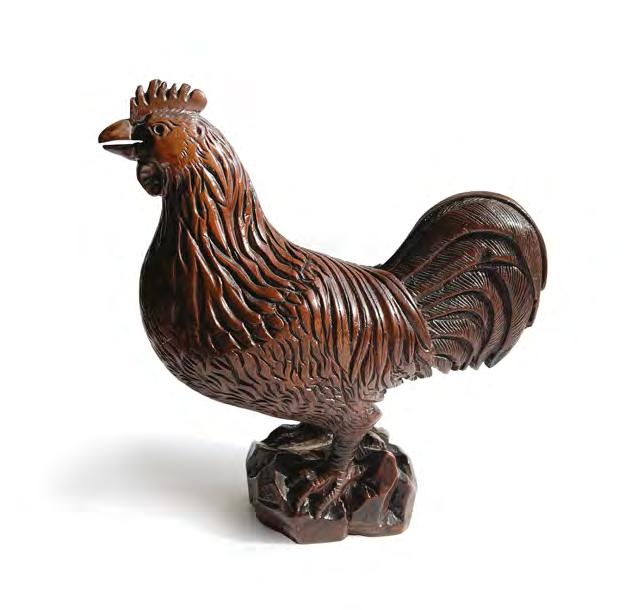
The Thrie Estaits was an emporium of wonders. Set up by Peter Powell in Edinburgh in the early 1980s, the shop on Dundas Street was a treasure trove of the eclectic, the beautiful and the quirky. It was hard to find a shop like it, and for nearly forty years it was the go-to for extraordinary works of art. He is now a freelance specialist in the decorative arts. Peter trained in silversmithing at Glasgow School of Art in the late 1960s and after graduating worked at Elders in Charing Cross, Glasgow.
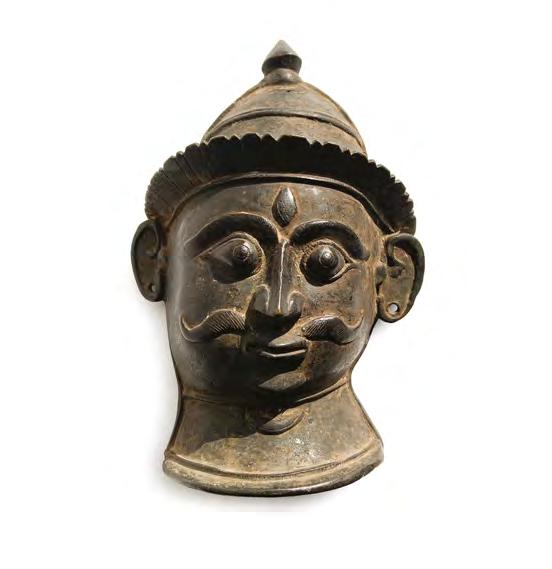
h 148.
H26
g
149.
mahogany
150.
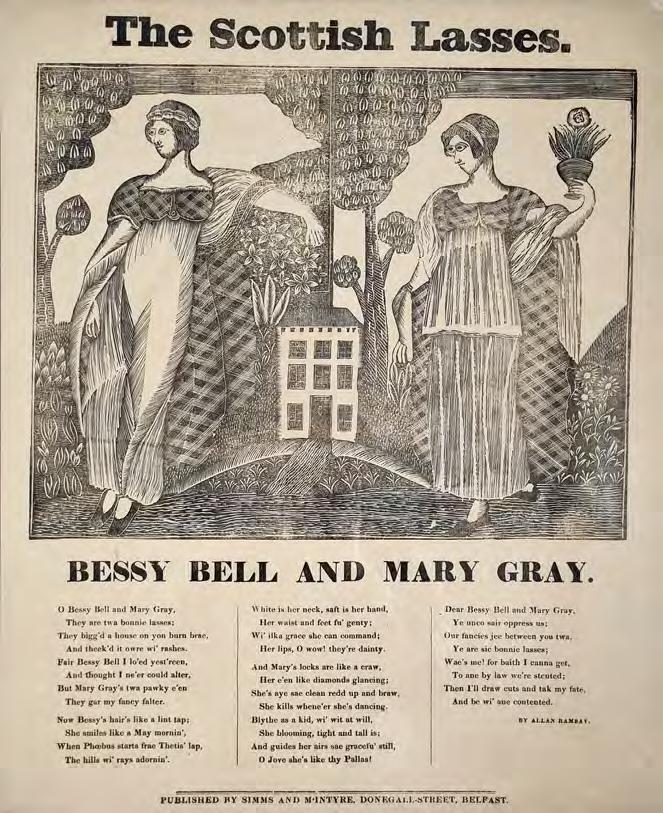
Carel Weight, CH, CBE, RA was born in London in 1908. His parents placed Weight with a foster mother, within a working class district. He would spend weekends in his parents' middle class household, and became acutely aware of the contrast between deprivation and affluence. From an early age he was sensitive to the unexpected - the shock of burning buildings or a bus mounting the pavement; these early experiences became part of his visual territory, and informed his social realism.
Irish Cottage is an astute observation of a rural farming community and the working houses which serve the farms. There is a partially obscured couple in the foreground wearing country attire, Carel Weight is quoted as saying: Even when I paint a landscape out of doors, and I say I'm not going to put any figures in; when I get back to the studio I always paint in figures; it would be too lonely without people.
Weight studied at the local Hammersmith
School of Art (1928-30). He taught art at Beckenham School of Art (1932-39). He exhibited at the Royal Academy and the Royal Society of British Artists, and was a committee member of the Artists International Association, which helped artists fleeing Nazi Europe. After being called up to the Royal Engineers, he taught with the Army Education Corps (1944-45) before being sent to Italy as an official War Artist (1945-46).
After the War, Weight was invited to teach at the Royal College of Art, London and became Professor of Painting 1957 where students included David Hockney. He was awarded a CBE in 1962. The following year he painted the mural Christ and the People for Manchester Cathedral, and in 1965 was elected RA, and was honoured with a one man exhibition at the Academy in 1982. His work is held in public collections: Tate, London; Victoria & Albert Museum, London; Imperial War Museum, London and the Government Art Collection. His work was in the private collection of David Bowie.
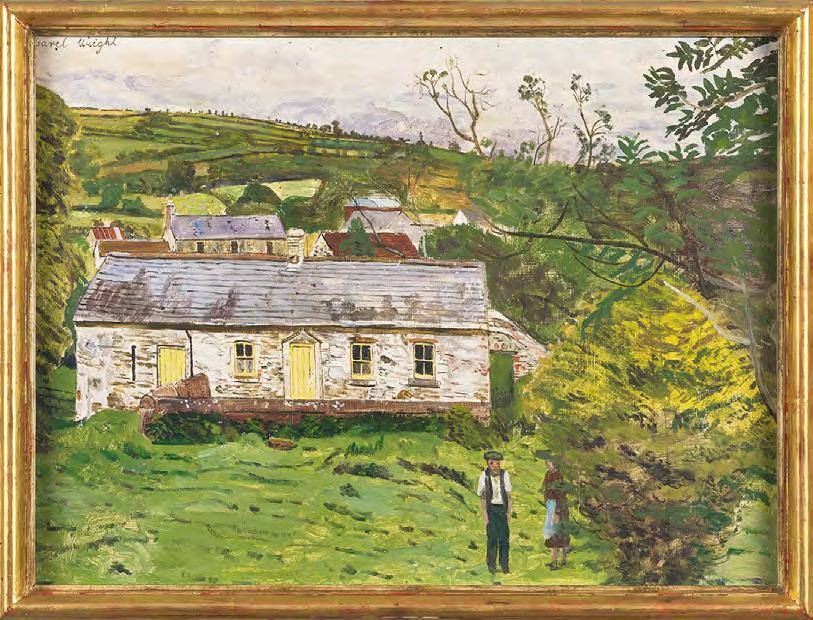

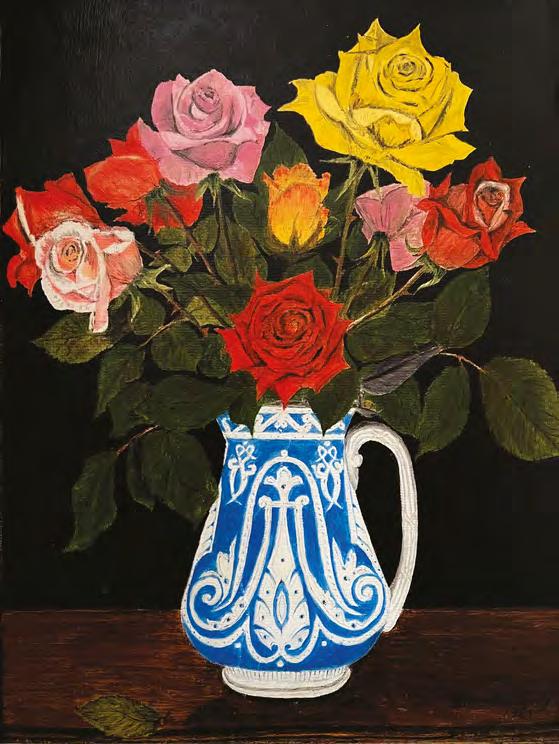
The Scottish Gallery would like to thank the following folk for their contribution to this exhibition and publication:
Mark Hearld
Martin Clark at Tilley Printing
Jonathan Christie
Jonny Hannah
Jonathan Gibbs
The Tim Stead Trust
Dr Giles Sutherland
Georgian Antiques
The Thrie Estaits
All the Artists!
Published by The Scottish Gallery to coincide with the exhibition
Folk at Heart
31 August - 23 September 2023
Exhibition can be viewed online at: scottish-gallery.co.uk/folkatheart
ISBN: 978 1 912900 71 8
Printed by PurePrint
Front cover letterpress design by Martin Clark at Tilley Printing
Publication template designed by Jonathan Christie
Produced by The Scottish Gallery
All rights reserved. No part of this catalogue may be reproduced in any form by print, photocopy or by any other means, without the permission of the copyrightholders and of the publishers.
THE SCOT TISH GALLERY
C ONTEMPORARY ART SINCE 18 42
16 DUNDAS STREET • EDINBURGH EH3 6HZ
+44 (0) 131 558 1200 • mail@scottish-gallery.co.uk • scottish-gallery.co.uk
